Blog
This is where you’ll find all the latest updates from Restore Our Planet.
Two Beavers Born in Cornwall Mark Conservation Milestone
July 17, 2025
Two baby beavers have been born at the Lost Gardens of Heligan, Cornwall. The event, while seemingly modest, carries profound implications for conservation efforts across Britain. Beavers were once a familiar presence across the nation’s rivers and wetlands, but were hunted to extinction more than four centuries ago for their pelts and perfume extracts.
The parent beavers, named Twiggy and Byrti, were introduced into a captive breeding enclosure on the Heligan estate in 2023 and early 2024. The habitat, crafted in collaboration with the Beaver Trust and Natural England, was intended to give the animals the conditions they need to thrive: slow-moving water, abundant vegetation, and, crucially, peace from human interference. For months, the team watched closely for signs of success, unsure if the animals would adapt. The arrival of the kits confirms what many had hoped: not only have the beavers settled in, they have started a family.
Staff at Heligan have expressed cautious delight. Young beavers are notoriously elusive in their first few weeks. They stay hidden in the lodge, only venturing out when strong enough to swim. It is believed the kits were born earlier this spring making their emergence now a sign of growing confidence and comfort to their surroundings. The team has been monitoring their development from a respectful distance, using trail cameras and signs in the landscape to piece together a picture of how the young family is progressing.
This development is more than just a charming story about woodland creatures. Beavers are considered “ecosystem engineers” for a reason. As we have previously covered, their presence dramatically reshapes the environments they inhabit. As they build dams and dig canals, they create wetlands that support a wide range of life from dragonflies and frogs to bats and birds. Their work also slows water flow, which can reduce downstream flooding and help maintain moisture in the landscape during dry spells.
Cornwall, like many parts of Britain, faces increasing challenges from extreme weather. The natural water management that beavers provide is not a silver bullet, but it is a low-cost, low-impact way of building resilience into the land. Already, farmers and landowners involved in beaver projects elsewhere in the country (where beaver populations are now believed to be between two or three thousand) have reported better water retention, improved soil quality, and a noticeable increase in local biodiversity.
The birth of the kits also hints at a future in which beavers might return to the wider Cornish countryside. While the Heligan enclosure is secure and closely monitored, it is part of a national movement pushing for wild releases. Earlier this year, the government granted licenses for free-living beavers to be released into English waterways for the first time in centuries. Cornwall Wildlife Trust is already preparing for such a step, with plans underway for a wild release in the Par and Fowey catchment later this year.
For now, the young beavers remain close to home. They will likely stay with their parents for a couple of years before setting out to form territories of their own. It is too soon to say where that journey will take them. But their birth marks a turning point, not just for Heligan, but for the broader story of rewilding in Britain.
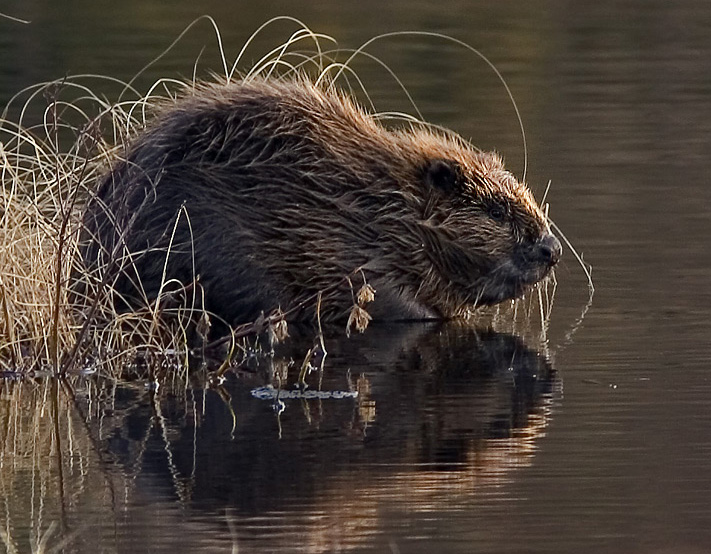
European BeaverHarald Olson
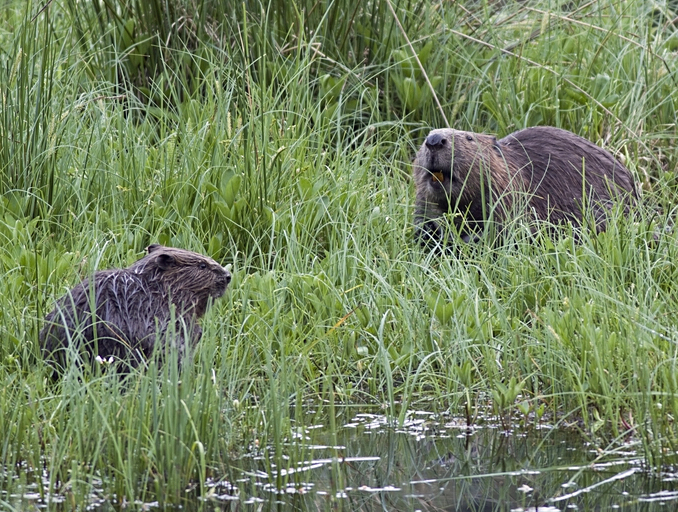
Mother and kit
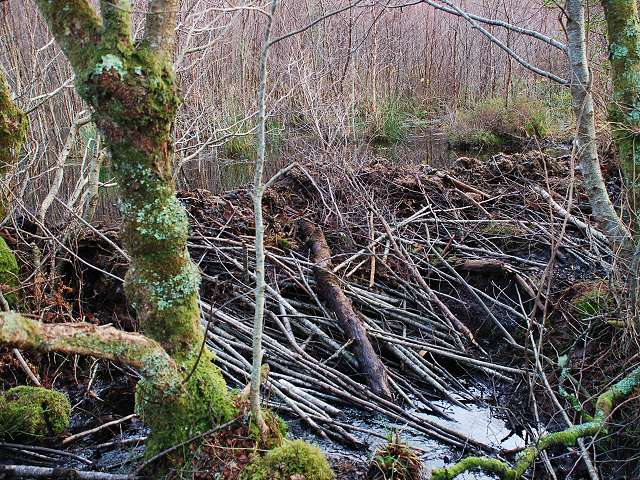
Beaver dam
Record-Breaking Butterfly Boom Marks New High for British Rewilding
July 10, 2025
On July 1st, conservations at the acclaimed Knepp Wildland farm, regarded as one of the origins of the current ‘(Re)Wilding’ movement under the dedicated supervision of proprietors Isabella Tree and Charles Burrell, recorded an astonishing 283 purple emperor butterflies in one day. This figure is believed to be the highest ever daily count of the vulnerable yet striking Papilionidae native with its iridescent wings.
The purple emperor, Apatura iris, is a species long cloaked in mystique. Males spend much of their lives high in the tree canopy, descending only to feed on aphid honeydew or animal dung. For much of the 20th century, their numbers dwindled, as has so often been the case due to habitat loss and the destruction of woodland edges and the sallow trees essential for their breeding.
Knepp’s suite of rewilding projects have been steadily rolled out over their 3,500 acres of former arable land over the past decade. The pioneering couple have traded in intensive agriculture for a bold experiment in ecological restoration. Rather than adopting the micromanaging strategies that have characterised conservation for generations, they have chosen to adopt a more radical ‘laissez faire’ philosophy which allows nature to shape the dynamic processes of ecosystems.
The results have been remarkable. Alongside the rise of the purple emperor, Knepp has seen the return of turtle doves, nightingales, and even nesting white storks, species absent from much of the English countryside for generations. Beavers were reintroduced in 2020 and are now reshaping watercourses in ways that benefit wetland flora and fauna alike.
“This is what nature does when you stop trying to control it,” Said Tree, who is also author of the eminent book, Wilding, which tracks their early experiences. “By creating the right conditions, sallow scrub, open rides, undisturbed woodland margins, we’ve given this incredible butterfly the chance to thrive.”
She’s not alone in her enthusiasm. Neil Hulme, a butterfly expert with Sussex Wildlife Trust, has spent years monitoring purple emperor populations. “Knepp has the largest and healthiest population I’ve ever seen,” he said. “To walk among dozens of them on a summer’s day is like stepping into a fairytale.”
The couple’s approach rejects the planting of trees in tight rows or the preserving of set-aside areas. They have also famously introduced free-roaming species such as Tamworth pigs, Exmoor ponies, red and fallow deer. These native herbivores uproot the soil, trample bramble bushes, and create a patchwork of open scrub, meadows, and, with time, regenerated woodland. This habitat variety is exactly what purple emperors, and many other species, need to thrive.
Knepp’s philosophy has been driving projects across the country and influencing landowners and councils across Britain.
The timing could hardly be more crucial. With Britain facing biodiversity decline and struggling to meet climate goals, rewilding offers a practical, hopeful path forward. It bridges conservation and climate resilience by restoring soil, increasing carbon storage, and protecting watersheds, all while bringing back the species that once defined our country.
Of course, rewilding is not without controversy. Some farmers remain sceptical, citing concerns over food production and land use. But the evidence from Knepp is compelling: nature’s recovery is not only possible but it can be rapid, vivid, and work to restore the connection of British people to their native soil.
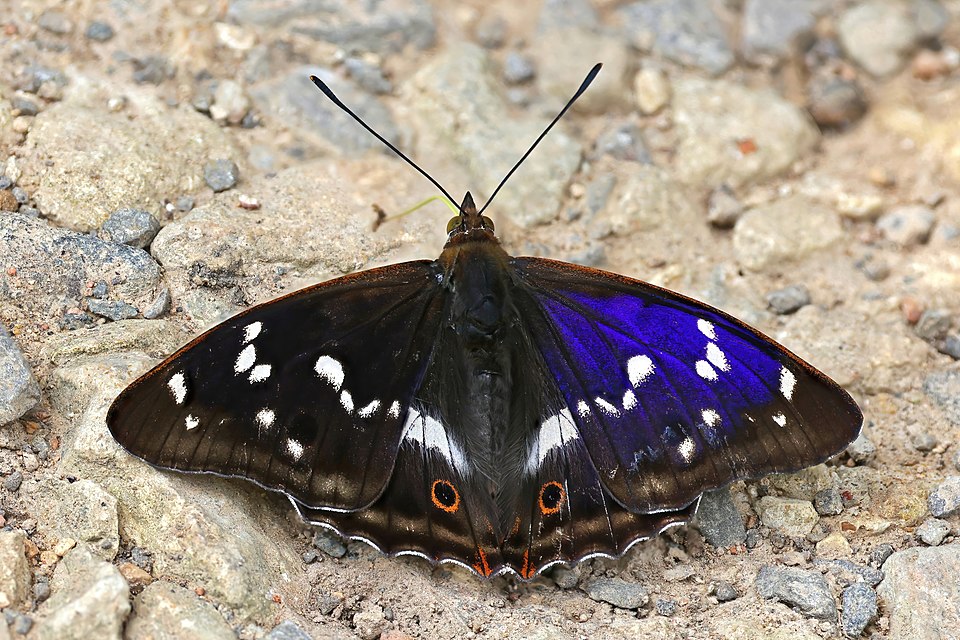
Male Purple Emperor ButterflyCharles J. Sharp
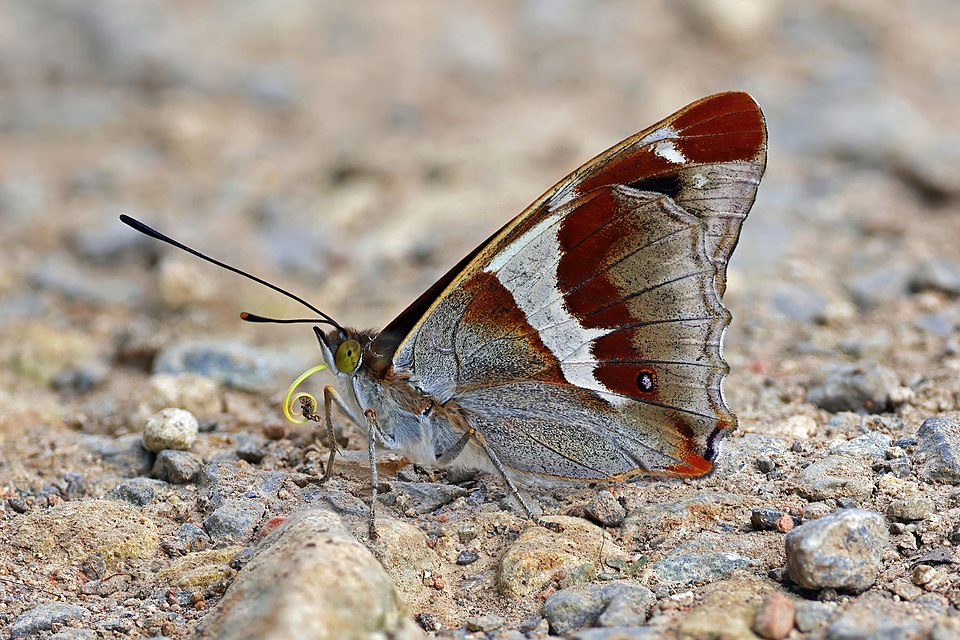
Underwing of the same male
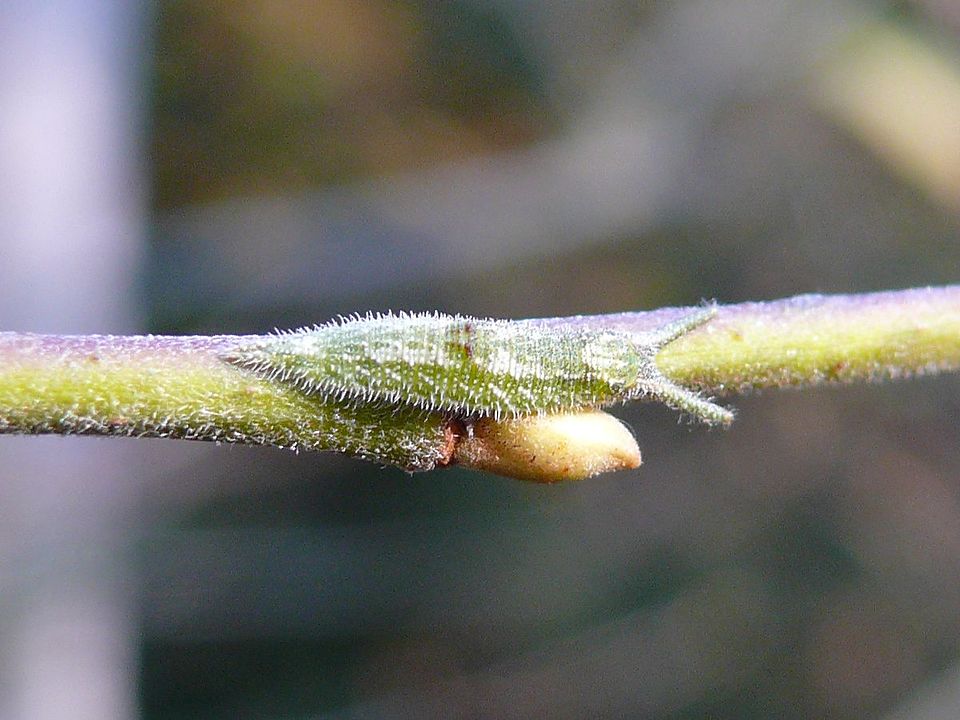
Purple Emperor CaterpillarHarald Supfle
Heath Fritillary Butterfly Makes a Remarkable Comeback on Exmoor
June 26, 2025
The heath fritillary (Melitaea athalia), one of Britain’s rarest and most threatened butterflies, is making a striking recovery on Exmoor’s Holnicote Estate, with more than 1,000 individuals recorded this spring. This a significant increase from the 600 recorded the previous year.
Once close to national extinction, the butterfly’s revival is the result of focused conservation efforts by the National Trust and Butterfly Conservation, aimed at restoring its preferred habitats through traditional land management techniques.
The heath fritillary depends on warm, open woodland clearings where common cow-wheat, its primary caterpillar food source, grows in abundance. Historically, the species thrived in areas shaped by rotational coppicing and grazing, practices that declined over the past century, causing severe habitat loss and population collapse.
At Holnicote, conservation teams reintroduced Devon red cattle to manage vegetation, cleared encroaching bracken and bramble, and brought back coppicing methods. These efforts have paid off: the butterfly has returned to three previously vacant sites, and numbers at another location rose from just four individuals last year to 186.
“We’ve been working to bring back the landscape the heath fritillary depends on. It’s a brilliant result and shows the value of long-term conservation planning.” Said Chris Luffingham of the National Trust.
The species emerged earlier than usual this year, likely due to a warm and dry spring; a development that may have helped boost the count. However, conservationists are cautious. Sudden cold snaps or prolonged rain during the breeding period could have a major impact.
“This success is encouraging, but there’s still a lot of uncertainty,” said Dr Caroline Bulman of Butterfly Conservation. “The species is incredibly sensitive to changes in the environment. We need to keep managing habitats carefully and monitor how the population responds over time.”
The work on Exmoor is already drawing attention from conservationists working elsewhere. Similar methods of restoring grazed and coppiced woodland with a focus on specialist food plants could support other declining butterfly species and pollinators in fragmented landscapes.
This positive story stands out against a backdrop of wider concern for UK wildlife. Recent studies have warned that more than 500 bird species could vanish globally in the next century due to climate change and habitat loss. In England, water abstraction has reached record levels, and debates continue over a proposed Planning and Infrastructure Bill that some fear could weaken local environmental protections.
In contrast, the heath fritillary’s recovery offers a tangible example of how conservation can work when it’s grounded in local knowledge and carried out over time.
Habitat work at Holnicote will continue throughout the summer, with plans to strengthen habitat links across the region. The hope is to establish a more stable network of sites where the butterfly can thrive, not just in Exmoor, but in other parts of south-west England.
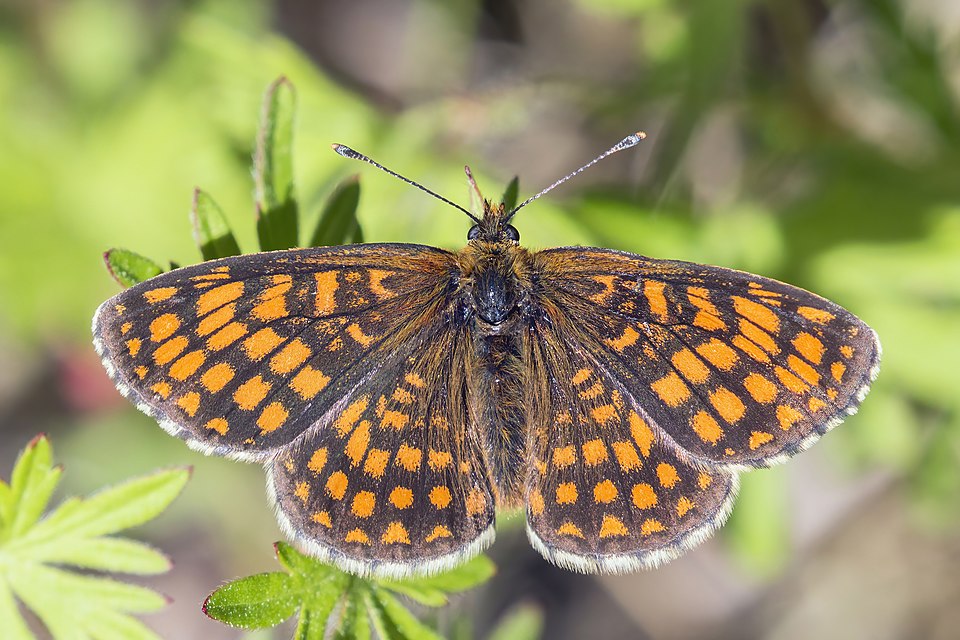
Heath Fritillary ( Melitaea athalia )
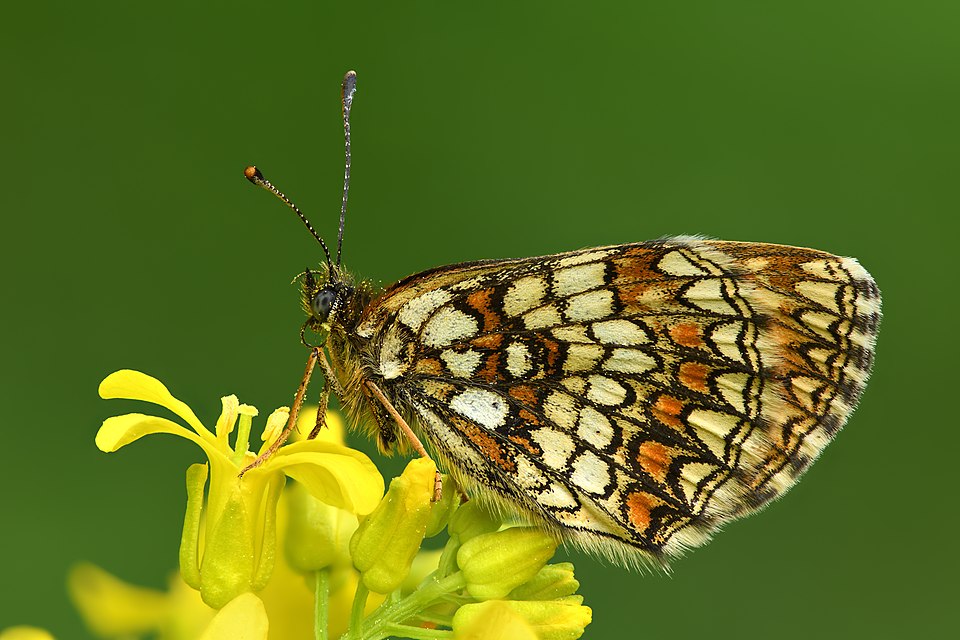
Melitaea athalia
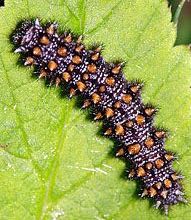
Heath Fritillary caterpillar
Atlantic Bluefin Tuna. A Textbook Case in Species Recovery.
June 5, 2025
Almost pushed to extinction through overfishing, the Atlantic bluefin tuna (Thunnus thynnus) is making a remarkable comeback across the oceans of Britain. This return has been a triumph for marine conservationists who have fought hard for implementing sustainable fishing practices and committed ongoing monitoring efforts which are now bearing fruit.
It’s a familiar and troubling pattern across the British Isles: once-abundant species like the Atlantic bluefin tuna thrived for centuries, only to be driven to collapse by the pressures of industrialisation, rapid 19th-century population growth, and the unchecked rise of commercial fishing, particularly in the North Sea and the South West Coast.
By the 1960s tuna had been almost fully extirpated; a sobering loss of not just one species, but of a vital component of marine ecosystems. Recognising the urgency of the situation, the International Commission for the Conservation of Atlantic Tunas (ICCAT) began enforcing strict quotas and monitoring in the early 2000s, paired with a moratorium on industrial fishing.
With time passing, sightings have been steadily increasing indicating a bounceback in overall population sizes, most notably in the Celtic and North Seas. Marine conservationists conducted a three-year tagging programme which tracked tuna across their migration routes. The subsequent data revealed their seasonal patterns and brought to light their spawning grounds. This vital data equips scientists and policymakers with the tools they need to implement further management plans to further support the tuna’s recovery.
In 2023, the UK held its first regulated commercial tuna fishing season in over six decades, carefully monitored and limited to a small number of licensed vessels. The season contributed an estimated £2.6 million to local economies, but more importantly, it was seen as a test of whether a commercially viable fishery could coexist with conservation goals. One of the licensed fishers, Angus Campbell from the Isle of Harris, is among those pioneering a model that combines careful harvesting with ecotourism. His boat, Harmony, not only supplies top-quality tuna to local and international markets, including Japan, but also runs catch-and-release experiences, helping to educate visitors about the importance of responsible fishing.
While the bluefin tuna is experiencing a positive trend in population growth, it is important to remain cautious. This highly prized fish, coveted on dinner plates around the world, will always be vulnerable and at risk of overexploitation. Therefore, authorities must maintain efforts for sustained monitoring and enforcement of laws.
Advocacy groups are also calling for stronger international cooperation and for Britain to lead by example in implementing long-term catch-and-release policies, enhanced marine protections, and continued investment in research.
The tentative return of the Atlantic bluefin tuna to British waters is a testament to nature’s persistence and ability to recover if responsibly managed. With ongoing commitment and continued advocacy, collective work has shown that we can begin to mend what has once been lost. An encouraging sign for other lost species severed from our more naturally intuitive past.
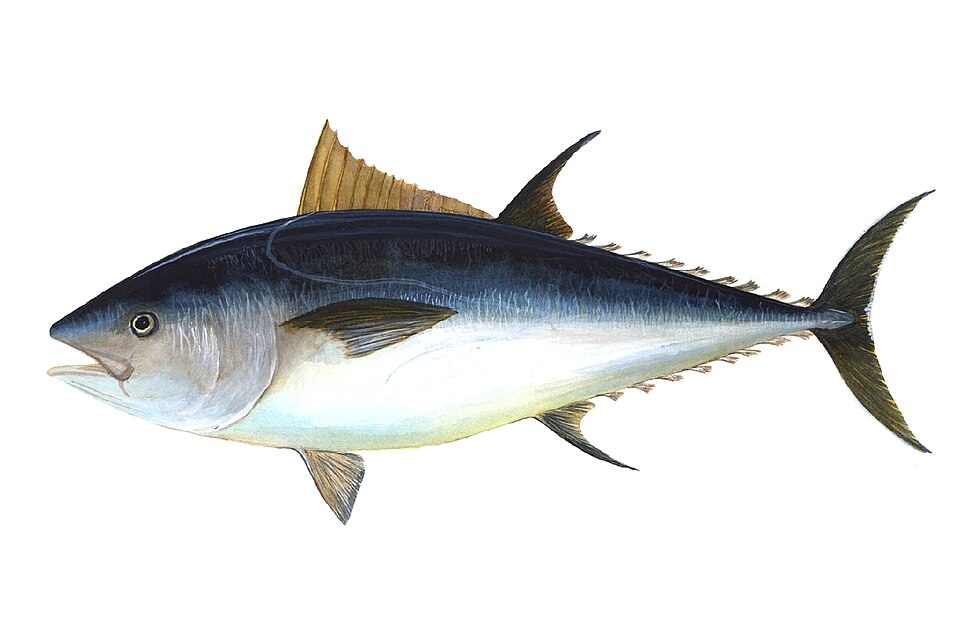
Bluefin Tuna ( Thunnus thynnus )
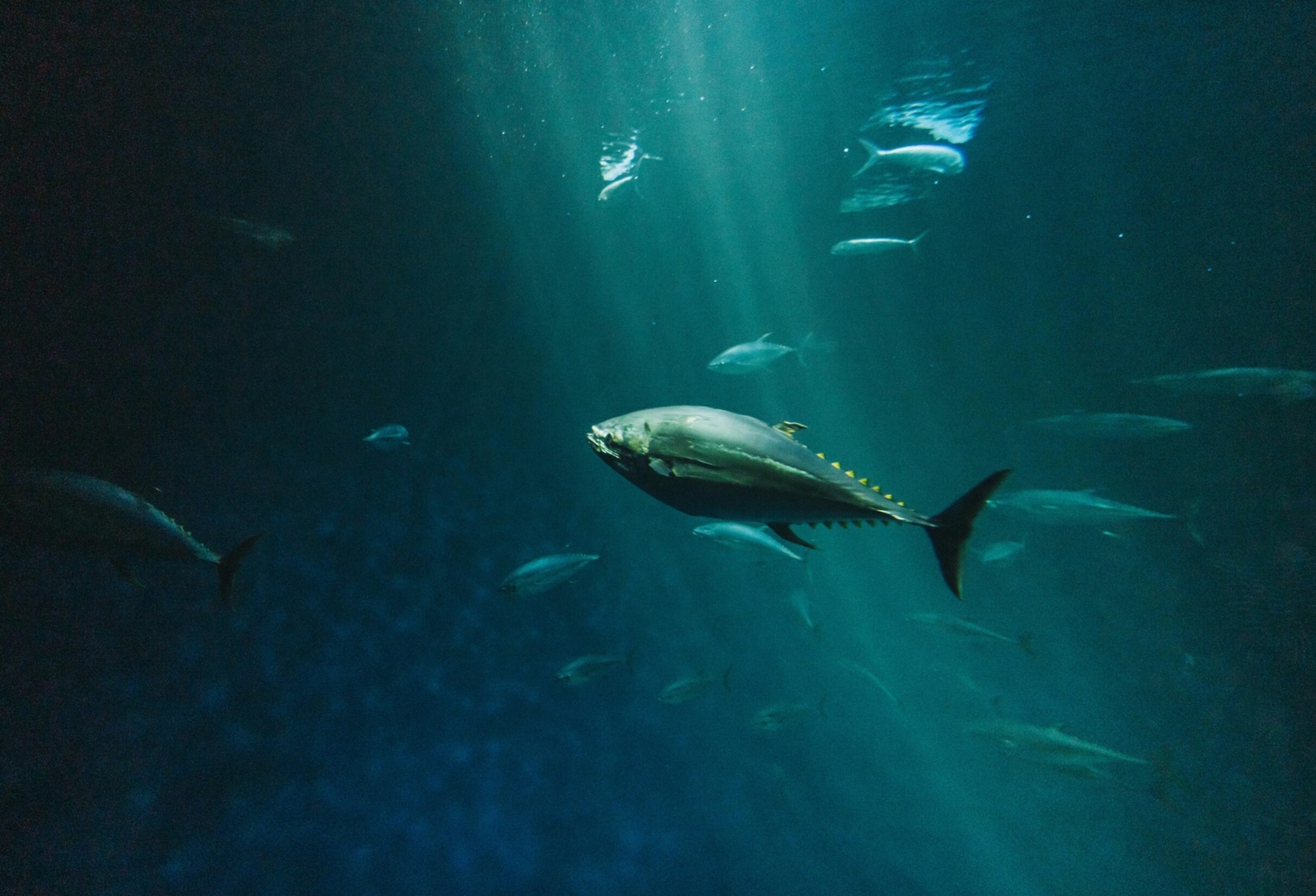
A group swimming.
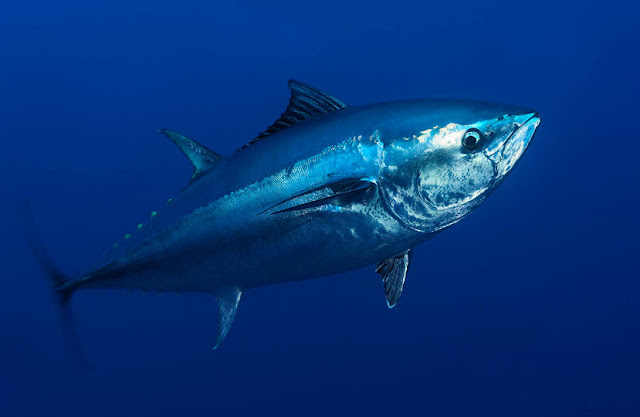
Atlantic Bluefin Tuna
Are elk the next species to make a return to Britain?
May 9, 2025
Following the overwhelmingly successful return of beavers to the British Isles which has been widely celebrated by the public, efforts are now being organised to bring back another lost species, one that has been absent for over three millennia.
The European elk (Alces alces), the same species as the moose of North America, could be seeing a return following a groundbreaking grant offered by Rewilding Britain to the Derbyshire and Nottinghamshire Wildlife Trusts.
These hefty woodland foragers and wetland grazers are a lost keystone species that can weigh up to 1200 pounds. Their return and proliferation would stand as a measure of restoration for these two long-plighted British habitats where they would serve, similarly to beavers and bison, as ecosystem engineers.
The project aims to reintroduce elk alongside beavers to share habitats, a poignant reuniting of both persecuted species.
“This exciting project could demonstrate how this crucial ecosystem engineer can thrive in floodplain landscapes, shaping diverse habitats that benefit communities and support biodiversity recovery. It may also serve as a catalyst for engaging people in the long-term benefits of returning elk to the wild.” Said Rachel Bennett, Deputy Director of Wilder Landscapes and Derbyshire Wildlife Trust.
The first phase involves housing elk within controlled environments due to legal restraints and their listing under the Dangerous Wild Animals Act of 1976, a piece of legislation that many conservationists argue is outdated as it was passed to serve a widespread popularity for exotic animals in that era. This policy has frustrated many other reintroduction projects for more native and ecosystem-friendly species such as lynx and wild boar.
While the British government currently has no immediate plans for additional wild releases beyond beavers, the success of the elk project could pave the way for future reintroductions of other native species. Public engagement and support will be crucial in shaping the future of Britain’s continued rewilding efforts.
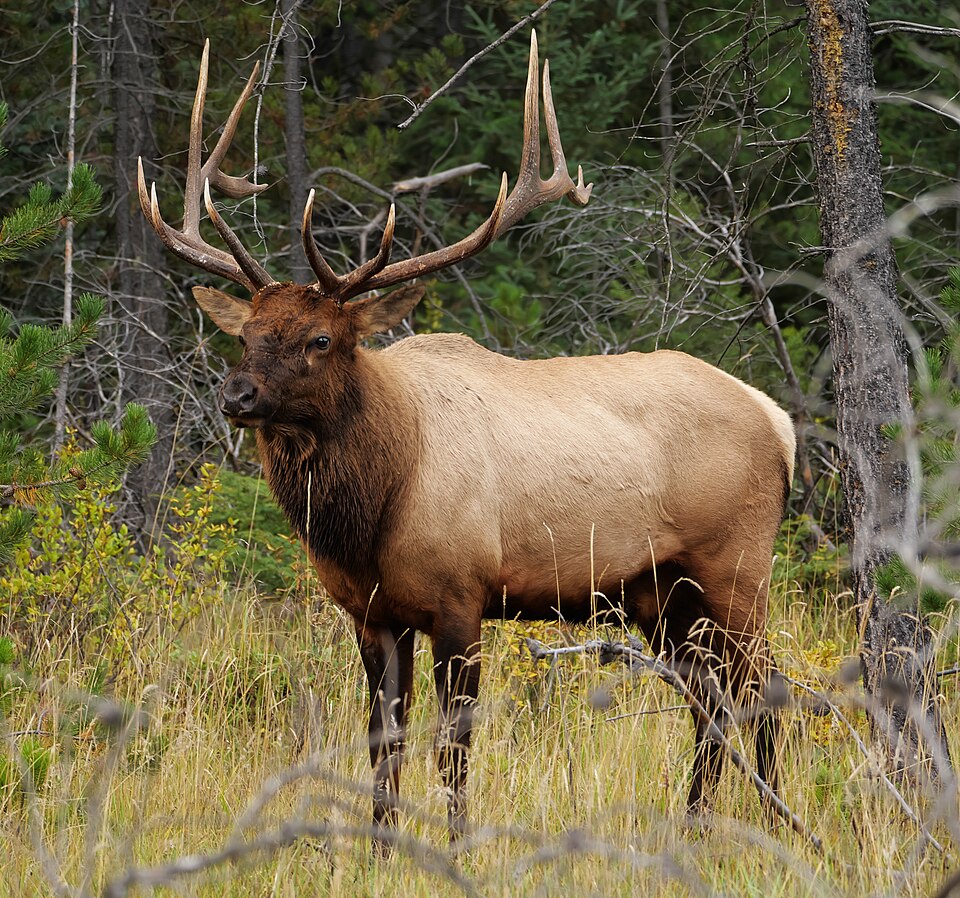
A Male Bull Elk
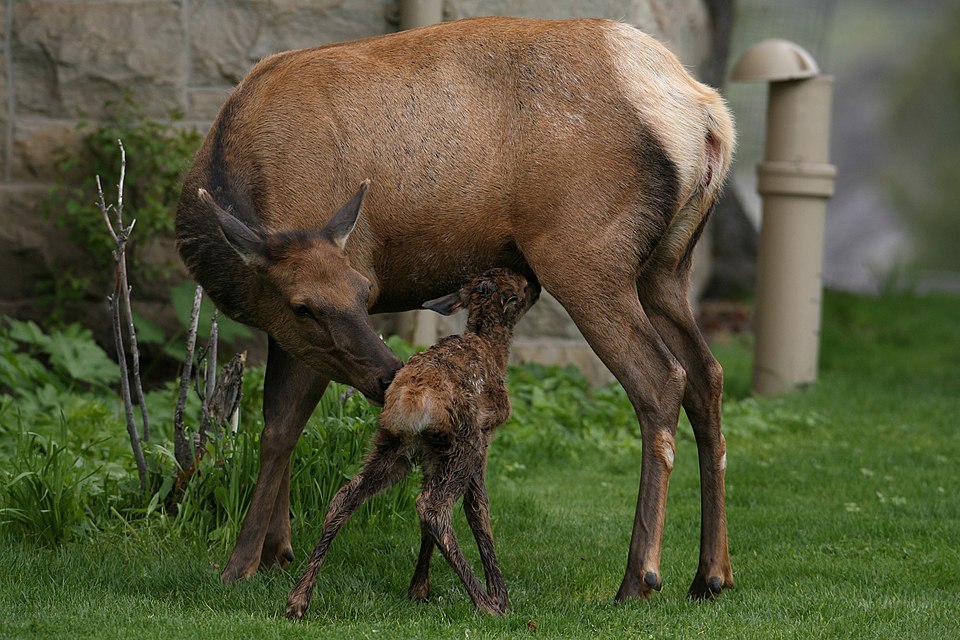
Cow and calf elk
How to set up your Spring bird box
April 15, 2025
Rich in greenery and technically a forest, England’s capital pulses with more than just the rhythm of traffic, offering residents a unique opportunity to connect with native birdlife.
Crowded high-rises become perches, rooftops offer moments of respite, and pockets of garden serve as quiet havens. With spring arriving atop a week of glorious sunshine, what better time to welcome birds?
Throughout our concrete maze, birds seek out dependable places to feed and rest. So how can we best install bird boxes and truly invite them in?
Finding the right bird box in the perfect spot
In a typical year, over two hundred bird species are recorded across the city. Yet some are far more likely to visit than others, each with their own unique needs.
Blue tits and great tits (small box with a 25–28mm hole)
Robins and wrens (open-fronted boxes in secluded spots)
Sparrows and starlings (larger boxes with 32mm holes)
Feeders and other exposed food sources often draw in larger, territorial birds, like crows or pigeons, who can outcompete and intimidate their smaller counterparts.
Placement is crucial
Position the bird box high enough to stay safe from curious pets and prowling foxes, but not so high that it tempts larger birds. A wall or fence makes an ideal spot, somewhere shaded from harsh sun and shielded from strong winds.
While city birds may be more familiar with the urban bustle than their rural cousins, they still seek out calm, shaded corners with a touch of leafy cover.
As the sun continues to grow in confidence with summer approaching, a bird bath or dish of water would be a welcome refreshment, plus another reason for birds to pay a visit. By providing vegetation or decaying logs, you could create both cover and a thriving insect buffet.
Consider a window box or container garden with pollinator-friendly flowers like lavender, foxglove, or marigolds—these attract insects that birds feed on.
Food
Fat balls (nutrient dense spheres), sunflower seeds, and mealworms.
Avoid cheap seed mixes that might attract pigeons and rats.
Record and share what you see!
Birdwatching helps to build communities. Sharing your sightings with others might encourage them to set up their own or do more for nature where you live. There are a number of popular apps such as Merlin Bird ID and RSPB’s BirdTrack which help with identifying species and contributing to wider understanding of bird population movements and patterns. There are many social media groups encouraging people to come together.
Though it may feel like a small act, with an estimated 70,000 to 100,000 bird boxes across London, you’re joining a vast community. After all, nature belongs to us because we belong to nature, even in the heart of the city!
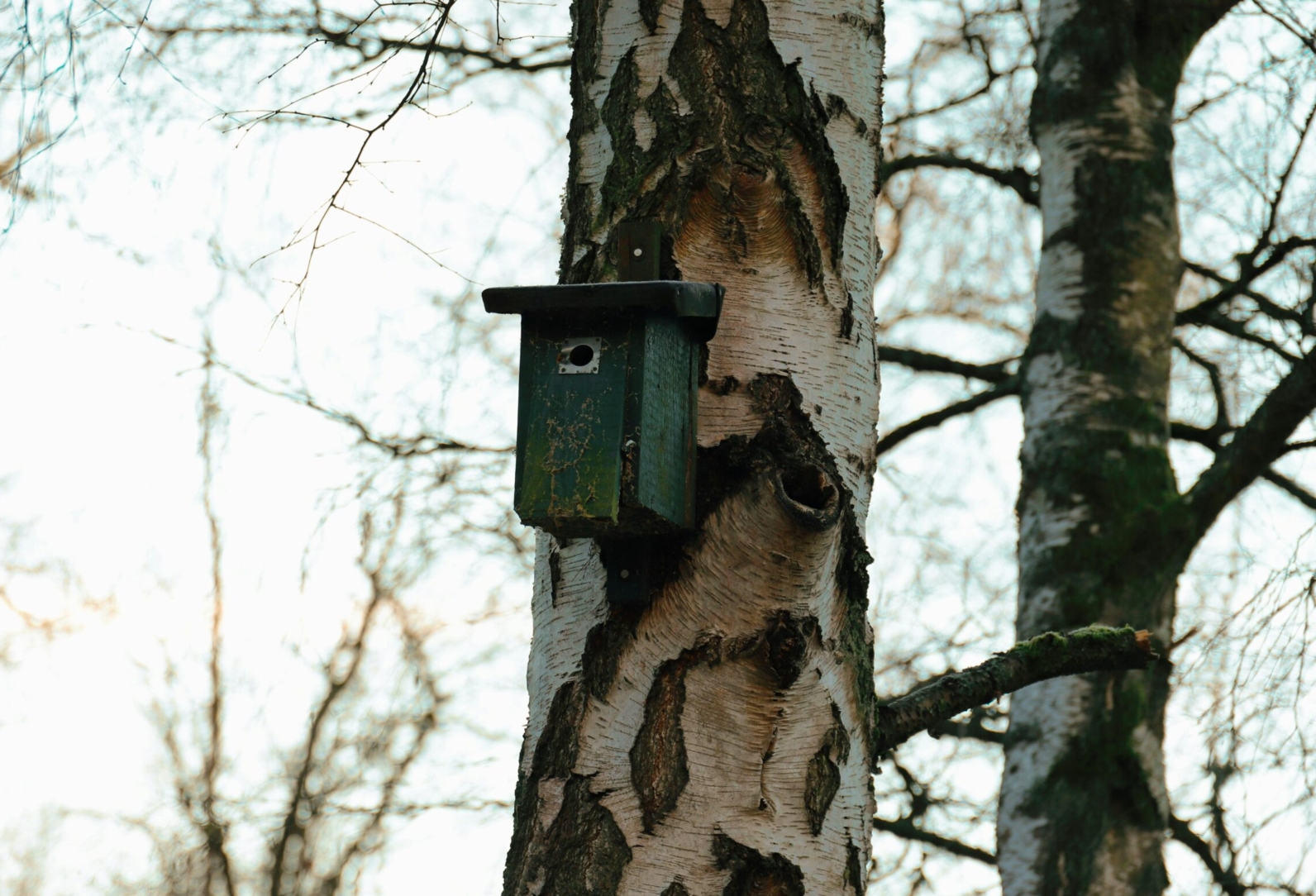
Bird Box
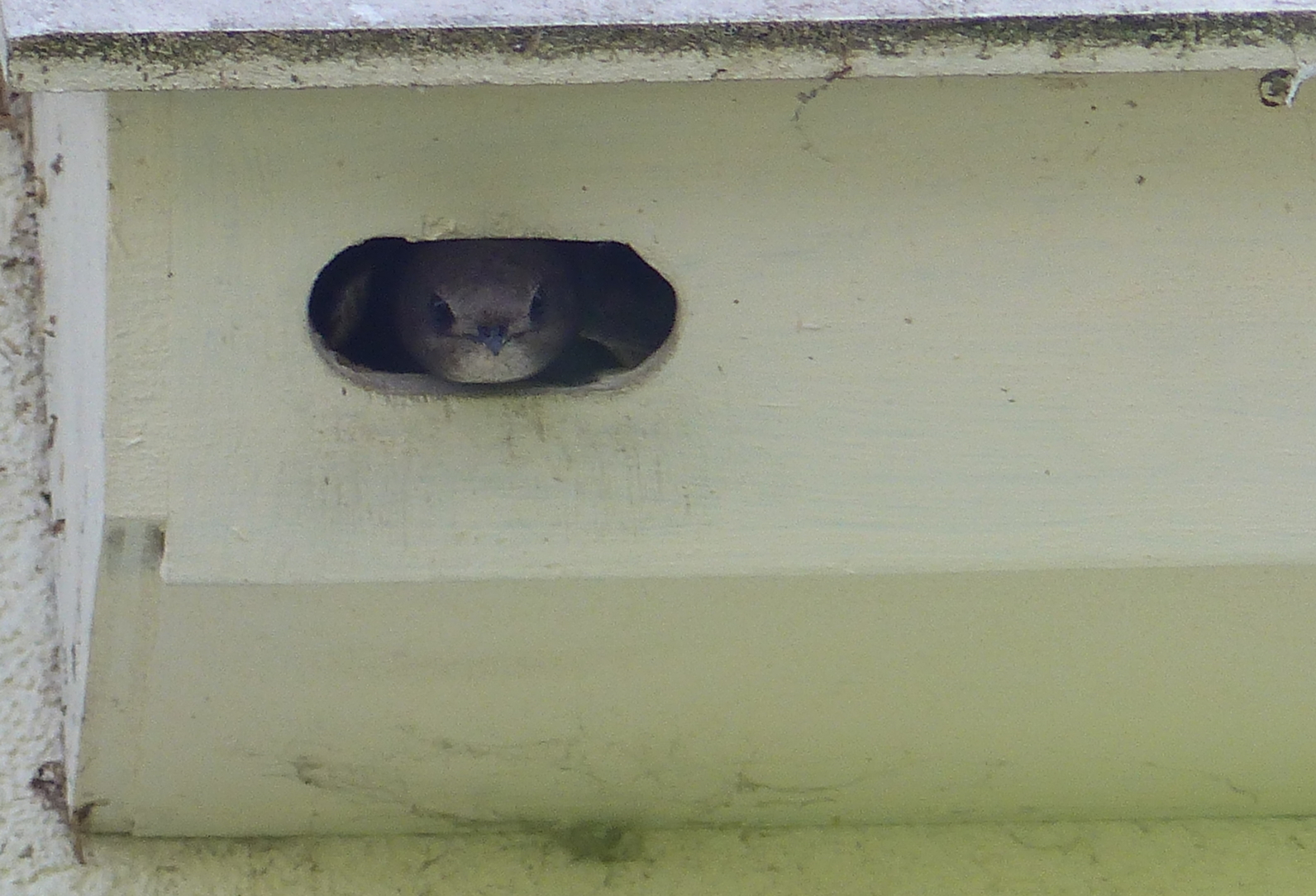
Swift in a bird box
Migrants Across the Gulf Stream: European Eels
March 27, 2025
One of the marine world’s greatest migrations from the Caribbean across the Gulf Stream, the European eel (Anguilla anguilla) makes the vast four thousand mile journey twice in its lifecycle.
Born as larvae among the ocean flora of the Sargasso Sea, these Bermudan natives drift across the Gulf Stream to the Mediterranean and Northern Europe, a feat which takes up to two years.
Undergoing metamorphosis from transparent leptocephali to adolescent glass eels, they begin to inhabit river estuaries marking them as one of the few marine species which undergo catadromous migration, inhabiting both the sea and freshwater habitats in their lifetimes.
From here they morph further from elvers, Yellow eels, before taking their final form brilliant Silvers. Over several years they have developed pigmentation, an enlargement in the eyes and a restructuring of the digestive system to suit their newly inhabited freshwaters,
However, with interruptions to the flow of the Gulf Stream due to warming waters brought on by climate change, their journeys have become more difficult. Since only the 1980s, European eels populations have cratered by up to 95%. Not only is this downstream from climate change itself, but the ecological turmoil brought on by wetland drainage, barriers to migration such as dams, overfishing, and a preponderance of pollution and disease.
These woes interfere with one of the most important parts of the eel’s life cycle: its remigration across the swell of the Atlantic back to Sargossa to breed. If they are fortunate enough to make it this far to reproduce they finally perish.
With so many vulnerable species the International Union for Conservation of Nature (IUCN) has classified the European eel as “Critically Endangered,” highlighting the urgent need for conservationists to take action.
In Britain, organisations like the Wildfowl & Wetlands Trust (WWT) are actively involved in restoring wetland habitats, providing crucial environments for eels to thrive.
Efforts to install fish passes and remove obsolete barriers have been implemented to facilitate eel migration, allowing access to upstream habitats essential for their development.
The Canal & River Trust emphasizes the importance of responsible fishing practices, advocating for the return of captured eels to the water to support population recovery.
Controversial measures, such as the export of juvenile eels from the Severn Estuary to Russia, have been undertaken with the intention of providing the eels with access to less degraded habitats, although these actions have sparked debate among conservationists.
Beyond their ecological importance, European eels hold a rich cultural heritage in Britain.
Famously, eels have been a staple in British cuisine for centuries, particularly in the East End of London, where dishes like jellied eels became iconic. This delicacy, made by boiling eels and allowing the broth to set into a jelly, was especially popular among the working class in the 18th and 19th centuries (somewhat less so today).
Eels feature in various British myths and legends. In some folklore, eels were believed to possess mystical qualities, and their elusive nature contributed to tales of them being supernatural creatures.
In Britain, species. Moreover, acknowledging and preserving the cultural heritage associated with eels can foster greater public engagement and support for conservation initiatives. The plight of the European eel serves as a poignant reminder of the broader challenges facing freshwater species worldwide and underscores the need for integrated approaches to biodiversity conservation.efforts to restore habitats, remove migratory barriers, and regulate fishing practices are crucial steps toward ensuring the survival of this enigmatic species.
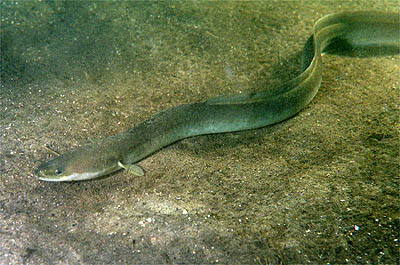
European Eel
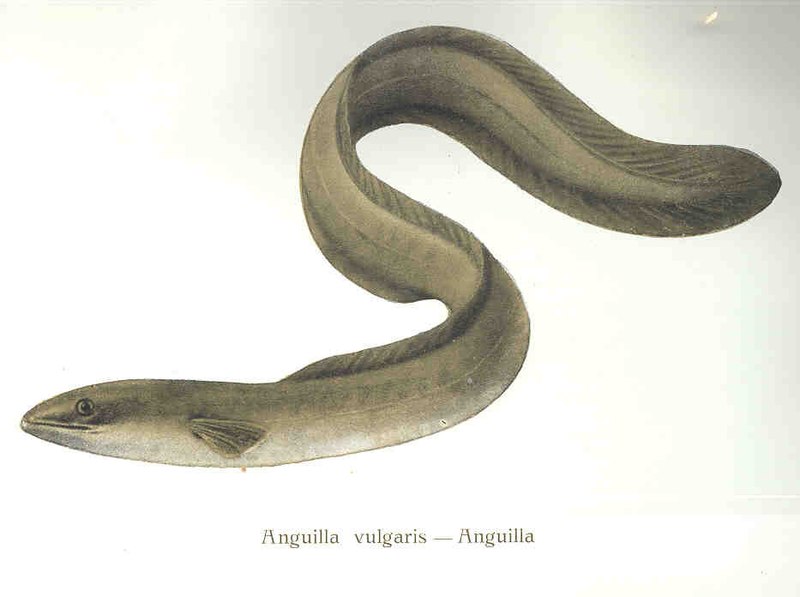
Anguilla vulgaris
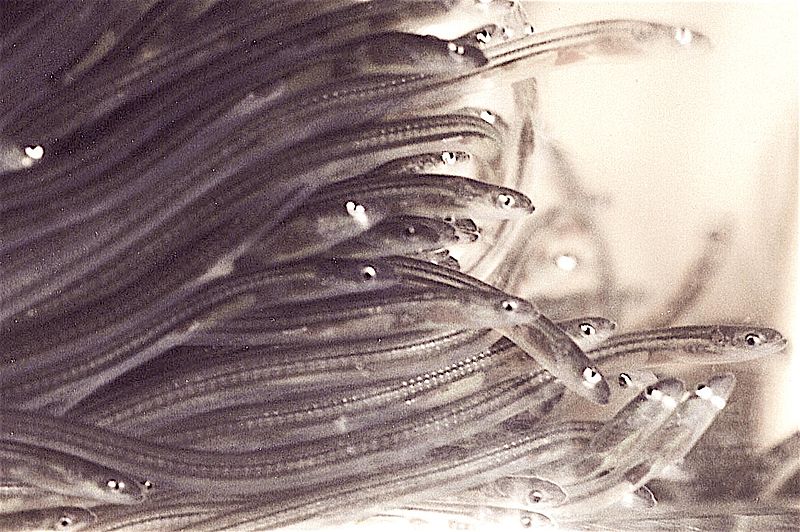
Glass Eels. Adolescent Phase
The British Government Approves Beaver Reintroductions in England
March 7, 2025
The landmark ruling has given the go ahead for the iconic and long extirpated native species to make a long overdue comeback. Building upon already growing populations across the country, conservation organisations are celebrating the decision following years of advocacy showing the widespread positive impact beavers have on habitat rejuvenation and climate change mitigation.
“Beavers are unparalleled in their ability to restore landscapes, create wetlands that manage flood risk, improve our water quality, and bring back wildlife.” Said Hilary McGrady, Director General of the National Trust.
The decision follows successful trial projects, such as the River Otter Beaver Trial in Devon, which highlighted vital evidence of the beaver’s ecological benefits. Conservation groups will work closely with local communities to monitor the impact of the reintroduction and provide support where needed.
Beavers are renowned for their ability to transform landscapes. As ecosystem engineers, they build dams that create wetlands, improving water quality and providing vital habitats for fish, birds, and amphibians. Their presence also helps mitigate the impact of extreme weather by naturally regulating water flow, reducing soil erosion, and preventing floods.
“The return of beavers is a significant landmark for nature recovery in England.” Said Tony Juniper, chair of Natural England.
The reintroduction of beavers will be carefully managed to ensure balance between nature and human activity. As their populations grow, conservationists will study their effects on the environment, helping to shape future policies on rewilding and sustainable land management.
Authorities have compiled strict licensing and management legislation to appease the concerns of farmers and landowners against potential agricultural disruptions. Crucially, this type of work is being carried out with the full inclusion of local-community ideas and concerns which has unfortunately not always been the case historically.
Following their demise in the 17th century through widespread hunting for their treasured furs and castoreum, the latter being an ingredient historically used in perfume, the semi-aquatic rodents are set to thrive once more in one of their native domains.
This initiative highlights Britain’s commitment to using nature-based solutions to combat environmental challenges, making the countryside more resilient and ecologically rich for generations to come.
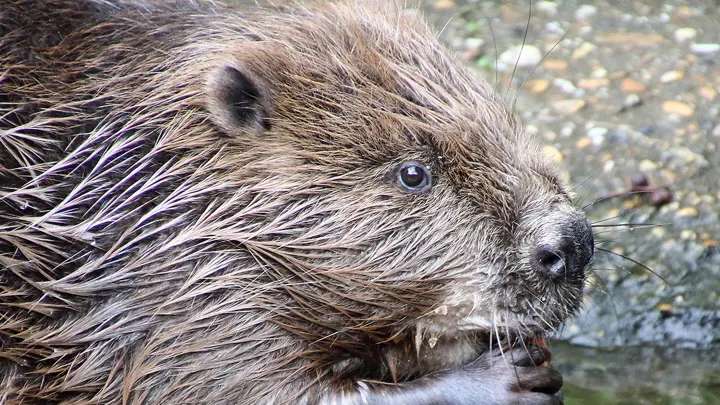

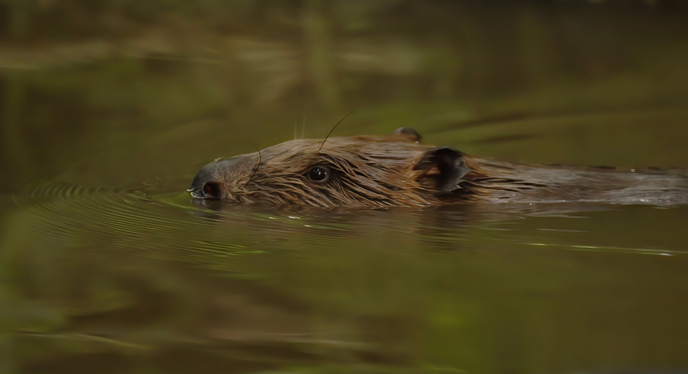
Wilding Profile: Common Crane
February 7, 2025
Common cranes (Grus grus) are tall, long-legged birds with a wingspan of up to 2.4 metres and a height of approximately 1.2 metres. They have predominantly grey plumage, black flight feathers, and a distinctive ruby-red patch on their heads. Like most bird species, they are omnivorous, feeding on a varied diet of plants, insects, amphibians, and small vertebrates. As of 2015, their global population was estimated at between 491,000 and 503,000 individuals, with the majority breeding in Russia, Finland, and Sweden.
One of the most iconic aspects of crane behaviour are their synchronised courtship displays of dance and amorous calling songs. These rituals reinforce pair bonding, as common cranes, like many large, slow-breeding birds, mate for life. This is also typical among many long-lived species where cranes can live up to 40 years of age. They are highly migratory birds, with populations breeding in northern Europe and western Asia before migrating to southern Europe and Africa for the winter.
The common crane was once a common sight in Britain’s wetlands. However, by the early 1600s, the species had almost completely disappeared due to extensive drainage of marshlands for agriculture and relentless hunting, both for food and for use in ceremonial feasts. Owing to their already low populations, they were seen as luxury delicacies and prized particularly during Lent where they were considered ‘fish’ under medieval catholic dietary rules. This view of them as symbols of high status thus plummeted their final numbers into near complete extinction across the British Isles by the 17th century.
Following centuries of absence, in 1979 a small breeding colony was discovered in the wetlands of the Norfolk Broads. As an already declining habitat affecting many other vulnerable species such as the iconic curlew, this inspired conservationists into action. Over the following decades, conservation organisations such as the RSPB, the Wildfowl & Wetlands Trust (WWT), and Natural England launched initiatives to help the crane population recover.
One of the most significant projects was the Great Crane Project, launched in 2010. This initiative aimed to boost Britain’s crane population by releasing captive-reared birds into suitable habitats. Using techniques developed in Germany, young cranes were hand-reared at WWT Slimbridge and then released in the Somerset Levels and Moors, a landscape carefully managed to provide ideal breeding conditions. Over several years, dozens of cranes were released, and many successfully established breeding territories.
Today, Britain’s common crane population stands at over 200 individuals, with breeding populations in Norfolk, Suffolk, Cambridgeshire, Somerset, Gloucestershire, and parts of Wales. The success of reintroduction efforts has led to an increase in both the number of breeding pairs and the geographic range of the species. These birds are now successfully raising chicks in areas where they had been absent for centuries.
As previously mentioned, wetland conservation has played a crucial role in the resurgence of and protection of bird species. By restoring traditional wetlands and creating new reserves, conservation groups have provided crucial nesting and feeding grounds. Sites such as the RSPB’s Lakenheath Fen and the WWT’s Welney Wetland Centre have been instrumental in supporting the species’ recovery.
Despite their remarkable comeback, common cranes are still incredibly vulnerable and are faced with the common plethora of modern ecological challenges. Habitat destruction due to agriculture and urban development remains a concern, as cranes require large, undisturbed wetland areas for breeding and feeding.
A lack of general education and awareness also leaves their delicate breeding conditions at risk to even the lightest of human activities of recreation, traffic and noise pollution. These factors often cause long-term breeding failures in a species already suffering from low reproductive rates (largely known as K-breeding strategy).
Species of this slow breeding pattern compensate with high parental investment, dedicating significant time and resources to raising their young. They typically have long lifespans, often living for decades, which allows for multiple breeding opportunities despite their slow reproduction. These species also reach sexual maturity late, taking years before they can reproduce. While their populations remain stable in undisturbed environments, they are particularly vulnerable to habitat loss and overexploitation. Humans are one such species.
The return of the common crane to Britain is a remarkable conservation success story. From complete extinction in the 17th century to a small but tentatively growing population today, the efforts of conservationists, land managers, and the public have made a significant impact.
With ongoing and continued efforts the loving courtship calls of common cranes may once again echo across Britain’s wetlands for generations to come!
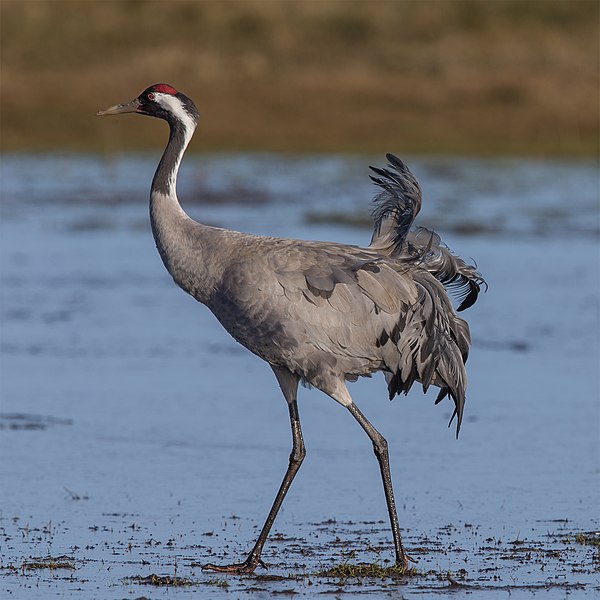
Common Crane Adreas Trepte
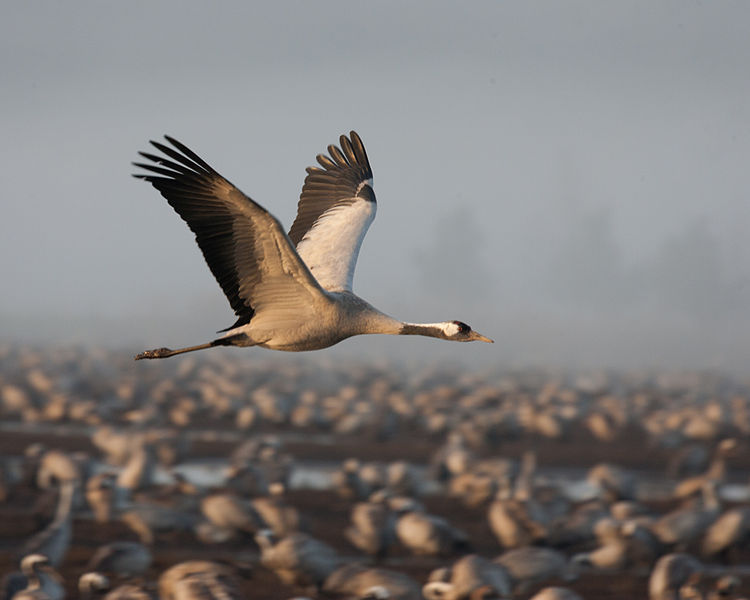
An adult crane in flight.
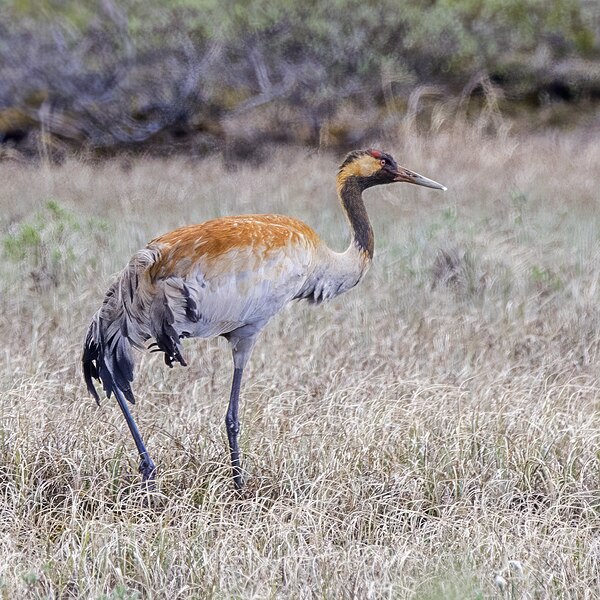
A juvenile crane developing adult plumage.
Illegal Lynx releases Spark Ongoing Debate Around Ethic of Rewilding Practices
January 14, 2025
Earlier this month ( January 2025 ) authorities discovered that four Eurasian lynx had been illegally released into the wild near Kingussie in the Scottish Highlands causing controversy and calls for wider questions around the ethics of certain rewilding practices.
The situation has drawn ire from both local communities and conservationists highlighting the complexities of carnivore reintroductions across the British Isles.
Though generally viewed as a non-threat to humans or livestock due to the lynx’s skittish and elusive behaviour, unfortunately these four individuals have been described as “tame and ill-prepared for life in the wild” meaning they were likely to fall prey to the harsh conditions of the highlands and struggle to acquire food. This was further complicated by the fact that one lynx died shortly after capture by authorities, likely due to the stress of the ordeal.
“Any such reintroduction must follow legal protocols, including ecological assessments and public consultations,” emphasised Scottish government representatives. The events have led to a police investigation and calls by conservation groups for those responsible to be charged.
Despite these unfortunate events strong advocacy still remains for the reintroduction of lynx across Britain along with frustration on the overall lack of progress for rewilding a number of extirpated species.
Lynx are believed to have vanished from the British Isles around a millenia ago due to persecution, hunting and the destruction of woodland habitats. However, they play a central role in controlling herbivore populations, particularly deer, which are currently vastly overpopulated and having devastating effects on forest growth and biodiversity. “Bringing back lynx could allow our forests to flourish again,” stated the Lynx UK Trust.
The Eurasian lynx is the largest of Europe’s wild cats, known for its tufted ears and short tail. Typically weighing between 18 to 30 kilograms, they are solitary and territorial, inhabiting dense forests where they prey on deer, hares, and other small mammals.
The challenges of reintroducing lynx remain significant. “We’re dealing with a landscape that has changed dramatically since lynx last roamed here,” said a National Trust spokesman. Human settlements, agricultural activity, and the potential impact on livestock are key concerns for local communities who feel they have been ignored in the conversation.
The illegal release has also highlighted the importance of adhering to legal procedures in rewilding projects. Conservation bodies stress that any reintroduction must be carefully planned, with robust scientific evidence, legal approvals, and community support. Public consultations are a critical component, ensuring that locals are fully engaged in the decision-making process.
Rewilding advocates emphasise the need for broad public support to make such initiatives successful. Recent surveys indicate growing public interest in rewilding, with many viewing it as a means to address the twin crises of biodiversity loss and climate change. However, some remain skeptical, citing potential conflicts between conservation goals and agricultural practices.
Organisations like the Lynx UK Trust have been conducting consultations and education campaigns to foster understanding and support for their proposals. “It’s not just about bringing back lynx,” a representative explained. “It’s about restoring ecosystems and creating a future where humans and wildlife coexist.”
Across Europe, successful lynx reintroduction programs offer valuable lessons for Britain. Countries such as Germany, Switzerland, and Slovenia have seen lynx populations thrive when reintroduced through well-regulated programs. These initiatives often involve habitat restoration, long-term monitoring, and compensation schemes for farmers whose livestock are affected by predation.
Despite these successes, challenges remain. Human-wildlife conflicts, habitat fragmentation, and illegal hunting pose ongoing threats to lynx populations. Britain must learn from these experiences to ensure any future reintroduction avoids similar pitfalls.
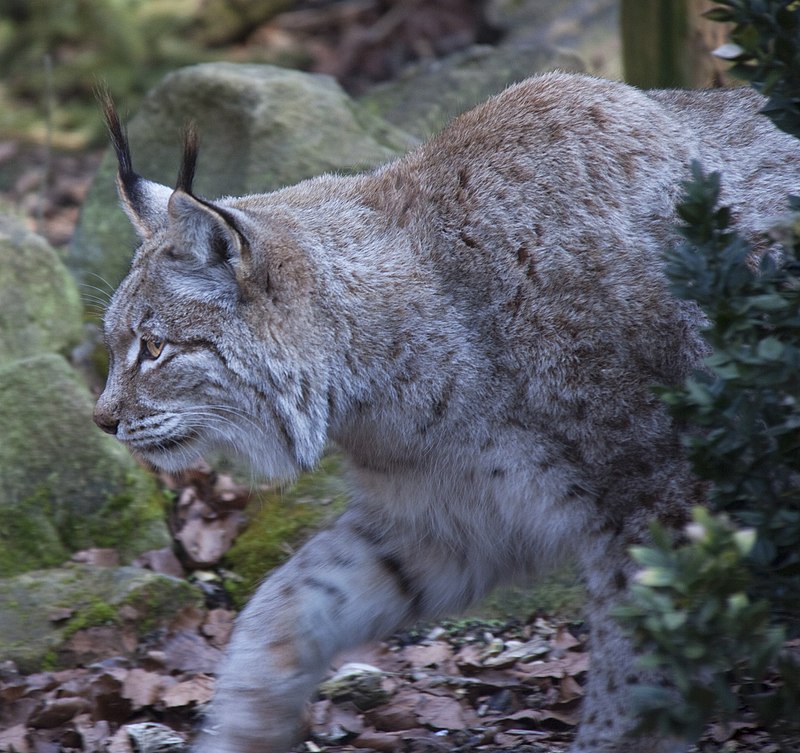
Stalking lynx Tony Hisgett
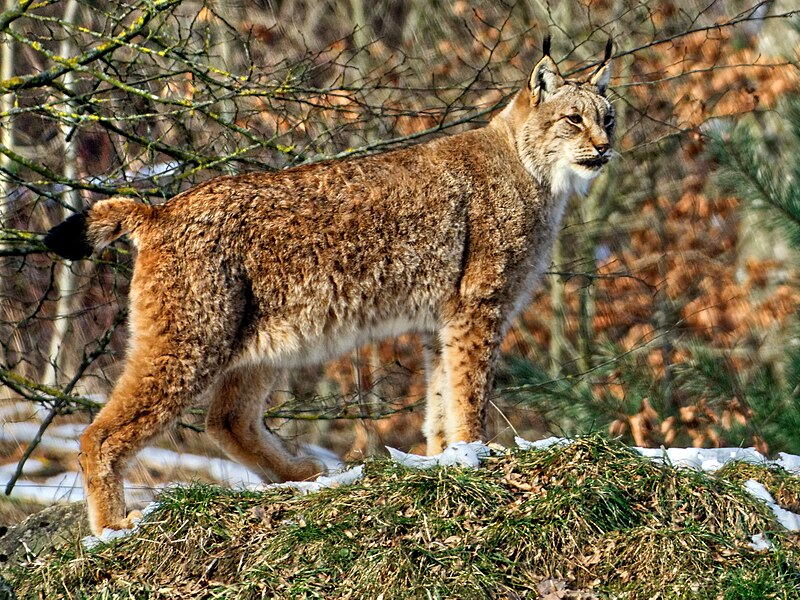
Lynx in winter Holger Scmitt
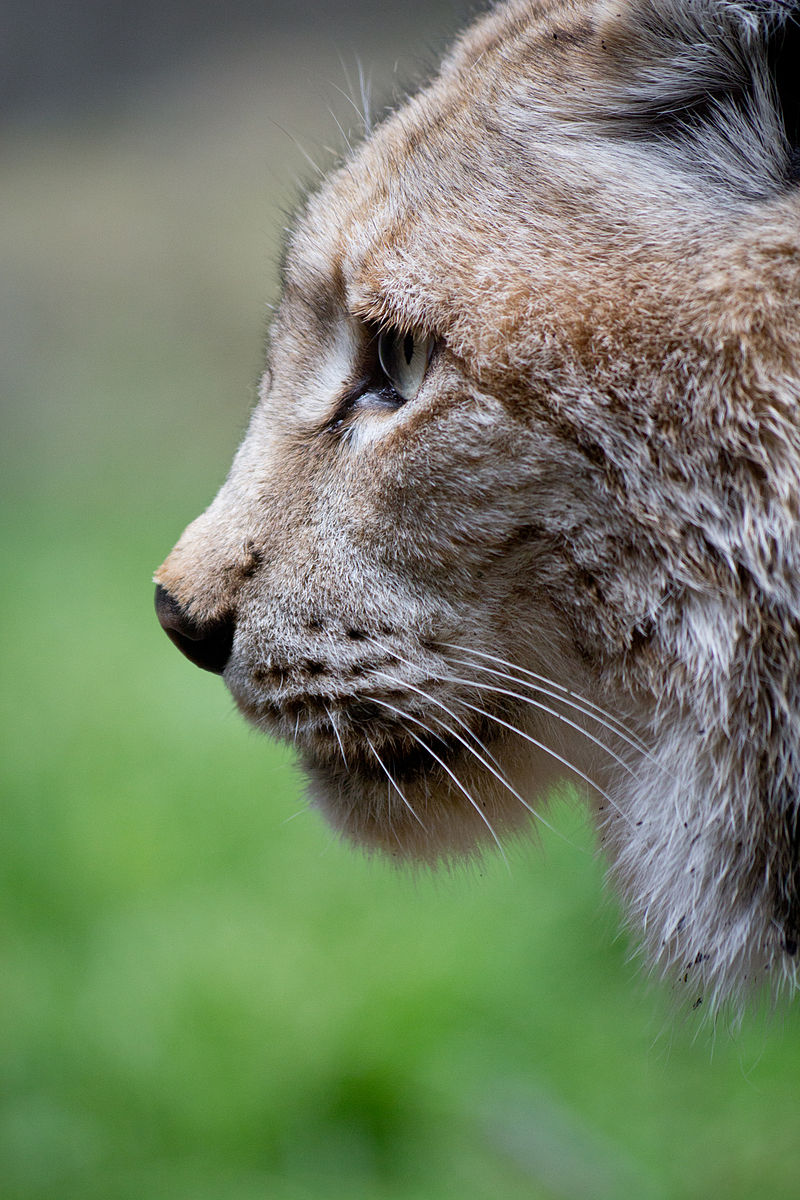
Lynx Carlos Delgado
Amanita Muscaria: The Enchanted Mushroom Behind Christmas Lore
December 20, 2024
Widely recognised from cartoons to Christmas cards, the Amanita muscaria mushroom, with its iconic white-spotted red cap, has a surprisingly rich history rooted in European folklore.
Beyond its charming appearance, the history of the fly agaric, or fly amanita, is steeped in mystery and fairy tales, capturing the imagination of Europeans for centuries.
For generations, indigenous tribes such as the Scandinavian Sámi people have used this mushroom in shamanic rituals and ceremonies. After careful preparation, it is consumed to induce dreamlike states of consciousness, facilitating spiritual journeys believed to connect users with the spirits of the natural world and their ancestors.
In modern times, the Amanita muscaria has gained an intriguing association with the imagery and spirit of Christmas. While not often explicitly mentioned, scholars and folklorists have drawn parallels between its characteristics and various elements of holiday symbolism.
The winter solstice (December 21), which closely coincides with Christmas, was and remains a special time for tribal ceremonies. Shamans would gather the mushrooms, dry them by hanging them in tree branches or in socks placed near a fire—a practice believed to inspire the tradition of hanging stockings by the fireplace. Dressed in red and white garments, the shamans would distribute the mushrooms among villagers as offerings and blessings for the community. This is thought to have influenced the creation of the jolly, kind spirit of Santa Claus.
Moreover, these tundra cultures share deep and ancient connections with reindeer, which play both domestic roles and serve as a vital food source. Coupled with the induction of dreamlike states and the fact that reindeer also consume Amanita muscaria, it is easy to imagine how tales of flying reindeer might have taken root.
As a mycorrhizal fungus, Amanita muscaria forms a symbiotic relationship with the roots of trees such as birches, pines, and firs. The mushroom provides essential nutrients like phosphorus and nitrogen, while the trees offer carbohydrates produced through photosynthesis.
The mushroom’s distinctive red-and-white caps emerge above ground during reproduction, releasing spores that contribute to soil fertility. Its presence in forests is a sign of a healthy ecosystem.
Amanita muscaria also serves as a cautionary symbol regarding the misconsumption of wild mushrooms. Improper preparation or consuming them raw can lead to symptoms such as vomiting, diarrhea, nausea, confusion, perspiration, and difficulty breathing. However, the mushroom is not lethal.
Today, Amanita muscaria continues to captivate scientists, artists, and enthusiasts alike. Mycologists study its unique properties, exploring both its ecological roles and its psychoactive compounds, such as muscimol and ibotenic acid. While toxic in large doses, these substances show potential for applications in medicine and neuroscience, sparking ongoing research.
As you celebrate this holiday season, take a moment to marvel at the wonders of nature. May your Christmas be as magical as the Amanita muscaria itself. Merry Christmas!
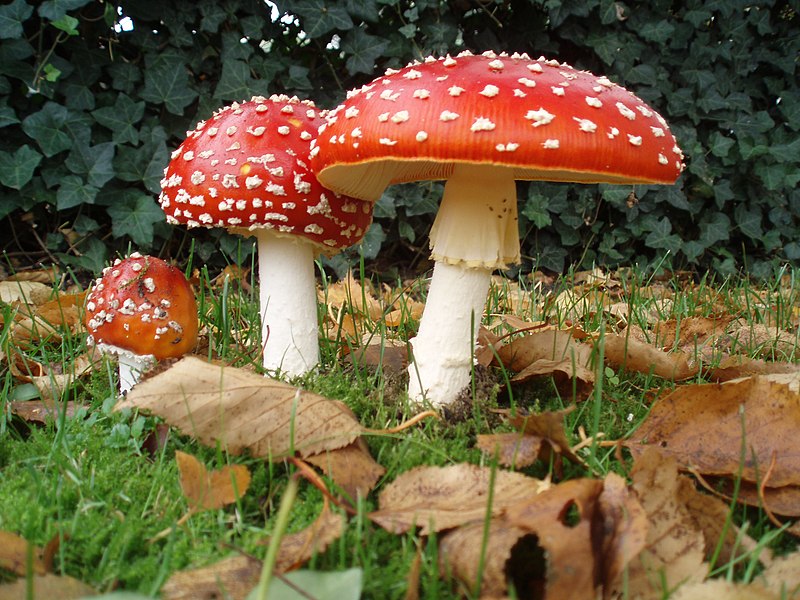
Amanita MuscariaDieze Oost
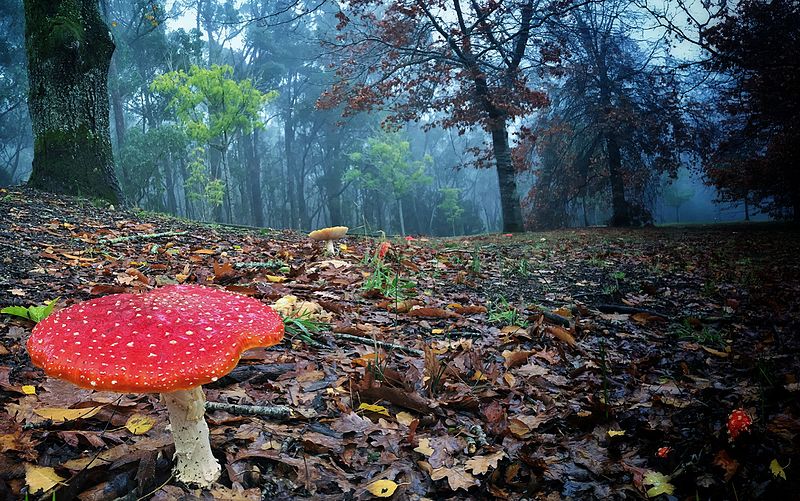
Amanita MuscariaMichael Hartwich
Minke Whales: Navigating Survival in a Changing Ocean
December 6, 2024
As one of the smallest and most abundant baleen (filter-feeding) whale species, minke whales (Balaenoptera acutorostrata) play a vital role in the marine ecosystems and the cultures of coastal communities in the Northern Hemisphere.
First documented by Danish naturalist and explorer Otto Friedrich Müller in 1776, minke whales primarily feed on small fish, plankton, and krill. As the second smallest baleen whale species, after the Antarctic pygmy right whale, they reach maturity at seven to eight years old and attain a maximum average body length of eight meters and a weight of seven tons. Typically, they live between 30 and 50 years, though some individuals have been recorded living up to 60 years.
Minke whales are distinguished by white bands on each flipper, and they have between 240 and 360 filter plates on each jaw, depending on their age. Their stomach is divided into four chambers. Like other baleen whales, their feeding habits contribute to the “whale pump,” a mechanism that cycles nutrients from the deep ocean to surface waters. This vital process supports the proliferation of phytoplankton, which plays a key role in global carbon capture.
Owing to their size, the deaths and sinking of baleen whales create “whale falls,” where their carcasses provide unique, nutrient-rich habitats for deep-sea organisms in otherwise almost barren environments.
Throughout history, whales, including minke whales, have held a special place in the folklore, art, and traditions of many coastal cultures. In regions like the Arctic and North Atlantic, Indigenous communities have relied on whales for sustenance, crafting tools and ceremonial objects from their bones and baleen.
The global population of minke whales is divided into two main species: the common minke whale (Balaenoptera acutorostrata) and the Antarctic minke whale (Balaenoptera bonaerensis). These species are further subdivided into subpopulations based on geographic range. While the International Union for Conservation of Nature (IUCN) lists the common minke whale as being of “Least Concern,” the Antarctic minke whale is classified as “Near Threatened” due to pressures from climate change and human activity.
Historically, minke whales were not primary targets of commercial whaling due to their smaller size and lower yield of oil compared to larger species like blue or humpback whales. However, as larger whale populations were decimated by overexploitation during the 19th and early 20th centuries, commercial whalers shifted their focus to minkes. Intense whaling pressure in the mid-20th century caused significant population declines, particularly in the Southern Ocean.
Climate change has had profound effects on minke whales’ feeding and migration patterns, as their primary food sources, such as krill, are disrupted by warming oceans and shifting global distributions.
Noise pollution from shipping, military activities, and industrial development further threatens minke whales by interfering with their communication and echolocation, making it harder for them to navigate and locate food. Additionally, entanglement in fishing gear remains a significant cause of injury and mortality, particularly in heavily fished regions. Despite international regulations and public opposition, whaling for minke whales continues in countries like Norway, Japan, and Iceland.
International efforts have achieved some success in protecting minke whales, such as the International Whaling Commission’s (IWC) moratorium on commercial whaling (1986) and the Convention on Migratory Species (CMS). These initiatives have helped stabilize populations in the Northern Hemisphere.
In Britain, organizations like the Hebridean Whale and Dolphin Trust (HWDT) and the Marine Conservation Society (MCS) monitor minke whale behavior, migration patterns, and population numbers while advocating for an expanded network of marine protected areas (MPAs). However, this task is challenging due to the whales’ wide-ranging migratory habits, which are increasingly affected by shifting food distributions and ongoing whaling activities in nearby Scandinavian nations.
Minke whales are far more than majestic miniature giants of the sea, they are vital to ocean health and serve as ambassadors for the conservation of other baleen whale species worldwide.
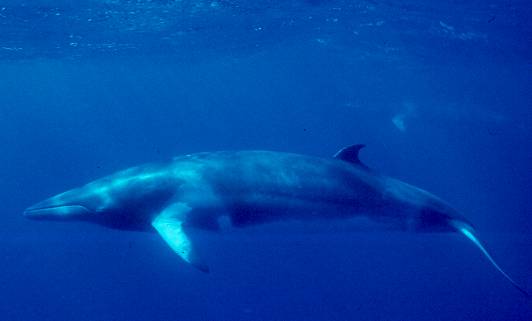
Minke Whale (Balaenoptera acutorostrata)
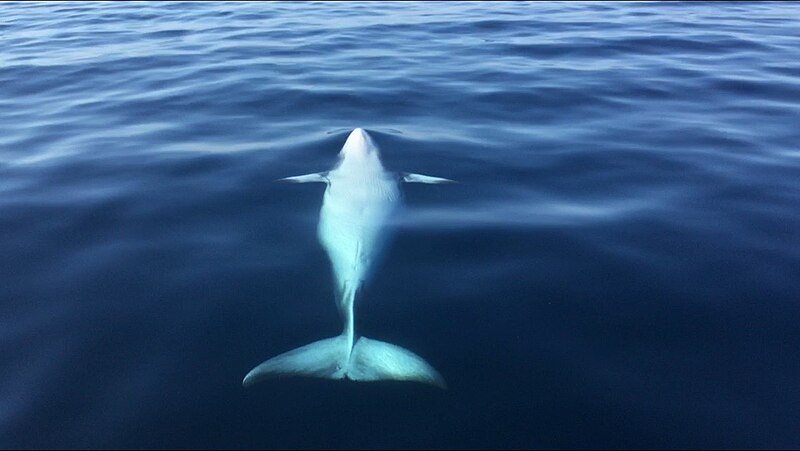
Minke Whale on its back
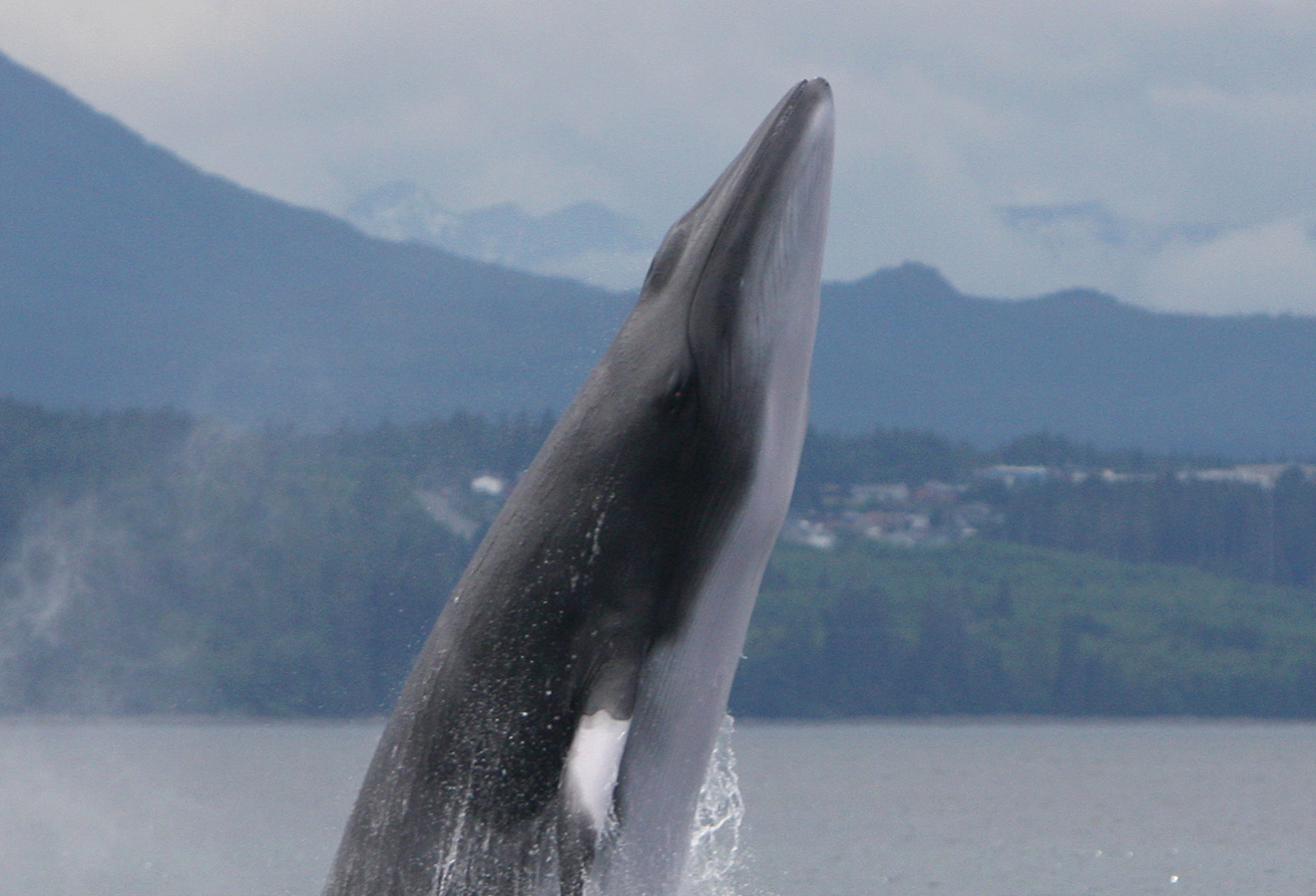
Minke WhaleJared Towers
The Pine Martens Return: Rewilding Britain, One Woodland at a Time
October 25, 2024
Heartening news has emerged from Dartmoor, Devon, where 15 pine martens have been reintroduced to their ancient habitat after more than 150 years of absence.
Led by Devon Wildlife Trust, the initiative is part of a nationwide effort to restore the endangered species, whose population is estimated at just 3,700. These elusive carnivores, expected to play a crucial role in controlling invasive grey squirrels, are poised to help revitalise ecosystems that have been degraded by the long absence of native predators.
As covered in one of our previous articles, pine martens (Martes martes) once thrived in Britain’s prehistoric Wildwood, a time when vast forests covered much of the main island of Great Britain. They were among the most abundant carnivores in Mesolithic Britain, contributing to the balance of ecosystems. However, centuries of deforestation and targeted persecution led to their near extinction.
These agile, arboreal predators help control populations of rodents and other small mammals, acting as natural pest controllers. By preying on invasive grey squirrels, which were introduced to Britain in the 1870s, pine martens also help create conditions for the recovery of native red squirrels. In areas where pine martens have returned, studies show grey squirrel numbers decline, giving red squirrels a fighting chance to regain lost territories.
This 2024 reintroduction of 15 pine martens to Dartmoor is a milestone in the effort to restore this native species to its former range. The project is the culmination of six years of preparation. The animals, sourced from Scotland’s thriving pine marten population, were equipped with GPS and radio tags so they can be monitored and protected into the future.
Initial results from monitoring have been positive, with the pine martens avoiding human infrastructure and adapting well to their new environment. This release is the first step in a larger plan to establish a self-sustaining population in Devon, with future reintroductions planned for Exmoor further north.
While the Dartmoor reintroduction is making headlines in the southwest, Kent Wildlife Trust (KWT) is leading the charge in the southeast with its Wilder Kent initiative. Launched in 2019 and supported by a grant from Restore Our Planet, the project aims to restore 30% of Kent’s land and sea to wildlife, effectively doubling the county’s wild areas. Central to this plan is the reintroduction of species that have been extinct in the region, including pine martens, red squirrels, turtle doves, red-billed choughs, and beavers.
In both Dartmoor and Kent, the return of pine martens represents a broader movement towards rewilding and ecological restoration across Britain. These efforts are not only about saving a single species but about restoring the natural processes that sustain biodiversity and create resilient landscapes. With continued support, projects like these offer a hopeful vision for the future, where other endangered native species can begin to recover.

Pine Marten at the British Wildlife Centreby Surrey John

Pine Marten in Scotland
Red squirrels continue to make some ground in the battle against greys
October 4, 2024
We have previously reported on the plight of red squirrels and the sustained efforts of local groups to protect them. Now, promising updates have emerged from Scotland.
With significant reductions in invasive grey numbers in key regions, there are signs of optimism that red squirrels could soon regain territories where they had previously been driven out.
One of the most promising developments has taken place in Aberdeen, where the Saving Scotland’s Red Squirrels (SSRS) project, led by the Scottish Wildlife Trust, is approaching a breakthrough in its long-running initiative to eliminate greys from the city. Since the campaign began in 2009, more than 10,000 grey squirrels have been removed. Now it can be confirmed that sightings have dwindled to just 12 in 2024, suggesting the city is on the verge of being declared ‘grey-squirrel-free’.
Dr. Emma Sheehy, head of SSRS’s grey eradication initiative in northeast Scotland, confirmed that only three individual grey squirrels were detected at feeders out of more than 5,000 checks. “This is a result of long-term, consistent trapping,” she said. “Although it may seem counter-intuitive, this late stage of the removal phase is undoubtedly the biggest challenge the team will have faced to date.”
The remaining few greys are elusive and hidden among urban areas, making tracking and trapping significantly more difficult. However, Sheehy is hopeful that a concerted final push, combined with public support through sightings and reporting, could see Aberdeen become a secure red squirrel refuge “in the near future.”
We previously highlighted the remarkable yet often overlooked success story in Anglesey, Wales, which has become a shining example of red squirrel conservation. After being driven to near extinction in the 1990s, the island’s red population rebounded spectacularly, thanks to a systematic grey eradication program and targeted reintroductions. The number of reds now sits at around 700-800 individuals, a stark contrast to just a few dozen a little over two decades ago.
The Anglesey project serves as a model for other areas grappling with grey squirrel dominance. The central lesson of this success is that if greys can be removed completely, reds can thrive even in areas where they were once extinct. This model is being adapted in other red squirrel strongholds, including Brownsea Island and the Isle of Wight, where similar eradication efforts are ongoing.
Although the situation remains precarious for red squirrels, there are also signs that their decline is starting to stabilise. According to surveys in Scotland, reds have made gains in several locations along the Highland Boundary Fault Line, a crucial natural barrier that conservationists have been using to prevent further grey encroachment into red territories. Participants reported more sightings of reds than greys for the first time in years, indicating that suppression strategies are having an impact.
Local volunteer groups led by the Red Squirrel Survival Trust (RSST) also continue to fight back across northern England. Spokesman Mark Henderson in discussion on a recent episode of our podcast commented on volunteers saying “if it wasn’t for their work then the game would already be up, and the red squirrel would already be gone.”
Though promising stories are beginning to emerge it is still an uphill battle. Even in areas where reds have gained ground, grey squirrels are never far off, and a single outbreak of squirrelpox (carried by greys which are immune) could reverse years of progress. Conservationists remain cautious, emphasising that continued monitoring, public engagement, and consistent management will be essential to securing the red squirrel’s future.
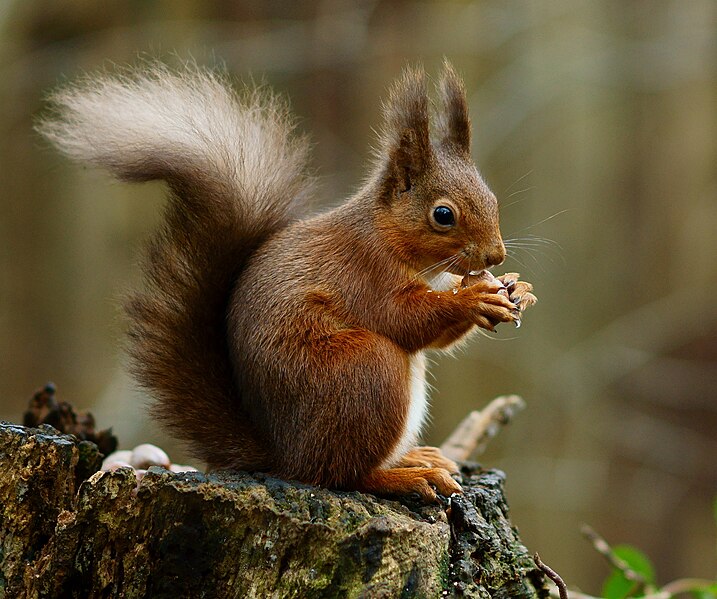
Red Squirrel in the forestPeter Trimming
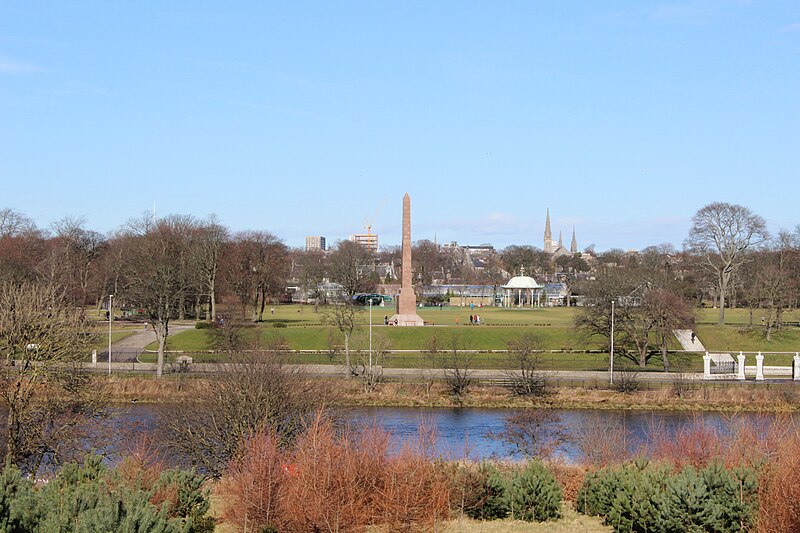
Duthie Park, Aberdeen.
From Silent Spring to Revival: The Recovery of Britain’s Otters
September 24, 2024
Along with countless other species, many of which we have covered in this article series, the European otter (Lutra lutra) suffered tremendously through the events of ‘Silent Spring’ – the phenomenon of mass die-outs of species following massive increases in chemical uses in agriculture across post-war Britain.
Through decades of determined conservation efforts, the otter has avoided extinction where its numbers fell by as much as 90% through the mid-20th century. In eastern England it was entirely wiped out.
In the 1970s it was only found in 6% of survey sites in England and 17% in Wales. This decline came largely at the hands of organochlorine pesticides, mostly dieldrin and aldrin, which penetrated water systems, entered the food chain, and killed otters through the consumption of poisoned fish. Their numbers were further decimated through illegal hunting in pursuit of their prized hides and rapidly increasing habitat destruction.
Many harmful pesticides were banned towards the end of the decade reducing pollution in freshwater systems. To fight poaching the Wildlife and Countryside Act of 1981 was then passed. Following these landmark first steps, habitat restoration initiatives commenced focusing on improving the water quality across ecosystems, restoring riverbanks and constructing otter ‘holts’ (dens).
So successful were these efforts that by the early 1990s otters were found across 36% of sites. Reintroductions also brought them to areas they were previously extinct such as East Anglia and the Midlands. By 2010, this number had further increased to 59% of sites and 96% by 2018. This remarkable recovery accounts for a near complete restoration of Britain’s otter population in half of a century.
Today, otters are present in every county in England, Wales, and Scotland, with Scotland and Wales serving as population strongholds. Their recovery has been most rapid in northern and western regions, while southern England has seen slower progress.
As apex predators, otters play a critical role in maintaining the health of freshwater ecosystems. Their diet consists primarily of fish, but they also eat amphibians, crustaceans, and small mammals. They are also considered indicator species and their recovery signals wider improvements in river quality, which benefits other species such as water voles, kingfishers, and dragonflies. Additionally, otters contribute to nutrient cycling, transferring nutrients between aquatic and terrestrial environments, which boosts productivity along riverbanks.
Otters have long held a special place in British culture, symbolising playfulness, intelligence, and the wild beauty of the countryside. In folklore, otters were often associated with magic and mystery, believed to possess shape-shifting abilities or act as spirit guides in Scottish and Irish mythology. In literature, otters have been immortalised in works such as Kenneth Grahame’s The Wind in the Willows (1908) and Henry Williamson’s Tarka the Otter (1927), both of which helped shape public affection for these animals.
While otters have made an impressive recovery, they still face threats. Road traffic accidents are now one of the leading causes of otter deaths, as they often travel between waterways to find food or mates. Conservationists are currently working in tandem with government ministries to find ways to improve infrastructure to accommodate otters and other vulnerable species. This is important not only in the service of finding food, but natural migration serves to prevent the isolation of populations which bring genetic threats associated with inbreeding.
Pollution from agricultural runoff, especially pesticides and fertilisers, continues to pose a risk to river health. The impacts of climate change, such as rising water temperatures and altered river flows, could also affect otters’ food sources and habitats in the coming decades, particularly in southern England where populations are still recovering.
In conclusion, the resurgence of otters in the UK is a remarkable conservation success story. Their recovery not only benefits biodiversity but also reflects wider improvements in the nation’s freshwater ecosystems. Otters, once nearly wiped out, are now thriving and remain a beloved part of Britain’s natural and cultural heritage.
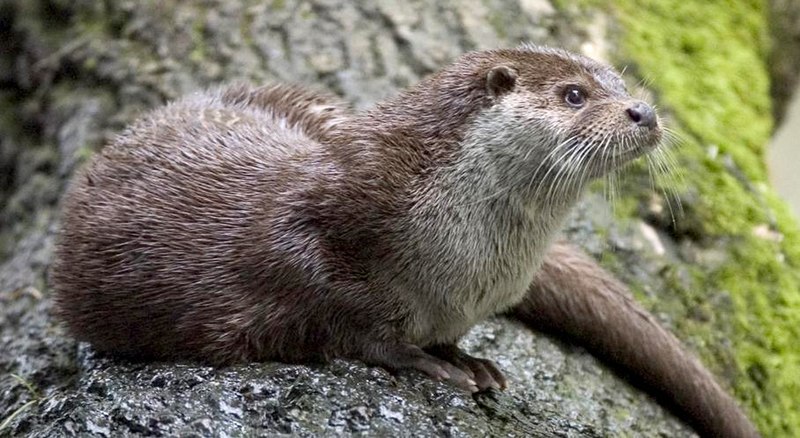
Otter in FranceBernard Landgraf
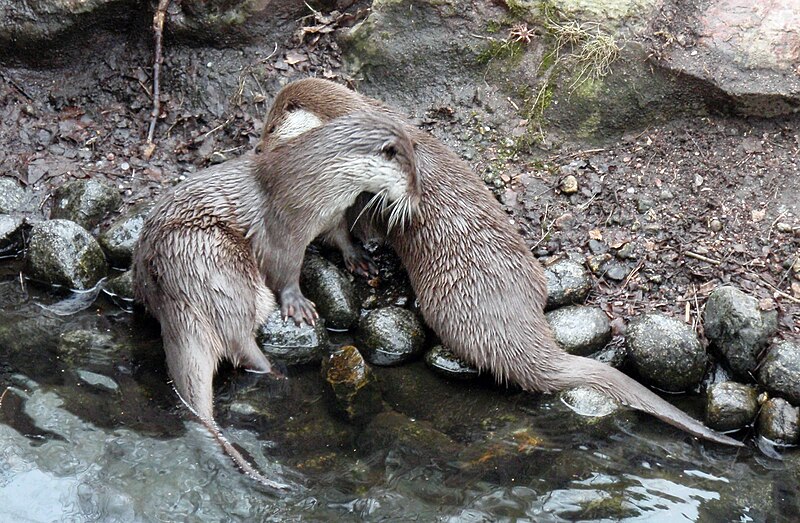
Otters playing
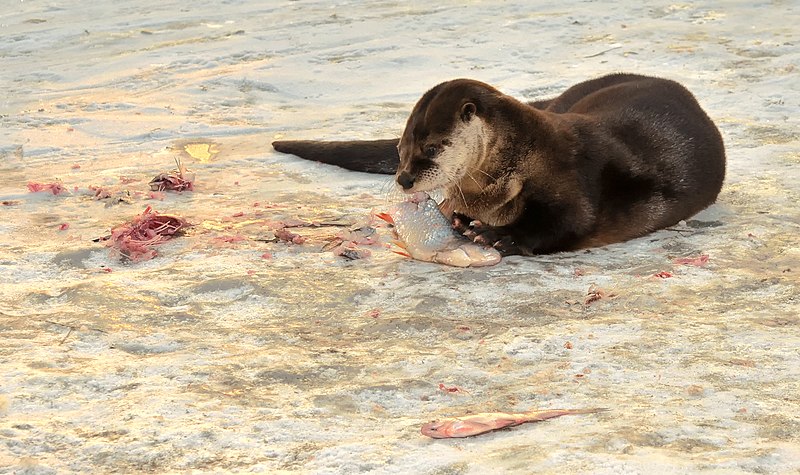
Otter eating a fish in Hannover Michael Gabler
The Soaring Return of the Red Kite
September 4, 2024
A welcome sight for motorists leaving London for the Home Counties, red kites (Milvus milvus) with their striking reddish-brown plumage and distinctive forked tails, are often seen gracefully gliding through the skies. These elegant raptors, known for their iconic hovering over farmers’ fields as they scan for small prey, embody a remarkable conservation success story, having made a dramatic comeback from the brink.
Although they are predators, red kites primarily feed on carrion, playing a crucial role as part of nature’s ‘cleanup crew.’ By removing dead animals from the landscape, they help prevent the spread of disease in turn promoting healthier ecosystems for other species. This scavenging process not only reduces the risk of pathogens spreading but also recycles vital nutrients back into the soil, enriching the environment.
The red kite’s diet includes small mammals, birds, and insects. While they prefer broadleaf deciduous woodlands, their varied diet has allowed them to adapt to a range of environments, including expanding urban areas where they can now often be seen in suburban neighbourhoods.
Like many of the animals we have covered, red kites serve as an indicator species, with their presence signaling a healthy environment. As apex predators, their population is regulated by the availability of prey species, rather than the other way around, as is often believed. This dynamic indicates that the ecosystems they inhabit can support a robust and diverse range of wildlife, reflecting the overall health and balance of the food chains they are part of.
In medieval times, red kites were a common sight in towns and cities, where they were revered and celebrated for their vital role in keeping the streets clean by scavenging waste. However, by the 19th century, they faced the tragic fate shared by many other important and magnificent native creatures: mass persecution as vermin by hunters and landowners. This relentless hunting led to a catastrophic decline in their populations, pushing them to the brink of extinction across the British Isles, with only a few breeding pairs surviving in Wales.
Efforts to reverse this tragic decline began in the late 20th century with the launch of dedicated conservation initiatives. During the 1980s and 1990s, breeding pairs were reintroduced into areas from which they had been eradicated, including the Chilterns, the Black Isle in Scotland, and Harewood in Yorkshire. Thanks to these efforts, the red kite population has rebounded significantly, with an estimated 5,000 breeding pairs now thriving across Britain.
Today, as you travel across the country, the sight of red kites soaring high serves as a powerful reminder of nature’s resilience and the positive impact of concerted conservation efforts. These graceful birds are often highlighted in education and public advocacy as a testament to how small, dedicated groups can successfully bring a species back from nearly disappearing entirely.
The dramatic recovery of the red kite, alongside other species in recent decades, offers a beacon of hope in an era often overshadowed by dire news about climate change and habitat destruction. Time and again, dedicated organisations and local groups have demonstrated that it is possible to reverse environmental decline through focused efforts on habitat preservation, restoration, and informed species reintroductions. While there is still much work to be done, the sight of red kites soaring and hovering over England’s fields is a heartening reminder that positive change remains within our reach.
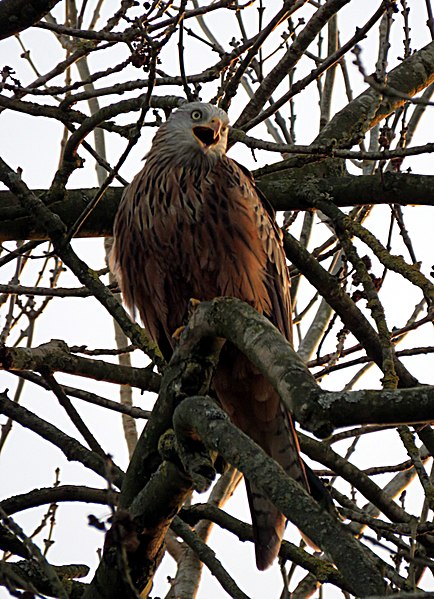
Young individual. Cookham
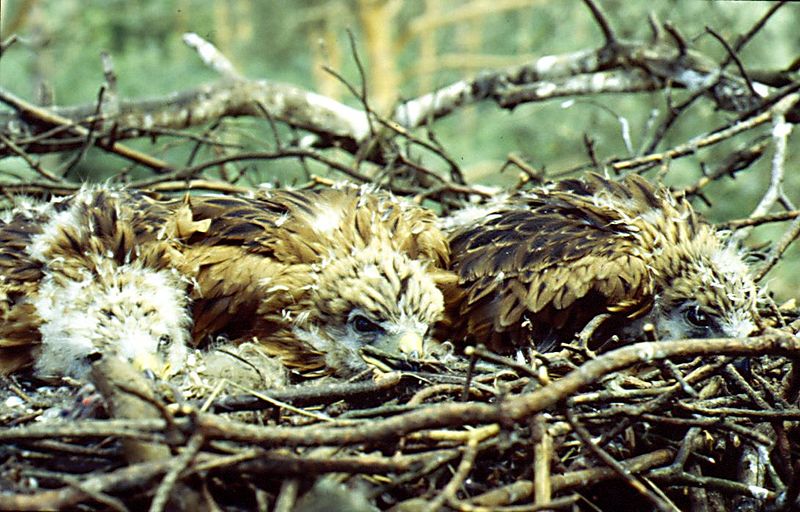
Three nesting Red Kites
Restoring One of Britain’s Most Endangered Bat Species
August 23, 2024
Reflecting the broader decline facing much of the country’s wildlife, Bechstein’s bat (Myotis bechsteinii) has been confined to southern England and parts of southeastern Wales following decades of intense agricultural management practices and devastation to ancient woodlands, habitat outside of which they are rarely found.
Like many bat species, it is elusive, making population estimates challenging. However, conservationists now estimate its numbers to be in the low tens of thousands, a sharp decline from previous decades.
These bats thrive in “old-growth” environments, favouring woodlands with a dense understory and abundant dead trees and branches for roosting, hibernating and breeding. They are highly dependent on the ecological activities of other species, often roosting in tree holes created by woodpeckers or behind loose, peeling bark created by mammals such as squirrels.
Being so highly adapted to its habitat has been a mixed blessing for conservationists. It allows for management efforts to be more tailored to particular needs while also leaving it vulnerable to slight changes in woodland conditions. Since these bats depend on mature forests, restoring suitable conditions for population growth can be a lengthy process, often requiring many years for the forest to regrow and support expanding populations.
Moreover, unlike other bat species that have adapted to human expansion by often taking refuge in man-made structures, Bechstein’s bats do not and therefore remain closely tied to the fate of ancient woodlands making the long term preservation of these ecosystems that much more crucial.
Local wildlife groups have taken on the challenge with monitoring and protective measures in recent years by organisations such as the Vincent Wildlife Trust (VWT), the Bat Conservation Trust.
A project worthy of highlighting has been underway at Bracketts Coppice Nature Reserve in Dorset, a site that has become a launchpad for the Bechstein’s bat’s recovery. Managed by the Dorset Wildlife Trust in partnership with the VWT, this reserve covers 46 hectares of ancient woodland. It is a designated Special Area of Conservation (SAC) and a Site of Special Scientific Interest (SSSI), primarily due to its large population of Bechstein’s bats.
Following the installation of 30 bat boxes in 1998, the population has continued to grow now providing over 25 years of data. Conservationists have focused on expanding and improving a dense understory of habitat growth using the ancient method of coppicing to allow sunlight to reach the forest floor.
In conclusion another species headed toward the brink of disappearing now has a tentative but encouraging future owing to the determined actions of small dedicated groups. However, to really make a difference to secure its future across a greater range much more work is needed. But for now things are looking brighter for the Bechstein’s bat.
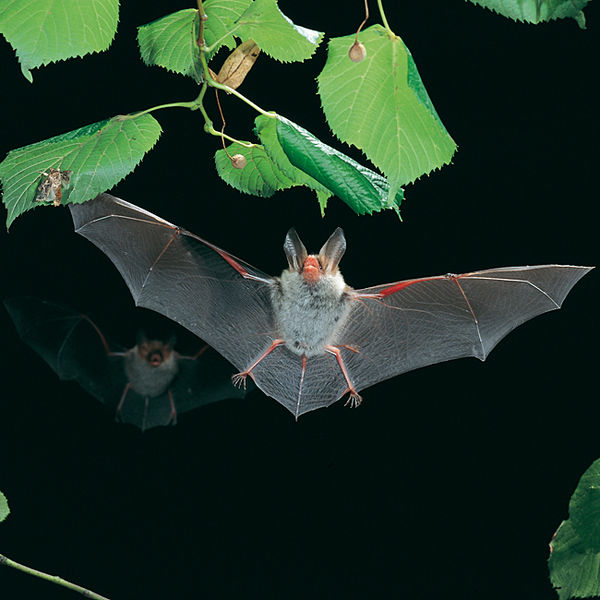
Myotis bechsteinii hunting moths
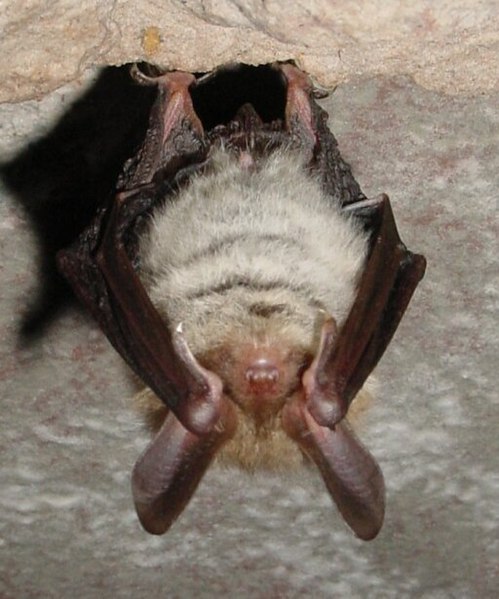
Bechstein`s bat resting in a cave
Saving the Sand Lizard
July 26, 2024
Found only among certain southern patches of heathland and coastal dunes, or areas with sandy soil such as Wales, Essex, Dorset and Hampshire, the vibrant green sand lizard (Lacerta agilis) is one of Britain’s rarest reptiles.
As with so many other species across the country, the sand lizard once enjoyed widespread habitats and a healthy environment. It requires the open, sunny conditions essential for the species’ thermoregulation and breeding. However, the dramatic urban development and intensification of agricultural chemical use of the 20th Century left the small reptile’s population in a sorry state. Exact numbers are difficult to ascertain due to its elusive character and the variability in monitoring practices.
In the nineties conservationists efforts began. These included captive breeding, habitat restoration and reintroductions alongside advocacy campaigns to engage and inspire the public. Sandy environments have been recreated along the Thames Estuary and animal grazing have been used to improve suitable heathlands. In Surrey and Dorset, topsoil was removed to expose bare sand perfect for nesting. Work is also underway to reconnect fragmented habitats through wildlife corridors to improve genetic diversity and reduce the risks from inbreeding.
Sand lizards serve as both predators and prey. Utilizing their speed and agility, they primarily feed on invertebrates, while also being a food source for birds of prey and mammals.
As indicator species they are a welcome sight. Their presence means the ecosystem is working well for other creatures and drives to conserve and increase their numbers serve wider biodiversity goals.
Amphibian and Reptile Conservation (ARC) has been at the forefront of captive breeding programs, successfully propagating sand lizard numbers in carefully monitored environments. These efforts have led to the release of hundreds of individuals into the wild, significantly aiding in the species’ recovery.
These reintroduction programs are carefully monitored to ensure the lizards adapt well to their new environments and begin breeding successfully. Sites are chosen based on habitat suitability, with ongoing management to maintain optimal conditions. The success of these programs is evidenced by the establishment of new, self-sustaining sand lizard populations in areas where they had previously disappeared.
Having acknowledged the wider plight of countless British species, the government has also taken positive steps by introducing policies and regulations to encourage local authorities and developers to consider wildlife in planning.
Despite these positive trends there is still a long way to go for vulnerable and rare species such as sand lizards. However, collaborative efforts offer hope.
By continuing to manage and expand appropriate sand and heath habitats, nurturing their populations through captive breeding and pressuring governments to introduce protective legislation the long term prospects of sand lizards begin to look brighter.
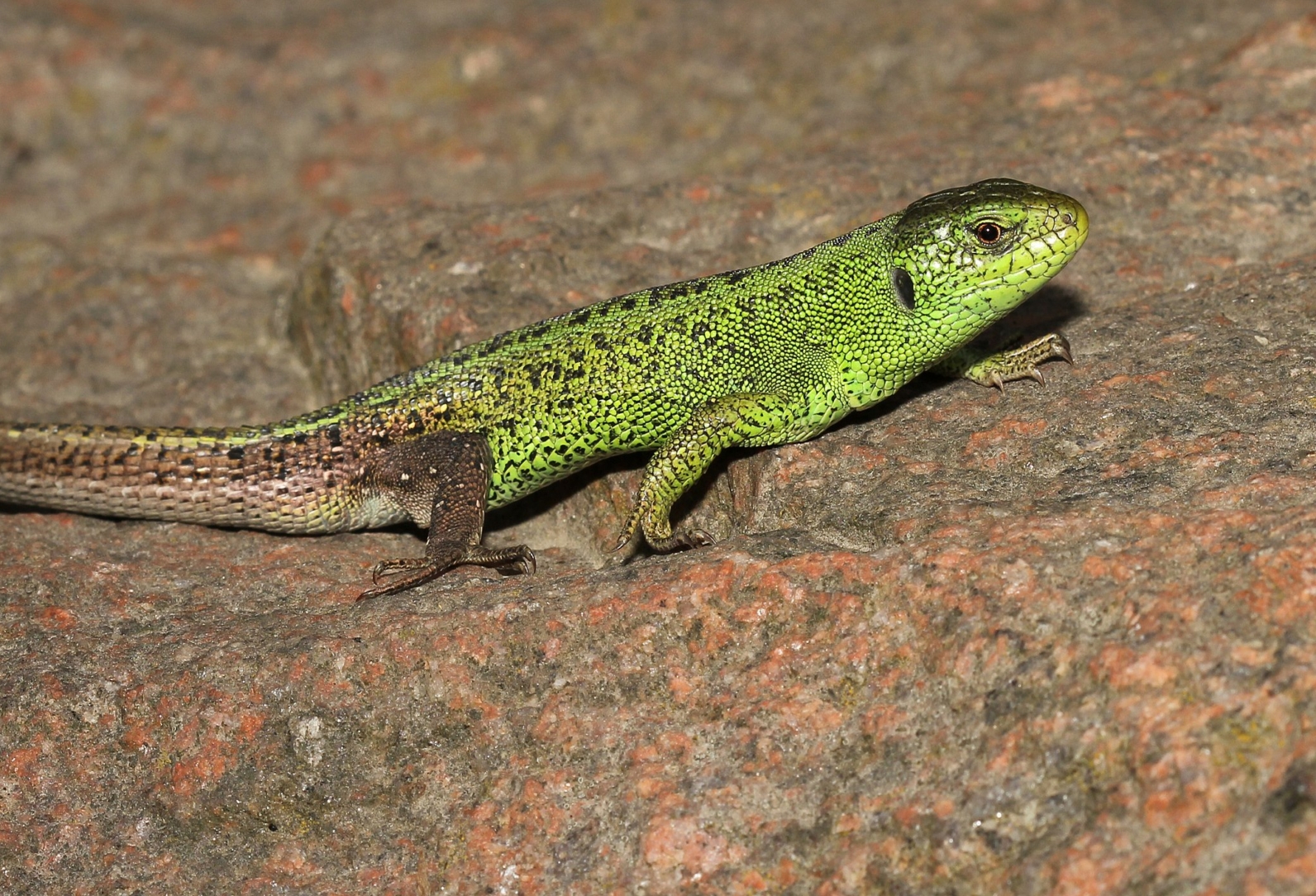
Male Sand Lizard
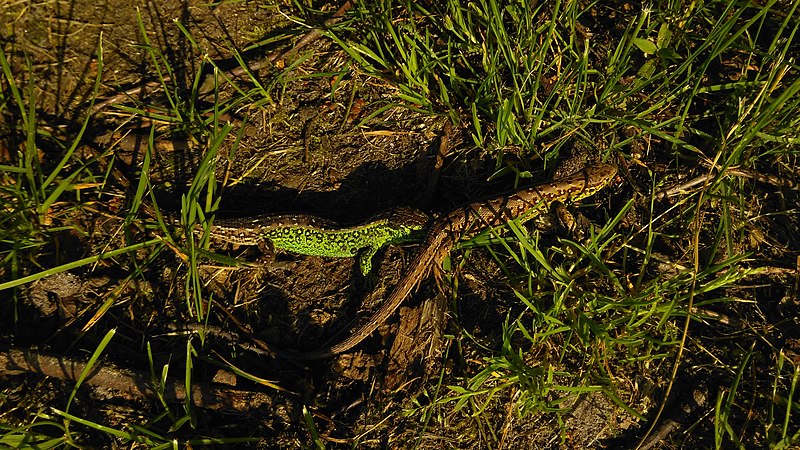
Male and Female Together
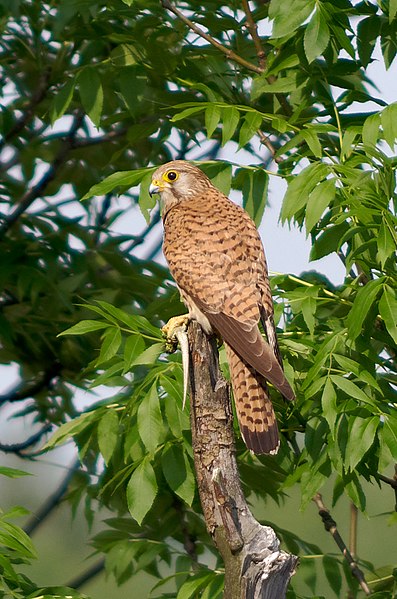
Common kestrel with caught sand lizard Jakub Halun
A Tribute to London Wildflowers
July 19, 2024
The United Nations defines a forest as any area where the tree canopy covers more than 10% of a land expanse larger than half a hectare. By this standard, London, with 21% of its vast 150,000 hectares covered by towering greenery, can be considered a forest in its own right. With over eight million trees, there are almost as many as there are people.
Despite being so interwoven by rail, inexhaustible brick, and endless tarmac, London is recognised as the world’s largest urban forest. Its trees span streets, parks, ancient churchyards, and woodlands, surpassing Berlin, which ranks second with a 14% canopy cover.
Tucked beneath this leafy celebration are hosts of magnificent wildflowers: primrose, bluebells, campion, knapweed. Urban meadows blossom through the wetlands of Walthamstow and Barnes, Hampstead Heath, Putney Heath, Ruislip. They thrive in the gardens of Dulwich, Regent’s Park, Bushy Park. The Big Smoke has grown into The Great Woods!
The iconic Common Knapweed (Centaurea nigra) alone invites over a hundred species of insect. Red Campion (Silene dioica), championed by folklore as the guardian of honey stores, is a chief biodiversity indicator. The Oxeye Daisy (Leucanthemum vulgare), symbol of new beginnings, is a pioneer species colonising tougher terrains for other flowers to follow.
Wildflowers have supported pollinators to unlock the exponential green growth we see across our city. Though many of these species such as bees, butterflies, and hoverflies have experienced devastating declines, these blooms provide desperately needed sanctuary to these crucial creatures.
Plants such as Clover (Trifolium spp.), extremely common across grassy areas, fix atmospheric nitrogen into the soil, enriching it and promoting the growth of other plant species.
The UK’s Bumblebee Conservation Trust highlights the importance of plants like the Kidney Vetch (Anthyllis vulneraria), which supports the endangered Small Blue butterfly. Similarly, the early spring blooms of the Primrose (Primula vulgaris) provide a vital nectar source for bees emerging from hibernation.
These flowers contribute significantly to the overall environmental health of the urban environment. Their deep root systems support soil stabilisation, reduce erosion, and improve natural water infiltration and flow. This is beneficial in urban areas where soil compaction and runoff can lead to flooding. This is particularly evident in heavy rains when drainage systems often overflow into the streets.
Owing to their beauty, public spaces adorned with wildflowers evoke strong feelings of harmonious pleasure where otherwise oppressive noise and toxic pollution sadden the soul. It is not surprising that green spaces are shown to improve mental health, reduce stress, and foster a sense of community and respect for one’s surroundings. A local sense of beauty even reduces littering, graffiti, and petty crime. Wildflower meadows provide a tranquil retreat from the usual stress of urban living. These retreats not only enhance biodiversity but also bring nature closer to London’s residents, offering opportunities for education and improving urban resilience to climate change.
To foster the thriving of wildflowers in public spaces across Britain is an endeavour with many blessings. London is a miracle. From enhancing biodiversity and supporting pollinators to improving environmental health and fostering community well-being, its forests are indispensable. Our city exemplifies how even densely populated cities can integrate and benefit from these natural treasures, reinforcing the timeless connection between humans and the natural world. And by valuing and protecting wildflowers, we not only safeguard our environment but also enrich our lives and the legacy we leave for future Londoners.
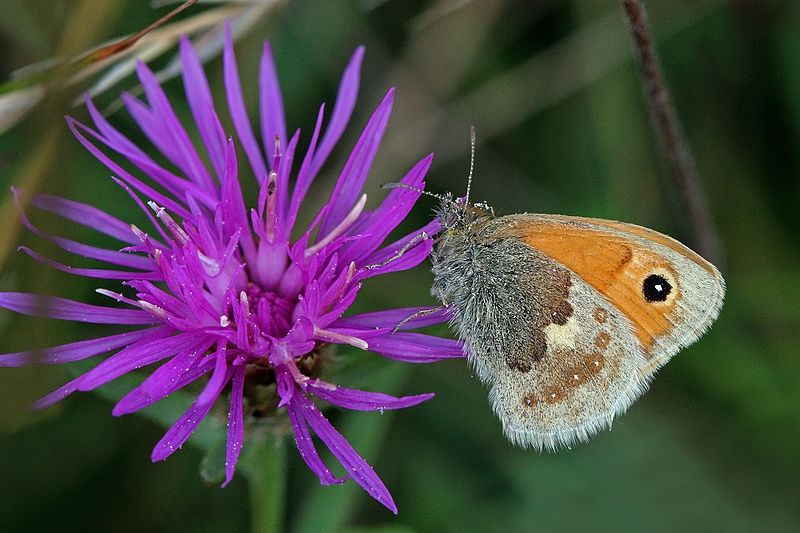
Small Heath Butterfly on Common Knapweed ( Centauria nigra ) C J Sharp 2016
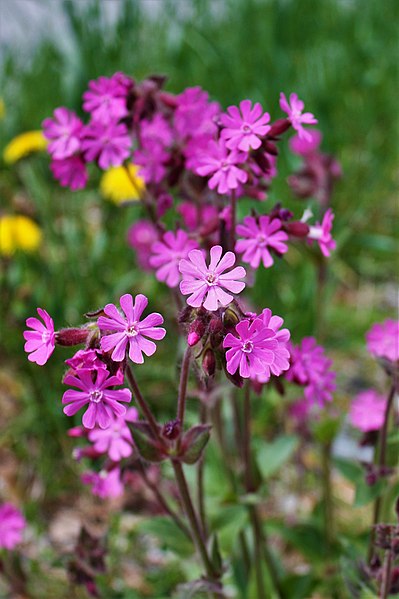
Red Campion ( Silene dioca ) P J Fischer 2016

Oxeye Daisy { Leucanthemum vulgare ) D Ramsey 2007
The Tentative Return of the Scottish Wildcat
July 2, 2024
Given the exciting recent news that Scottish wildcats have started breeding in the wild, let’s explore the overall importance of Felis silvestris grampia in their natural habitat.
We have previously covered wildcats more generally in our Wilding Profiles, but now let us look a little deeper.
The Scottish wildcat is one of the most iconic and endangered mammal species in the United Kingdom. Known for its elusive nature and resemblance to many domesticated cats, this wild relative favours the remote, rugged heathlands and woodlands. Here, it thrives, hunting small mammals through dense thickets.
These vegetation-covered habitats provide protection, particularly for kittens, against predatory birds such as sparrowhawks and golden eagles, as well as the bluster and dreich Scottish weather. Historically, these cats hunted across the country, but human-led habitat loss and development have restricted their numbers to the Highlands.
Scottish wildcats are larger and more robust than their house-dwelling counterparts. They have much bushier tails with distinctive black rings and dark tips. Generally, their heads are larger, and due to their environment, they sport much thicker fur.
Their diet primarily consists of small mammals, particularly rabbits and rodents. They are also known to hunt small birds and pluck amphibians from the water. As with most cats, wildcats are solitary hunters, preferring to stalk during the night and twilight hours. Using their keen senses, they choose stealth over pursuit, and the pounce over the chase.
They reproduce once a year during spring, after the mating season in the winter months. After around 65 days of pregnancy, they give birth to a litter of between two and six kittens in the seclusion and safety of their deep forest dens. Following six to eight weeks of milk, the kittens are weaned but remain at their mother’s side until around six months of age, reaching full sexual maturity at one year.
Preferring lives of solitude over living in groups, their territories can vary according to the availability of prey and quality of habitats. Males generally have larger territories that overlap with those of several females, while females have smaller, more exclusive territories. Territorial boundaries are marked using scent glands located on their face and paws, as well as through urine spraying and fecal deposits.
The current population of Scottish wildcats is believed to be between 100 and 300 individuals. However, with this welcome recent news, high levels of public advocacy, and conservation support, let’s hope these numbers continue to increase and a once-widespread iconic species of the British Isles can thrive.
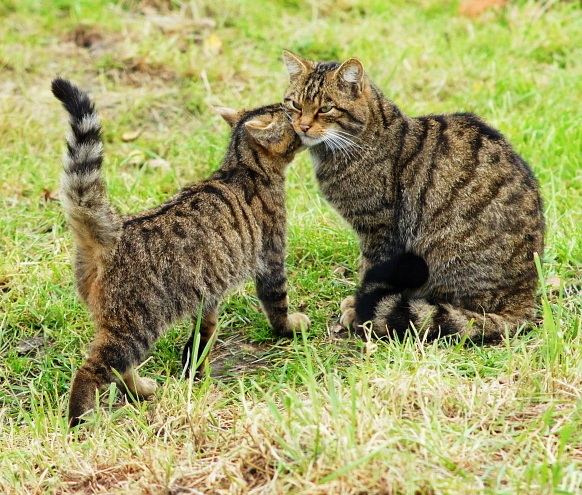
Mother with kitten. British Wildlife Centre, Surrey.
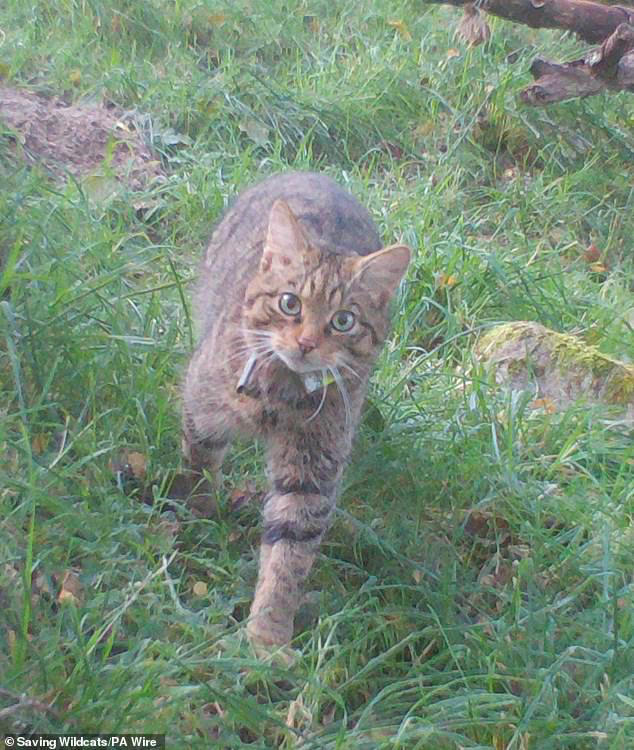
Released cat on camera. Saving Wildcats.PA Wire.
Britain’s adders: the forgotten serpent?
June 5, 2024
Britain’s only venomous snake, the adder (Vipera berus), is experiencing a significant decline. Once widespread throughout the country, these elusive snakes have been silently enduring a devastating population collapse for decades.
A recent survey indicates the population has suffered up to a 90% decrease, reduced to the dwindling pockets of their heathland, moorland, and forest edge habitats. Technically, they can be spotted across all regions of the country, with numbers now believed to rest at approximately 100,000. Though this leaves them out of danger of extinction for now, the trend is worrying, especially given their status as an indicator species: a measure of overall biodiversity health.
All has not gone completely unnoticed. The Wildlife and Countryside Act 1981 made it illegal to kill, injure, harm, or sell adders, and they have been classified as a Priority Species under the UK Biodiversity Action Plan. However, generally in wider society, the plight of the adder falls outside mainstream conversation.
Several factors have contributed to the adder’s sharp decline. Habitat loss and fragmentation through human development are primary culprits. Farm expansion, urban development, and infrastructure projects have encroached upon their natural habitats, leaving them with increasingly isolated and degraded environments, harming their genetic diversity and access to food sources.
Adders rely on specific temperature ranges to regulate their body heat, and changes in weather patterns can disrupt their hibernation cycles (October to March) and reproductive success. This has left them particularly vulnerable to climate change. Additionally, human persecution, driven by fear and misunderstanding of these snakes, continues to impact their chances for recovery. Adders are sadly often killed on sight, despite being generally non-aggressive and posing little threat to humans when left undisturbed.
Like other mid-level predators, adders help control populations of small mammals, such as rodents, which serve as their primary prey. They also provide crucial prey for larger predators, particularly birds of prey and mammals such as foxes.
Adders appear in various British folklore and myths, often associated with danger and mystery due to their venomous nature. They were sometimes believed to be creatures of ill omen or associated with witches and dark magic. However, they were also respected and feared, symbolising the wild and untamed aspects of nature. In Shakespeare’s works, snakes are often used to depict betrayal and hidden dangers.
The adder’s image is also prevalent in local traditions and stories, particularly in rural areas. For many, encountering an adder in the wild remains a memorable and profound experience, connecting people to the natural world and its mysteries.
It is for these reasons that more must be done to save the adder.
Educational campaigns aimed at dispelling myths and reducing the fear surrounding these snakes would promote a more positive perception. Community involvement through workshops, public talks, and the distribution of educational materials. By fostering a better understanding and appreciation of adders, these initiatives help build support for their conservation.
Mitigating specific threats to adders is a key aspect of conservation efforts. Given the devastating levels of defragmentation their populations suffer due to infrastructure networks, road mortality is a significant issue, and measures such as wildlife crossings and road signage reduce the risk of roadkill.
Several organisations are at the forefront of adder conservation, particularly The Amphibian and Reptile Conservation (ARC) Trust, which conducts research, habitat management, and public outreach.
By addressing the threats adders face, many other species and habitats will benefit, not just Britain’s only native venomous snake. Through a combination of research, public engagement, and policy measures, the decline of this remarkable species can be reversed for future generations.
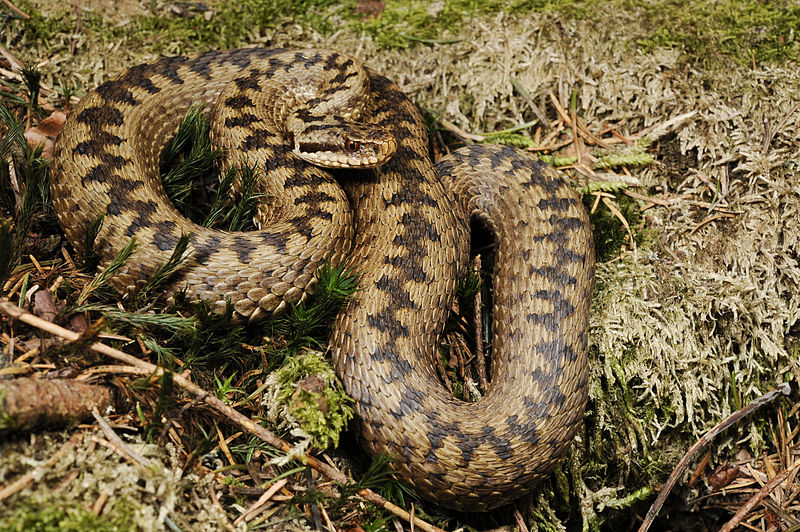
Common Adder.
By Benny Trap.
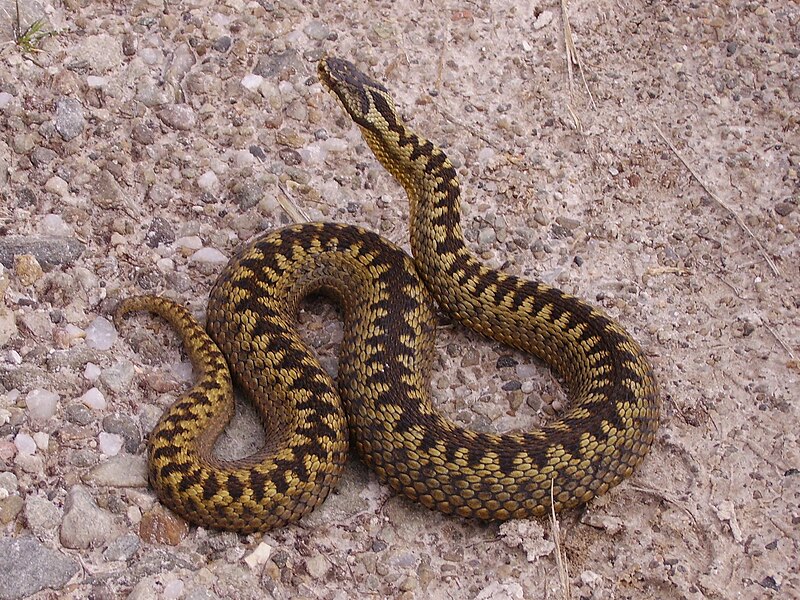
Adult female. Loch Shin, Scotland 2008.
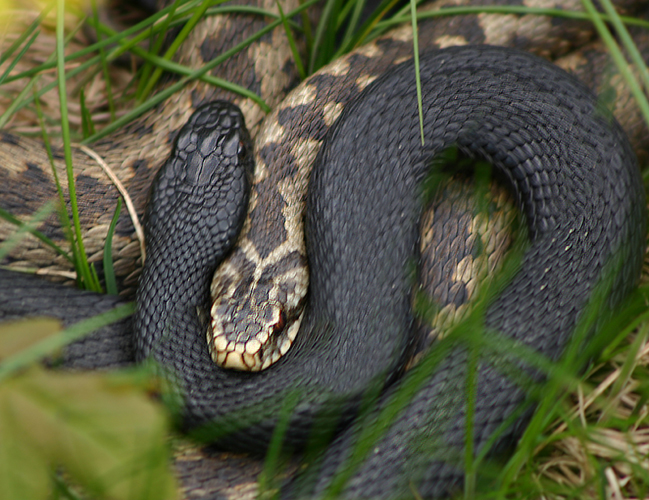
Two colour variations. 2008.
The incredible comeback of Britain’s Barn Owls
May 30, 2024
With its charming heart-shaped face and graceful plumage, the barn owl (Tyto alba)’s haunting nocturnal cry can be heard through the British night as it preys upon small mammals such as mice, shrews and voles.
As the iconic apex predator maintains control over these small mammal populations, they have become farmers’ friends as natural pest controllers. Centuries of good-will have given rise to barn owls being a most welcome sight and praised through folklore and art.
A single barn owl family (usually three- twelve individuals) can consume thousands of rodents a year not only providing significant economic benefits to farmers, but improving habitats such as grasslands, marshes and fields.
An overpopulation of rodents brings a plethora of problems for surrounding plants and beasts. They feast on small birds and their eggs; seedlings which inhibit the proliferation of flora; and act as conduits of diseases. This hinders agricultural production and increases health risks to animals, plants and humans.
The health of barn owl populations therefore reflects the broader health of their surrounding ecosystems, as they are sensitive to changes in land use and environmental quality. Conservation efforts aimed at protecting barn owls often result in broader environmental benefits, such as the preservation of hedgerows and field margins that support a variety of other wildlife species.
Barn owls hold a prominent place in the cultural fabric of the British Isles. Their ethereal appearance and nocturnal habits have inspired numerous myths, legends, and superstitions. Among the celts, owls were considered to possess wisdom and were believed to be guardians of the underworld, associated with the afterlife and transformation.
In English folklore, the barn owl was often seen as a harbinger of change, both good and ill. Their eerie calls in the night led to their association with ghosts and spirits. However, they were also seen as symbols of protection, believed to keep away evil spirits from farms and villages.
In his plays William Shakespeare often referenced the “obscure bird” and their likeness has appeared in countless artforms. Famously in more recent history, J.K. Rowling’s Harry Potter series further cemented the barn owl’s place in popular culture with the character Hedwig.
Historically, barn owls have been closely associated with pre-modern human settlements and agricultural livelihoods. Their name itself derives from their tendency to nest in barns, churches, and other man-made typically rural structures.
The 20th century brought significant changes that impacted barn owl populations. The intensification of agriculture, the loss of hedgerows, the use of pesticides, and changes in building practices led to a decline in suitable nesting and hunting habitats, as well as prey availability. By the mid-20th century, barn owl numbers had decreased dramatically. Around 1900, barn owls were a common sight, with populations believed to be healthy and stable, numbering in the tens of thousands of breeding pairs. By 1980, this number had decreased to approximately 4,000.
In recent decades, British organisations as well as the public have achieved extraordinary levels of success in stabilising and even drastically increasing barn owl populations across the British Isles. Organisations such as the Barn Owl Trust have been instrumental in these efforts, promoting habitat restoration, providing nest boxes, and raising public awareness. Their numbers are believed to be nine to twelve thousand breeding pairs and steadily growing.
One of the key strategies in barn owl conservation has been the installation of nest boxes. Though a simple solution, they provide safe nesting sites in areas where natural sites are scarce. These boxes have been placed in barns, throughout woodlands, and in other suitable locations such as high buildings, helping to support breeding pairs and increase fledgling survival rates.
The story of the barn owl is an inspiring case of how small groups of dedicated conservationists and communities, with a little ingenuity and effort, can have extraordinarily positive effects on one species. However, the future of barn owls in the British Isles still depends on continued conservation efforts and sustainable land management practices.
As climate change and habitat loss pose ongoing threats, it is essential to maintain and expand initiatives that support barn owl populations and the ecosystems they inhabit.
The barn owl is more than just a striking bird of prey; it is a symbol of ecological balance, cultural heritage, and historical significance in the British Isles. Protecting and preserving this species is about serving our duty to nature and the cultural history that defines our region.
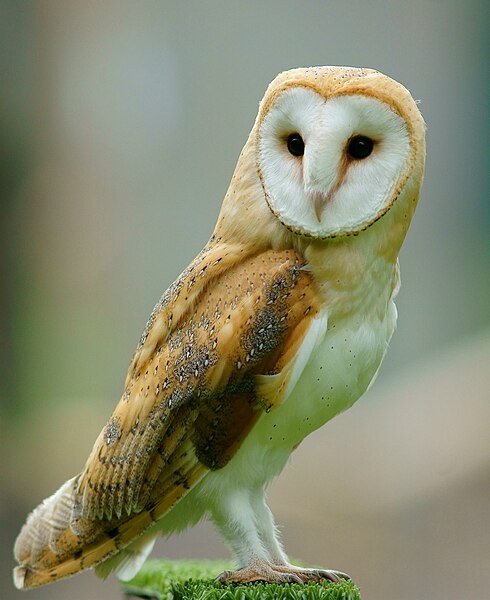
Barn Owl at the British Wildlife Centre 2011,Peter Trimming
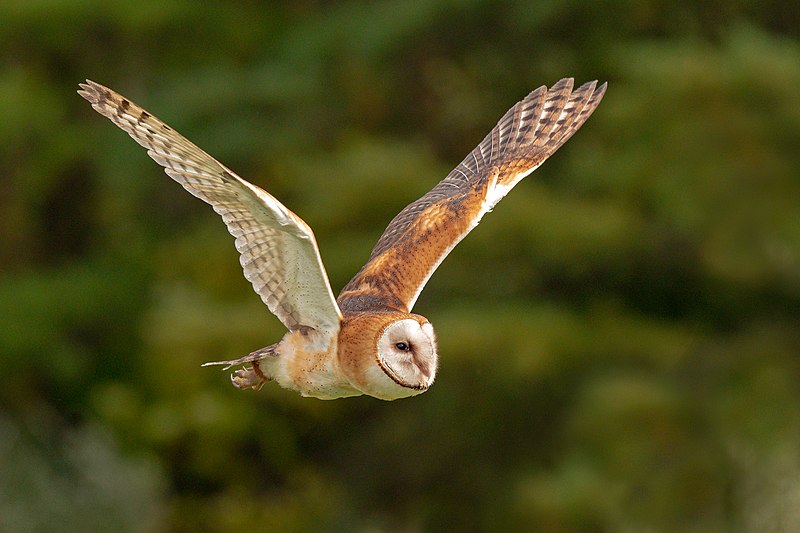
Barn Owl in flight 2018Peter Burian
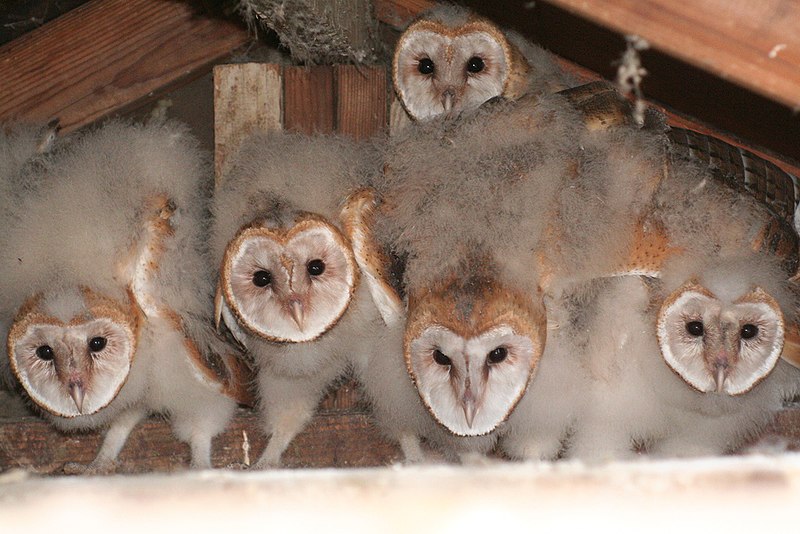
Baby Barn Owls moulting
Britain’s most beloved species: The Wild Horse
May 2, 2024
Across the rolling hills and rugged landscapes, roaming wild horses have stood as an emblem of untamed freedom. These courtly creatures, descendants of ancient equine breeds from across Europe, have held a steady presence across the British Isles. From the windswept moors of boggy Dartmoor to the remote windswept reaches of the Scottish Highlands, wild horses shape landscapes and have left indelible marks on Britain’s culture.
Through grazing (feeding on low-growing plants such as grasses) and browsing (high-growing plants such as trees and bushes), wild horses help manage vegetation, preventing the dominance of certain species. Their selective feeding habits create a rich collage of habitats, from open grasslands to scrubby woodlands, which support a diverse array of other wildlife.
In habitats where large herbivores have been absent, the reintroduction of wild horses can trigger a cascade of positive ecological effects known as trophic rewilding. By mimicking the natural grazing patterns of their ancestors, these horses can rejuvenate degraded landscapes, restore soil health, enhance water retention, and foster the regeneration of native vegetation.
Moreover, wild horses serve as keystone species, exerting an outsized influence on their environment relative to their populations. Their presence shapes the behavior of other species contributing to overall habitat resilience and stability.
The story of wild horses in Britain goes back thousands of years. Archaeological evidence suggests that breeds, such as the now-extinct tarpan and the still-surviving Exmoor and Welsh ponies, once roamed freely across the British landscape. These resilient creatures were not only companions to our ancestors but also vital assets in agriculture, transportation, and warfare.
Prominent figures in Anglo-Saxon mythology, Hengist and Horsa, embody the quintessential connection between humans and horses. According to legend, they were two brothers, chieftains, and legendary warriors who led the Anglo-Saxon migration to Britain in the 5th century. Their names, Hengist meaning “stallion” and Horsa meaning “horse,” evoke the respect and significance these beasts held.
From the Celtic horse goddess Epona to the legendary Kelpie of Scottish folklore, these icons symbolise strength, freedom, and the enduring bond between humans and horses. Moreover, wild horses continue to play a vital role in contemporary society, serving as ambassadors for conservation and wildlife preservation.
In addition to their cultural significance, wild horses also provide opportunities for ecotourism and outdoor recreation, attracting visitors from around the world to witness their beauty and observe their behavior in the wild. Whether trekking through the mists of Devon or exploring the rugged terrain of the Scottish Highlands, encountering wild horses in their natural habitat is a transformative experience that fosters a deeper connection to the natural world.
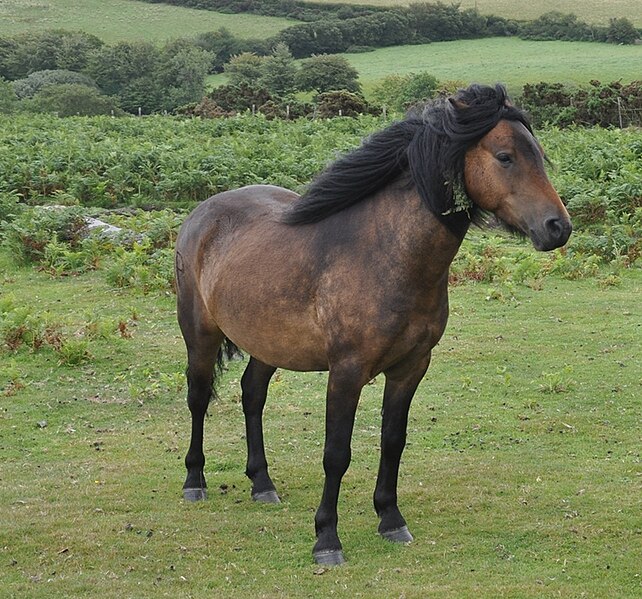
Dartmoor Pony, 2011.
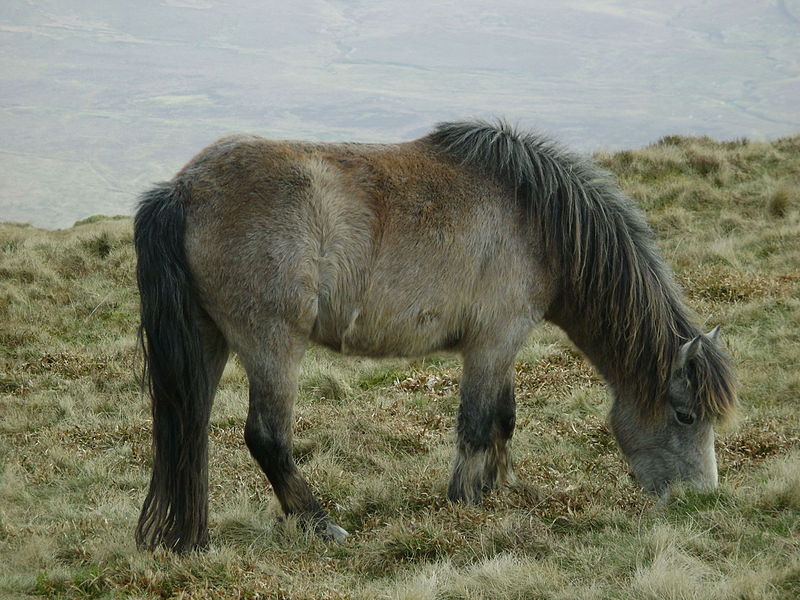
Pony in the mountains of Snowdonia. 2008.
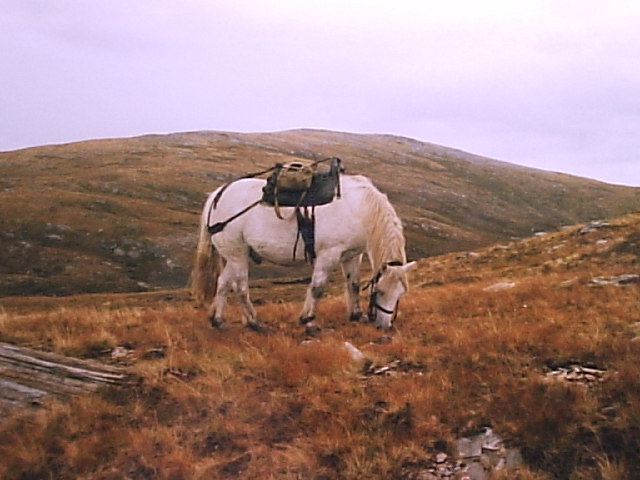
Highland Pony, Looking towards Meall na Leitreach. 1998
The Fate of Curlews
April 25, 2024
Found in open wetlands or upper moorlands such as Morecambe Bay, the Scottish Highlands, or patches of The Pennines, this distinct ancient wader, noted for its long, curved bill, mottled brown plumage, and somewhat haunting call, hangs on against a tide of habitat destruction and ecological devastation.
Along with countless other species, the curlew’s fate is at the mercy of Britain’s environmental policy choices. As a flagship species for these habitats, the curlew serves as a barometer for their health. Its drastic decline signals broader ecological imbalances and threats to climate resilience for the nation.
Wetlands, where curlews often breed and forage, are among the most threatened ecosystems globally and, since the 19th Century, are believed to have decreased by as much as 90%. Drainage for agriculture, urbanisation, and climate change-induced alterations in water levels pose significant challenges to these habitats. Consequently, curlew populations have plummeted by as much as 50% since the 1990s, prompting conservation groups such as Curlew Action to begin working tirelessly to safeguard their dwindling numbers.
Beyond breeding grounds, curlews rely on coastal estuaries and mudflats as crucial wintering sites. These areas provide abundant food resources, such as mud-buried invertebrates, essential for the curlew’s survival during the harsh winter months. Protecting these coastal habitats is essential not only for curlews but also for the myriad of other dependent species.
The curlew’s association with Britain’s history is as rich as the landscapes it inhabits. Throughout the ages, this iconic bird has been a fixture in culture, serving as a symbol of wilderness and freedom.
In Celtic mythology, the curlew was revered as a messenger of the gods, its melancholy cry (“COUR-Li, COUR-Li”) evoking both sorrow and spirituality. Across Britain, its distinctive call has inspired poets and writers, earning it a place in the annals of literature alongside other iconic birds like the skylark and nightingale through works such as W.B Yeats, “He Reproves The Curlew”, or Dylan Thomas, “Author’s Prologue”.
Curlew Action Director Mary Colwell, in her book “Curlew Moon” (2018), recounts her 500-mile walk across the UK and Ireland to raise awareness about the curlew’s struggles. Along the way, she discovers associated stories, poems, and myths, highlighting the deep connection between the natural world and culture.
In regions like the Scottish Highlands and the Welsh countryside, the curlew’s call is synonymous with the soundscape of the moors and marshes. Its arrival heralds the changing seasons, marking the transition from winter dormancy to spring renewal as it comes to breed.
Despite its ecological, historical, and cultural importance, the curlew faces an uncertain future in Britain. Habitat loss, predation, and climate change pose formidable challenges to its survival, necessitating concerted conservation efforts to reverse its decline.
Key initiatives, such as habitat restoration, predator control, and promoting education, are vital for safeguarding curlew populations and their habitats. By restoring wetlands, conserving coastal ecosystems, and raising awareness about the curlew’s plight, we can ensure that this iconic bird continues to grace Britain’s landscapes.
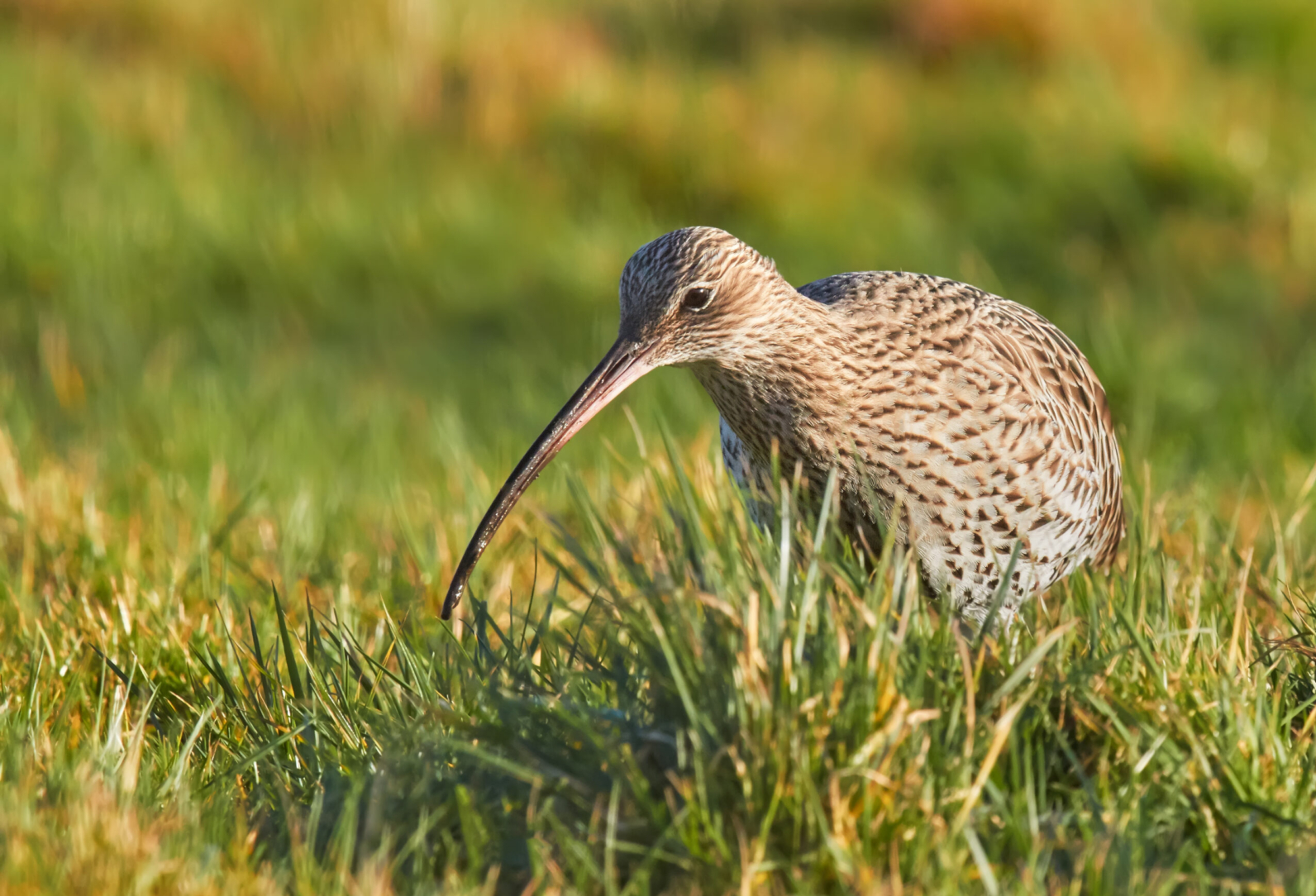
CurlewMary Colwell www.curlewaction.org
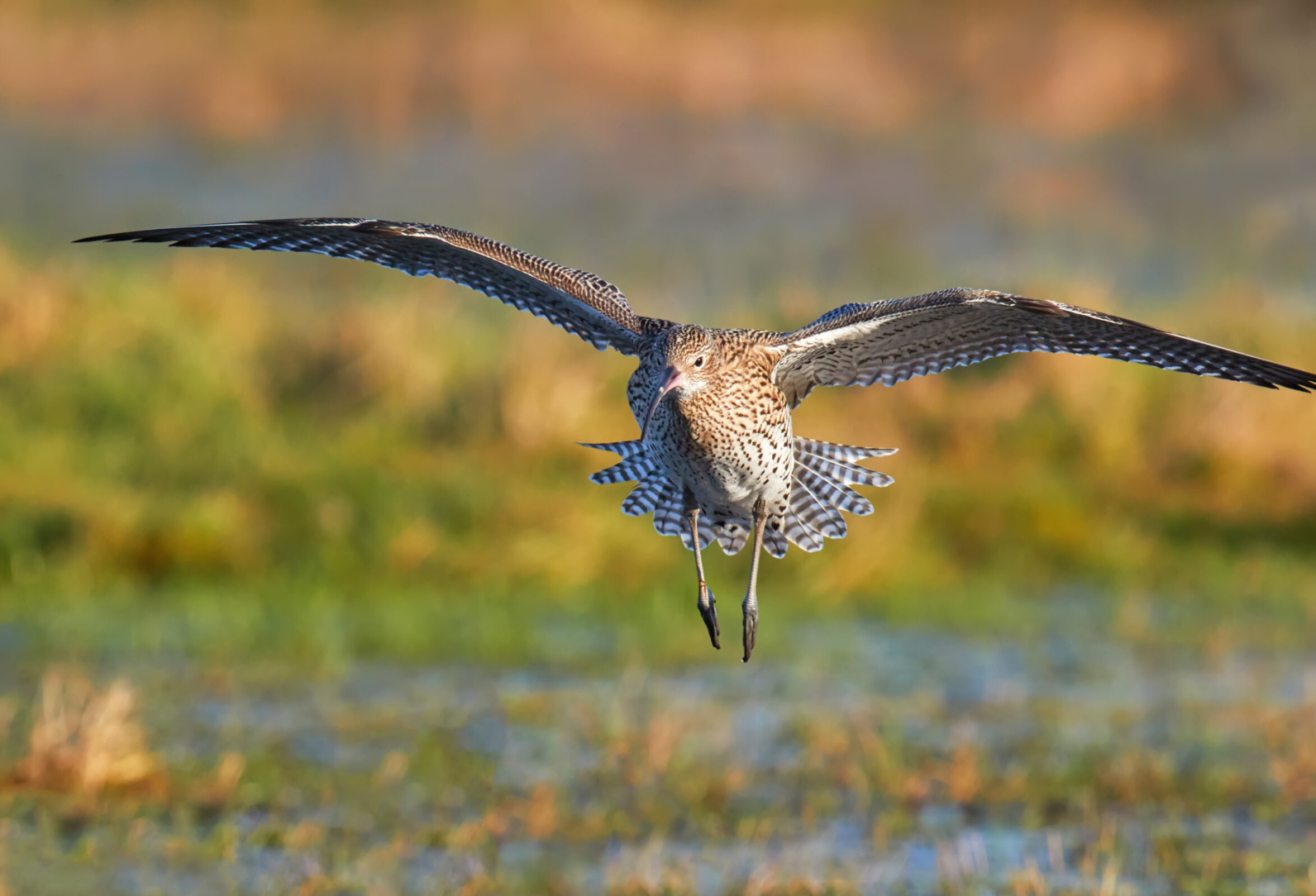
Curlew in flightMary Colwell
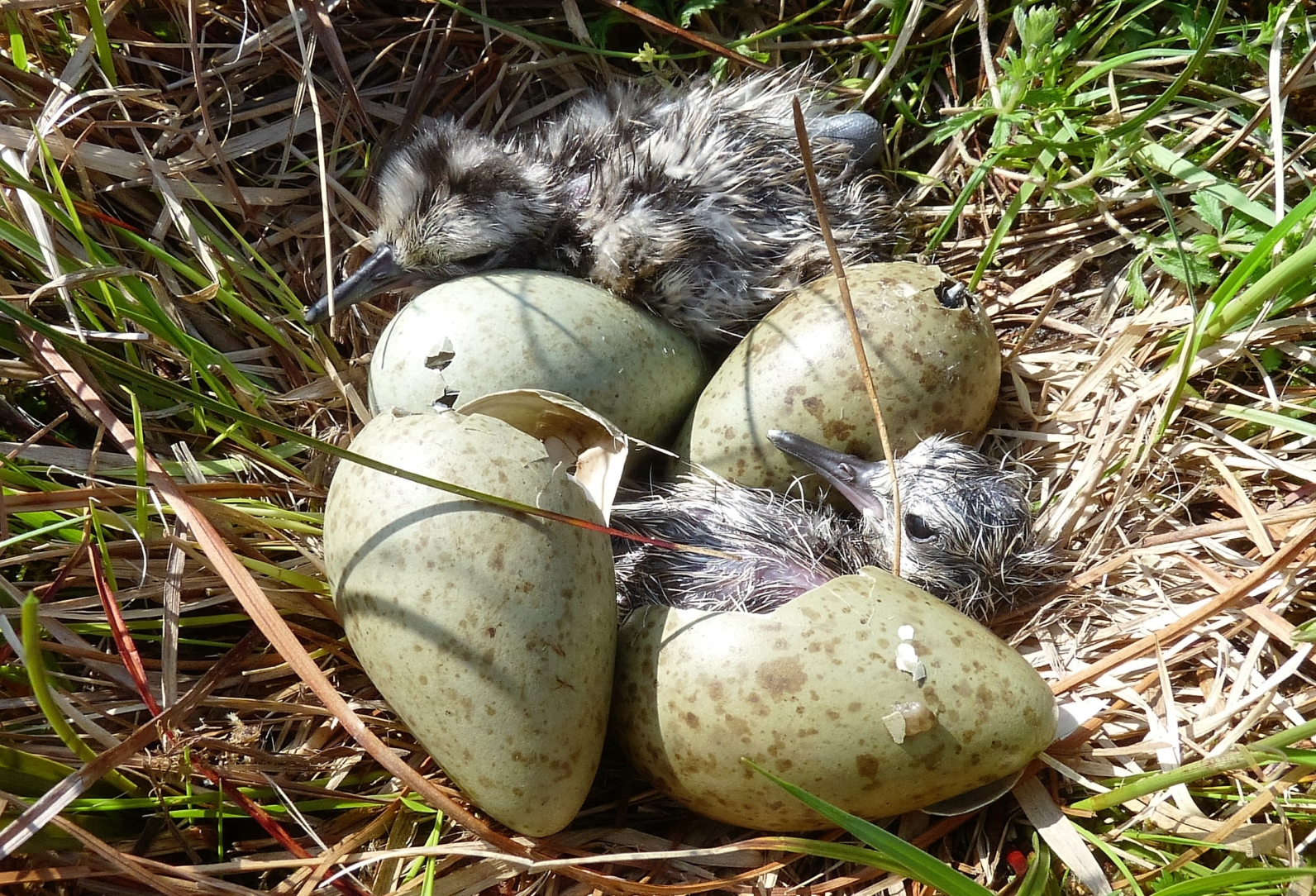
Curlews hatching on Dartmoor
The Triple Impact of Cleanliness: Environmental, Mental, and Societal Health
April 9, 2024
Among the commotion and hurry of the modern world, the cleanliness of our streets, communities, and infrastructure often falls down the list of priorities. Yet, maintaining cleanliness in these spaces holds a deep significance. Beyond mere aesthetics, the cleanliness of our surroundings significantly impacts not only environmental health but positive mental well-being and even a reduction in crime.
Firstly, the cleanliness of our streets and communities directly correlates with environmental health. Littered streets, polluted waterways, and neglected public spaces pose severe threats to ecosystems and wildlife. Plastic waste, in particular, has garnered widespread attention due to its persistent presence in the environment and detrimental effects on marine life.
When streets are clean, there is a reduced likelihood of litter finding its way into storm drains and bodies of water, thus mitigating pollution. Moreover, appropriate waste management practices, including recycling and composting, contribute to resource conservation and minimisation of landfill waste. Clean streets also promote air quality by reducing the accumulation of pollutants, such as dust and particulate matter, which can have adverse effects on respiratory health.
By prioritising the cleanliness of our surroundings, we uphold our responsibility to not only nature but those around us. Through collective action, such as organised community initiatives such as the fantastic CleanupUK we can preserve natural habitats, protect biodiversity, and ensure a sustainable future for generations to come.
Litter is depressing. Beyond its tangible environmental benefits, cleanliness plays a vital role in nurturing positive mental health. Numerous studies have highlighted the psychological impact of cluttered or unkempt surroundings on our overall well-being. Living in environments marred by refuse, graffiti, and dilapidated infrastructure can evoke feelings of stress, anxiety, and even depression.
Conversely, clean and well-maintained public spaces foster a sense of local pride, safety, and belonging among locals. Access to green spaces, parks, and vibrant streetscapes has been linked to improved mood, reduced levels of stress, and enhanced cognitive function. These spaces provide opportunities for relaxation, recreation, and social interaction, all of which are essential for promoting mental well-being.
Furthermore, the act of cleaning and beautifying one’s surroundings can have therapeutic effects, instilling a sense of purpose and accomplishment. This is particularly helpful for those at society’s fringes such as the lonely, the elderly or marginalised youth. Community-led clean-up efforts not only enhance the physical appearance of neighborhoods but also strengthen social bonds and foster a shared sense of responsibility for the common good.
In essence, investing in the cleanliness of our communities is an investment in mental health. By creating environments that uplift and inspire, we cultivate resilience, happiness, and a greater sense of connection among individuals and communities.
In addition to its environmental and mental health benefits, maintaining cleanliness plays a pivotal role in crime prevention and community safety. Research has shown a clear correlation between disorderly environments and elevated crime rates. Areas characterised by neglect, vandalism, and urban decay are more susceptible to illicit activities, ranging from petty theft to more serious offenses.
Clean streets and well-maintained public spaces send a powerful message that a community cares about its appearance and will not tolerate antisocial behaviour. When neighborhoods are clean and orderly, residents are more likely to actively contribute to crime prevention efforts. This collective vigilance, known as the “broken windows theory,” suggests that addressing minor signs of disorder can deter more serious criminal activity from taking root. This theory worked miracles when applied to crime-ridden New York in the nineties significantly reducing all types of criminal activity.
Moreover, clean and well-lit streets create a sense of visibility and surveillance, making it harder for criminals to operate undetected. By fostering a sense of ownership and community cohesion, cleanliness acts as a natural deterrent to crime, helping to create safer environments for all residents.
By prioritizing cleanliness in our everyday lives and investing in the upkeep of our shared spaces, we can create healthier, happier, and safer communities for everyone. Let us embrace the triple impact of cleanliness!

Spitafields City Farm, London ‘Staffbase GmbH [employee communications platform business] used the hub at the farm to help clean up Allen Gardens and Brick Lane station park

Rochdale Community Initiatives, Rochdale Pictures from the Hub’s first litter pick on 30th July 2023, involving the two local Mosques: Neeli Masjid and Madina Masjid
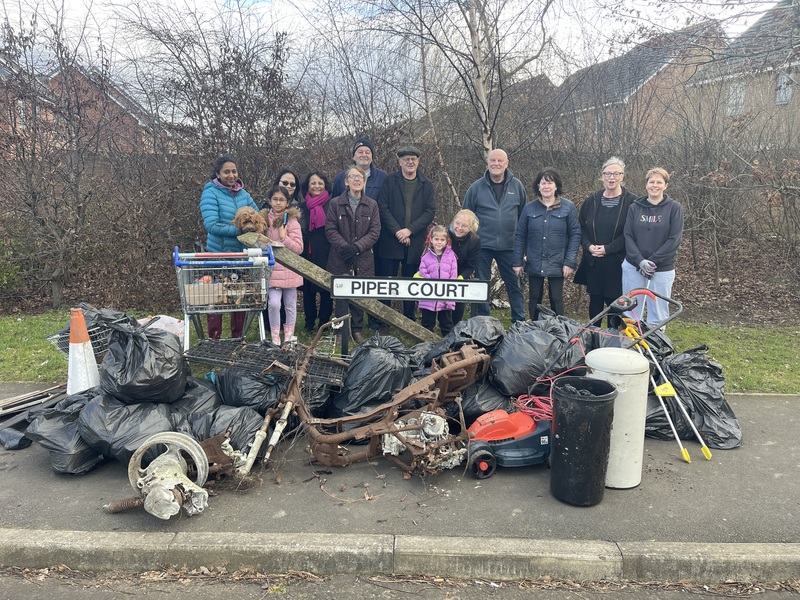
Keep Kenton Tidy, Newcastle A growing community group which meets regularly, working closely with local councillors to improve their local area
Celebrating Britain’s most beloved species: The Badger
March 20, 2024
During the twilight hours, the elusive Meles meles, also known as the badger, bustles through its domain, engaging in vital tasks of foraging, territorial upkeep, and habitat cultivation. Symbolising the intricate relationship between British society and its natural environment, this often overlooked creature, tragically common as roadside casualties, holds a pivotal position among native fauna.
As omnivores, their diet includes earthworms, insects, small mammals, fruits, and roots, contributing to the regulation of invertebrate populations and the dispersal of seeds through their fur and droppings. Their burrowing behavior brings air to the soil promoting plant growth. Moreover, abandoned badger setts provide shelter for numerous other species, from foxes to rabbits, highlighting their significance as keystone species.
Despite their nocturnal habits and elusive nature, badgers leave a tangible mark on the landscape, evident in the intricate networks of tunnels and chambers that comprise their underground homes. These setts, often passed down through generations, serve as vital refuges for badger clans and contribute to the overall health of the ecosystem.
Archaeological evidence suggests that badgers have inhabited the British Isles since the last Ice Age, making them one of the oldest surviving mammals in the region. Throughout the centuries, badgers have been both revered and reviled, their image intertwined with folklore, mythology, and traditional beliefs.
In Celtic mythology, the badger is associated with wisdom and protection, revered for its nocturnal prowess and tenacity. In contrast, medieval European folklore often depicted badgers as cunning and secretive creatures, sometimes even associated with witchcraft and dark magic.
In literature, badgers often appear as wise and benevolent characters, exemplified by Kenneth Grahame’s “The Wind in the Willows,” where the character of Badger serves as a respected elder and mentor to the other woodland creatures. Similarly, in Beatrix Potter’s “The Tale of Mr. Tod,” badgers are portrayed as valiant defenders of their territory against cunning adversaries.
The badger’s historical significance extends beyond folklore to more practical realms. In the Middle Ages, badger hunting was a popular sport among nobility, with dogs specifically bred and trained to track them down. However, as Britain transitioned from a rural to an industrial society, badgers faced increasing persecution due to concerns over crop damage and the spread of disease.
Despite centuries of human interaction, the badger remains an enduring symbol of British wildlife. Its distinctive black and white facial markings, sturdy build, and nocturnal habits have captured the imagination of artists, writers, and naturalists alike.
Despite their cultural significance, badgers face numerous threats in the modern era. Habitat loss, fragmentation, road mortality, and human persecution pose significant challenges to their survival. However, perhaps the most contentious issue surrounding badger conservation is the ongoing debate over bovine tuberculosis (TB) transmission.
Bovine TB is a highly contagious disease that affects cattle and other livestock, with significant economic implications for the agricultural industry. Badgers can carry and transmit the disease, leading to calls for culls as a means of controlling its spread. However, the efficacy and ethical implications of such culls remain a topic of intense debate, pitting conservationists against farmers and policymakers. Despite these challenges, the British badger popular is estimated to hover at around half a million individuals and is listed as a species of Least Concern.
As Britain grapples with the complexities of conservation and biodiversity preservation, the fate of the badger still serves as a poignant reminder of the delicate balance between human needs and the natural world. Efforts to protect this iconic species must navigate a labyrinth of ecological, historical, and cultural considerations, recognising the intrinsic value of biodiversity while addressing the often legitimate concerns of society.
In the face of uncertainty, one thing remains clear: the badger’s place in Britain’s natural heritage is irreplaceable, deserving of both admiration and protection for generations to come.
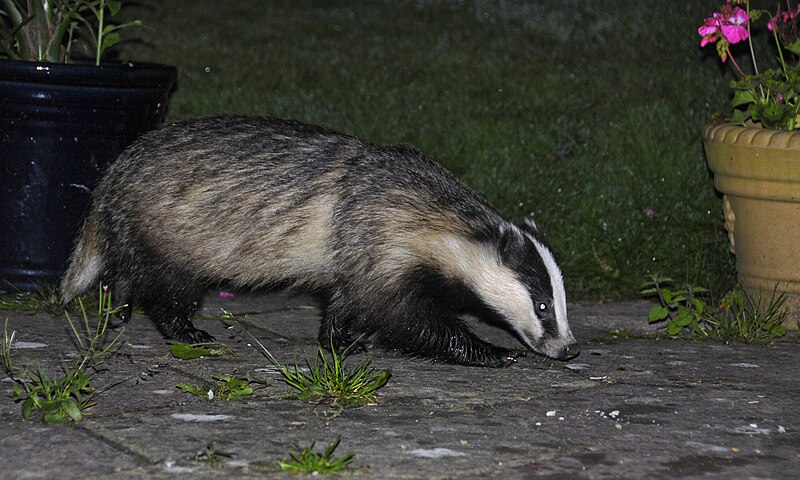
Badger scavenging leftovers. Surrey, England
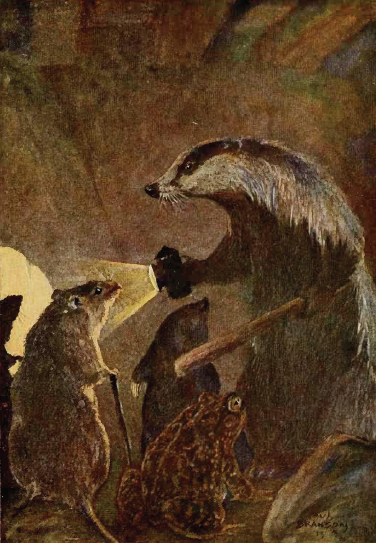
Rat, Mole, Toad and Badger from Wind in the Willows. 1913 Paul Bransom
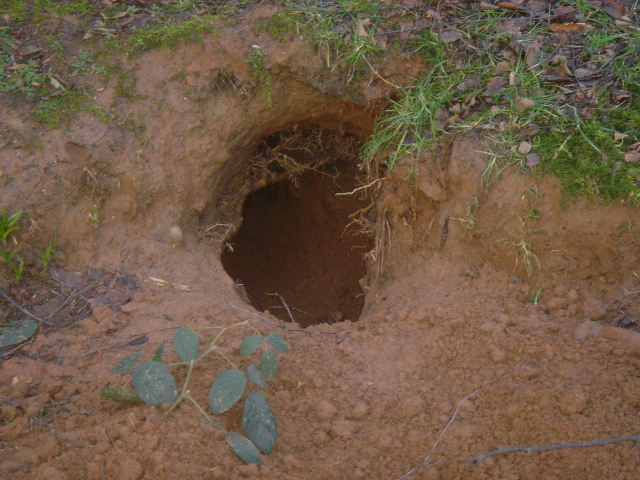
The entrance to a Badger Sett. Feb 2007
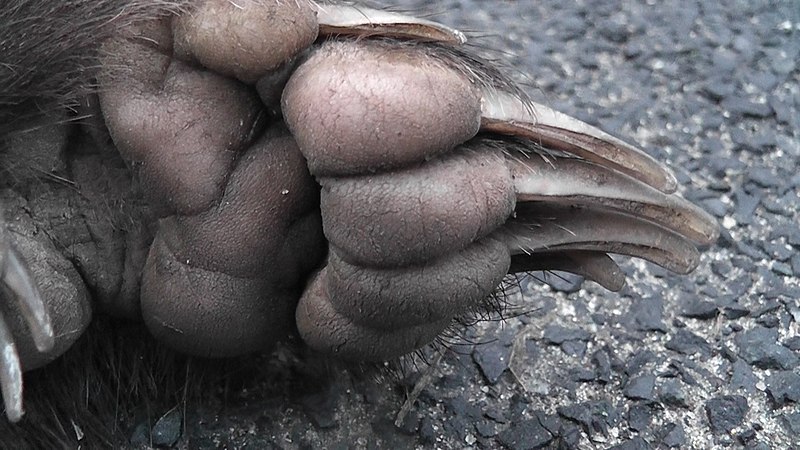
Paw of a European Badger/ March 2013
Celebrating Britain’s most beloved species: The Hedgehog
March 7, 2024
Scurrying through the mysterious realm of Britain’s undergrowth, the unassuming hedgehog (Erinaceus europaeus) is at work. Venturing into this nocturnal world reveals a story of ancient significance. These prickly custodians of hedgerow and thicket perform an invaluable pest control service, feasting on a diverse array of invertebrates. Beetles, slugs, and caterpillars fall prey to their insatiable appetite, helping to maintain a delicate balance across woodland, gardens and agricultural lands alike.
Beneath the protective mantle of their spiky exteriors, hedgehogs assume a role far more profound than their charming visage suggests. Within the dance of Britain’s nature they become unsung heroes, contributing to the vital process of nutrient cycling. Through their tireless foraging expeditions, hedgehogs emerge as stewards of the soil, engaging in a symbiotic relationship with the earth itself. The aftermath of this nightly feast helps to create a transformative effect on the soil below as their nitrogen-rich excrement contributes to plant growth.
However, the hedgehog’s tale takes a somber turn in the face of modern challenges. Habitat loss, a consequence of rampant urbanisation and agricultural intensification, threatens the sanctuaries where hedgehogs forage and nest. Pesticide use in farming further reduces the availability of insects, the lifeblood of these nightly wanderers. Road traffic poses a multifaceted challenge, causing not only accidents and fatalities but also acting as a disruptive force that severs and isolates hedgehog populations. This fragmentation has a detrimental impact on genetic diversity, hindering natural connectivity and potentially compromising the long-term resilience of populations.
In response to these growing threats a groundswell of conservation initiatives is gaining momentum. Foremost among these efforts is the establishment of wildlife corridors – strategically designed pathways that reconnect these fragmented habitats, enabling hedgehogs to traverse urban landscapes without perilous encounters with roads.
Beyond their ecological exploits, hedgehogs have found their place in the heart of British culture. Once earning its keep as a cherished ally to farmers in the medieval era, hedgehogs have transcended their ecological roles to become symbols of charm and familiarity. Beatrix Potter’s “Mrs. Tiggy-Winkle” and Jill Barklem’s Brambly Hedge have immortalised these creatures in the pages of beloved children’s stories.
In the world of art and design, hedgehogs have found themselves featured in myriad forms—ceramics, garden sculptures, and illustrations. Their distinctive appearance and endearing behavior have become timeless motifs, encapsulating the essence of British wildlife and the picturesque countryside.
Yet, even with their cultural prominence, hedgehogs remain vulnerable. Conservationists and individuals alike are working to foster a harmonious coexistence between humans and hedgehogs, recognizing the imperative need to safeguard both the ecological and cultural aspects they embody.
The hedgehog’s tale is not just one of ecological intricacies but a rich narrative that transcends time and tradition. As a guardian of Britain’s green spaces, it beckons us to reflect on the interconnectedness of our actions with the delicate dance of nature. In this narrative, the hedgehog emerges not only as a symbol of ecological resilience but also as a cherished character in the story of Britain’s natural heritage, reminding us to tread lightly and appreciate the enchanting balance that these beasts bring to our country.
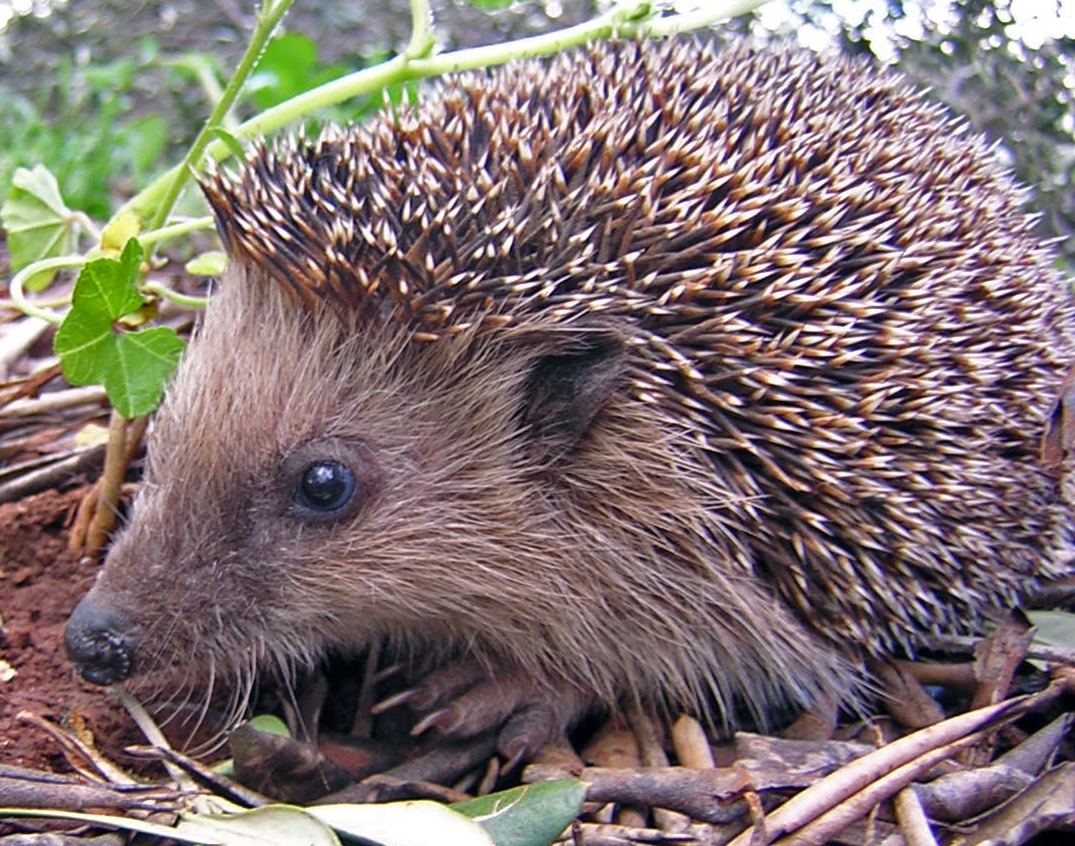
Hedgehog ( Erinaceus europaeus )
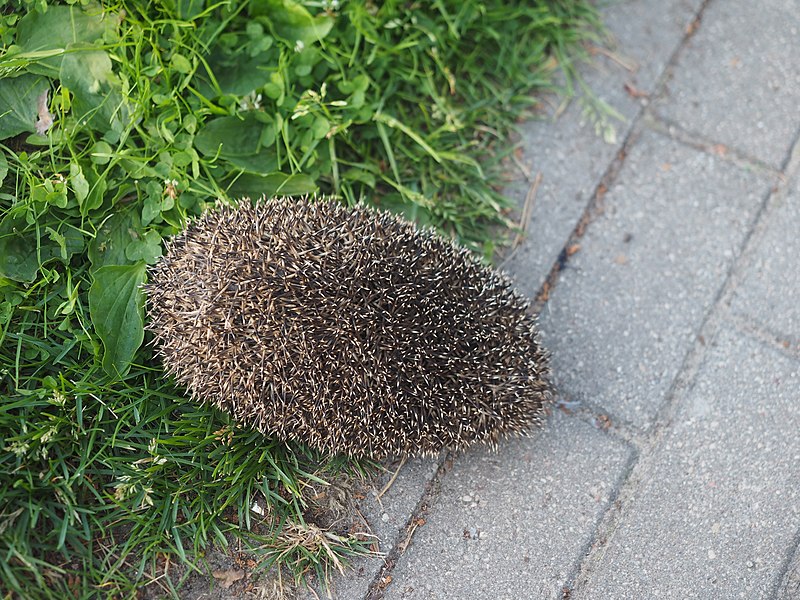
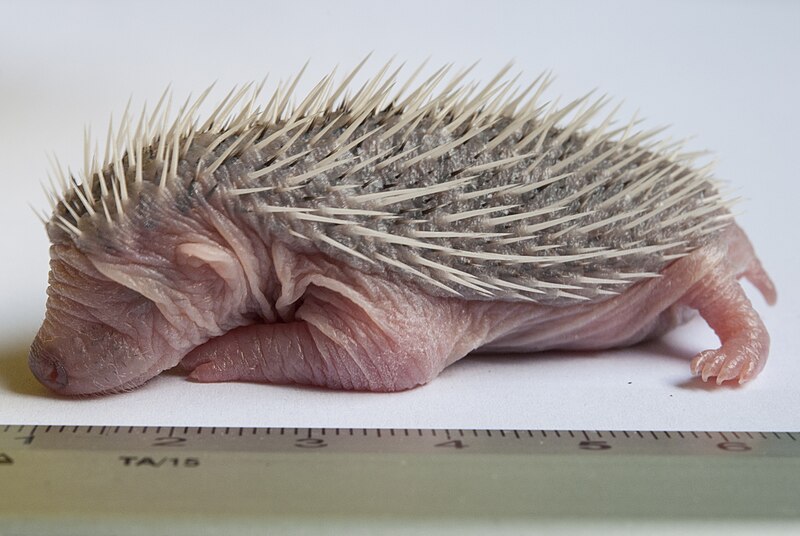
One day old hedgehog. 2012.
Celebrating Britain’s most beloved species: The Red Fox
February 21, 2024
The Red fox, (Vulpes vulpes), emerges as an indispensable feature of the British Isles. This species, with its blend of cunning and remarkable adaptability, has integrated itself into the diverse ecosystems of the nation, be it wildwoods or sprawling cities, they leave an indelible mark.
Though not without peril, foxes have successfully navigated the challenges of urban environments. As opportunistic omnivores, foxes play a crucial role in controlling urban pests, including rodents and insects (and unfortunately pillaging through much rubbish). By preying on these species, they help maintain a balance that prevents overpopulation, ensuring some measure of improved ecological health of city landscapes. Additionally, the unintentional seed dispersal that occurs during their travels contributes to the growth of urban vegetation, promoting biodiversity. As urban dwellers they embody a modern resilience shown by few other species, serving as a poignant reminder of the dynamic interplay between wildlife and the ever-evolving urban landscape.
Away from the bustle of city-life, foxes exert a notable impact on our rural ecosystems. As apex predators, they regulate similar populations as they do in cities: small mammals, birds, and insects. Foxes also serve as scavengers, efficiently clearing carrion, which helps control the spread of certain diseases.
A more nuanced aspect of the fox’s environmental role lies in its status as an indicator species. Changes in fox populations or shifts in their habitats can be indicative of broader ecological transformations. Monitoring these changes provides ecologists and conservationists with a valuable tool to comprehend the state of Britain’s ecosystems and gauge the impacts of environmental factors.
As an indigenous species the fox has found much acknowledgement in anglo mythology. The word ‘fox’ comes from Old English which derived from Proto-Germanic ‘fuhsaz’. This in turn derived from the Proto-Indo-European ‘puk’ meaning ‘thick-haired tail’. Representing a spectrum of qualities from cunning and trickery to wisdom and transformation, the fox takes centre stage in traditional tales like the Reynard cycle – medieval fables which came to prominence across northern Europe in the 12th Century. These narratives not only serve as a source of entertainment but also mirror and shape cultural values, offering insights into the complex relationship between humans and the natural world.
Beyond folklore, the fox has been a recurring muse in literature and the arts. Renowned writers such as Roald Dahl and Beatrix Potter have immortalised fox characters in their stories, contributing to a broader cultural narrative that extends beyond the confines of traditional tales. Artists, in turn, have captured the grace and mystery of the fox, creating a rich visual and symbolic language that resonates with the nation’s collective consciousness.
The fox, as a cultural symbol, extends beyond mere representation to embody resilience. Its ability to thrive in tough environments of sparse resources, danger and decay stand as a testament to its character. In the face of environmental and societal changes, the fox symbolises tenacity, offering a metaphorical framework for understanding the intricate balance needed for coexistence between the natural world and human civilisation.
The fox transcends its status as a mere creature of the wild. It serves as a living testament to the complex interplay between the environment and culture, revealing its dual significance as both a keystone species influencing ecological dynamics and a cultural icon shaping the nation’s narrative. To fully appreciate and protect Britain’s natural heritage, acknowledging and understanding the multifaceted role of the fox is essential. As conservation efforts progress, the fox remains an enduring and poignant reminder of the delicate equilibrium between the untamed and the cultural essence of the nation.
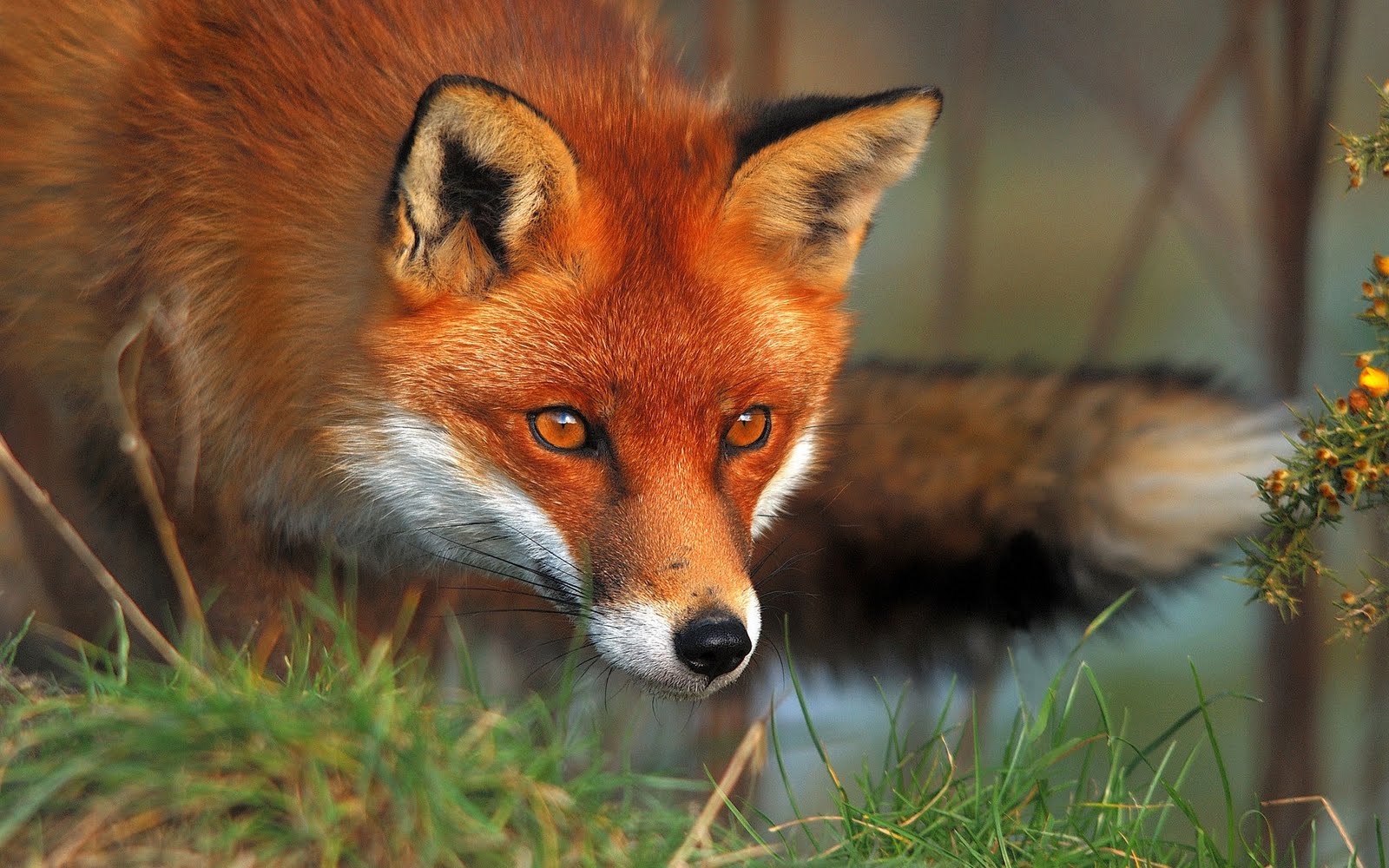
Red Fox ( Vulpes vulpes )
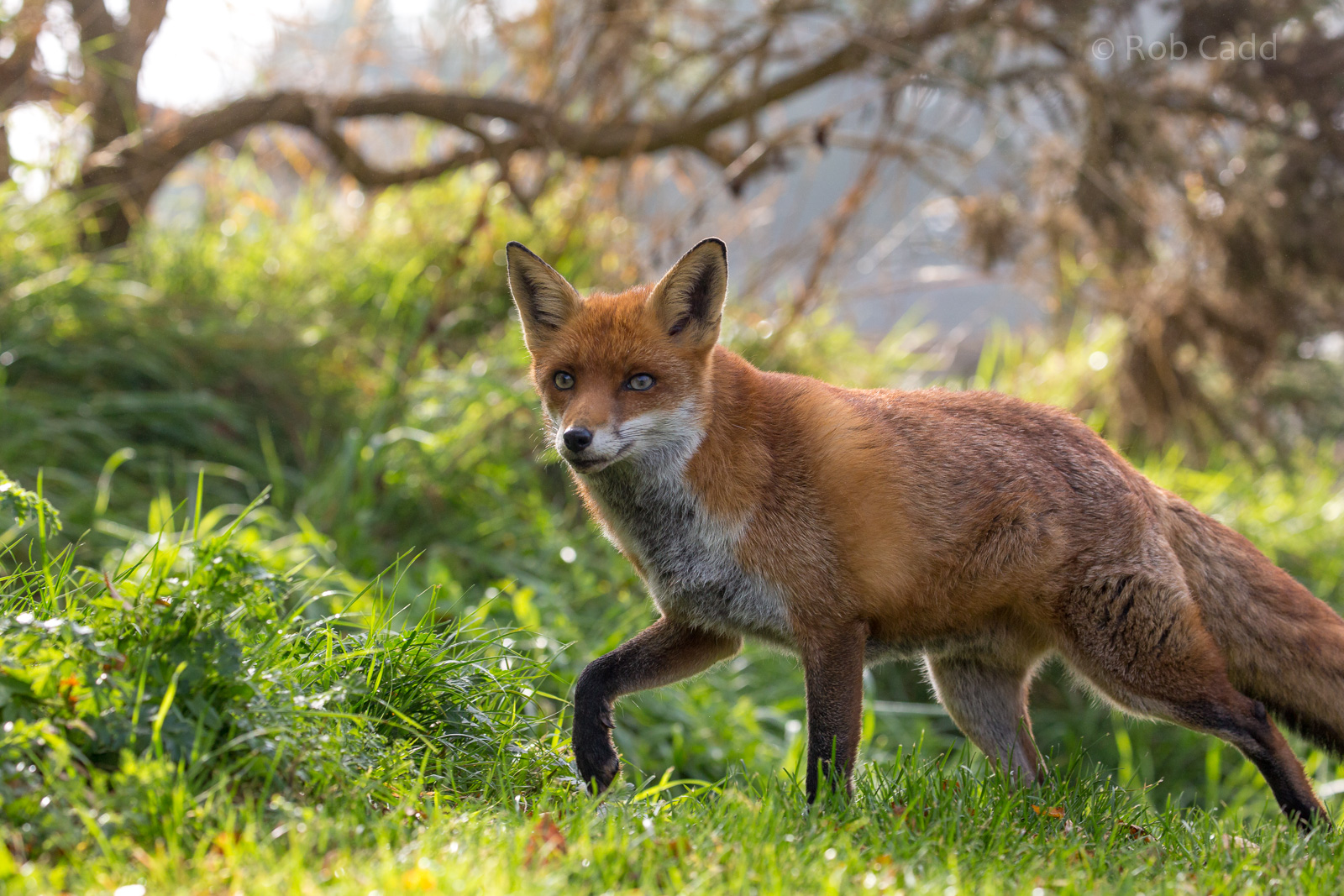
Red Fox @ Rob Cadd 2018
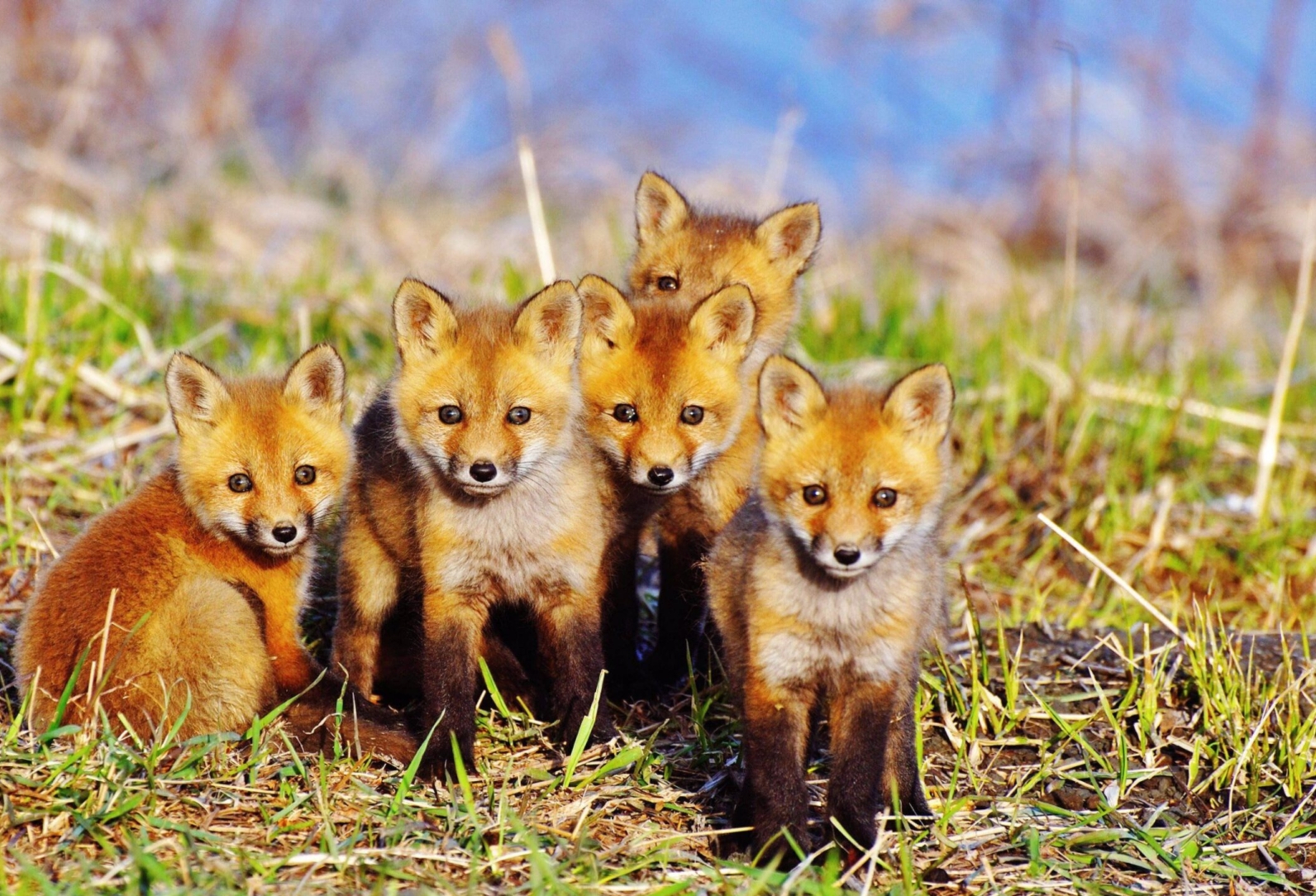
Group of red fox cubs
Celebrating Britain’s most beloved species: The Grey Heron
February 7, 2024
Characterised by a graceful silhouette and patient demeanor, the grey heron ( ardea cinerea ) is deeply ingrained into the British environment and our ancient culture. This majestic bird, often spotted near bodies of water, holds a pivotal role in maintaining the delicate balance of nature. As we explore the significance of the heron, we uncover not only its ecological importance but also its deep-rooted presence in British heritage.
Frequently found in wetlands, rivers, and estuaries, these wading birds act as nature’s sentinels, signaling the health of the environment. Opportunistic hunters, herons prey on fish, amphibians, and insects, contributing significantly to the regulation of aquatic populations. Their role as apex predators helps control smaller species’ numbers, preventing ecological imbalances.
Beyond predation, herons play a crucial part in nutrient cycling. Their excrement, rich in nitrogen and phosphorus, acts as a natural fertiliser fostering vegetation growth and supporting a diverse array of life.
Historically, the heron holds significance within British folklore, art, and literature. In the medieval era, it came to symbolise nobility and patience, featuring prominently on coats of arms to represent qualities highly esteemed in chivalric ideals. Its stoic stance and calculated movements became emblematic of virtues such as resilience and contemplation.
In literature, the heron found a place in the works of renowned authors, such as William Wordsworth, a celebrated poet of the Romantic era. Wordsworth often referred to herons in his nature-inspired verses, portraying them as solitary wanderers along riverbanks. These references underscored the bird’s role as a muse for poets and an allegory of the ever-changing, yet enduring, natural world.
Culturally, the heron’s symbolism extends beyond literature and history, seeping into various other aspects of British culture. In Celtic mythology, the heron is associated with transitions and transcendence, embodying the spirit of transformation and adaptability. This is reflected in Celtic art where herons are depicted as creatures bridging the realms of earth, water, and sky.
In modern times, the heron has become an icon in the visual arts, featuring in paintings, sculptures, and even as mascots for local sports teams. Its grace and distinctive appearance have made it a favourite subject for wildlife photographers and artists, capturing the imagination of the public and fostering a deeper appreciation for the natural world.
With its enduring presence in British ecosystems, history, and culture, the heron stands as a testament to the interconnectedness of nature and human experience. From the marshlands to the pages of literature, the heron weaves a story of resilience, patience, and adaptability. As we strive to conserve and protect our natural heritage, recognising the importance of these majestic birds becomes paramount. The heron’s graceful flight across the canvas of British landscapes serves as a reminder that our actions today shape the narratives of tomorrow, ensuring a harmonious coexistence with the wild creatures that have inspired us for centuries.
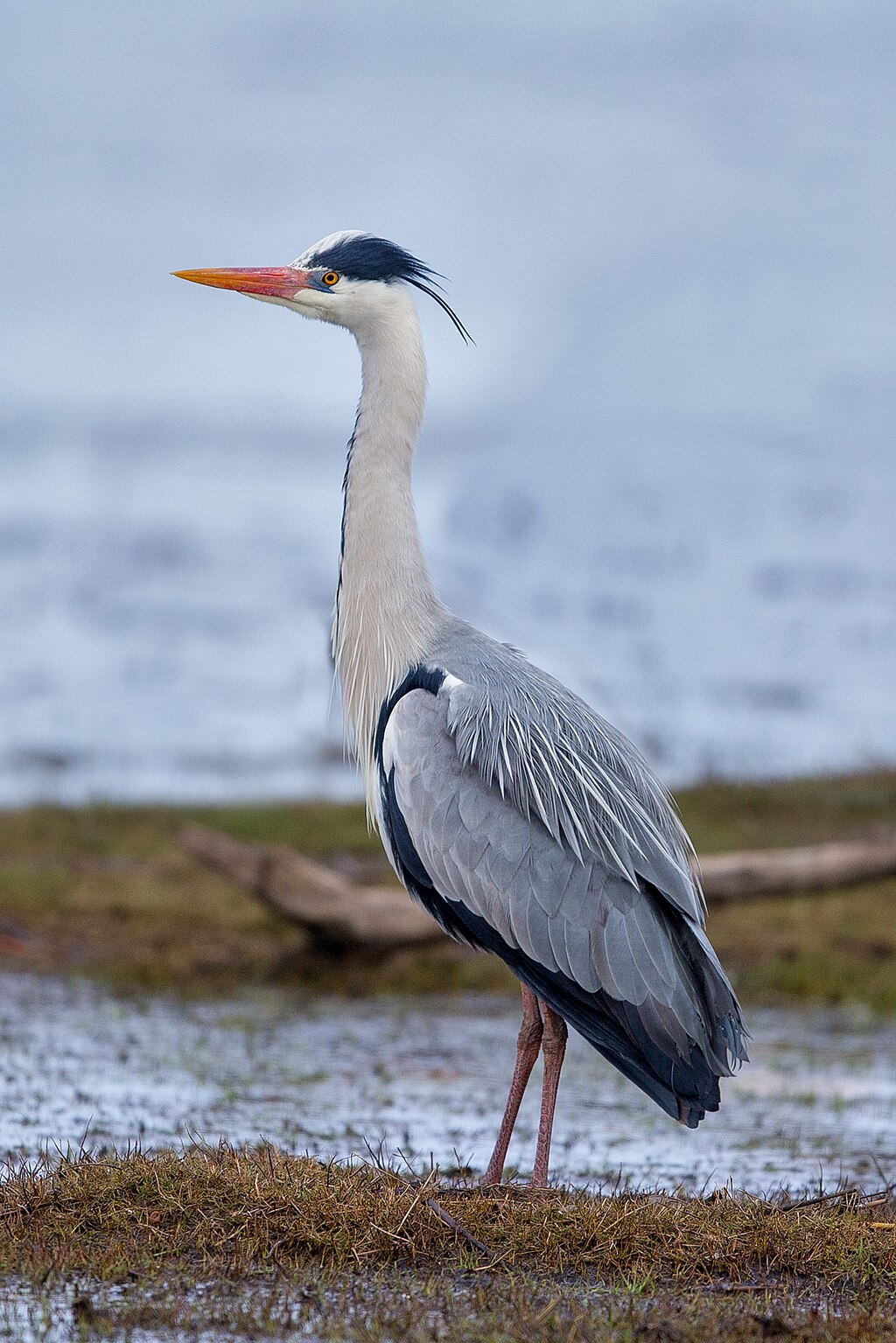
Greyu Heron, (Ardea cinerea ). March, 2015. © Andreas Trepte.
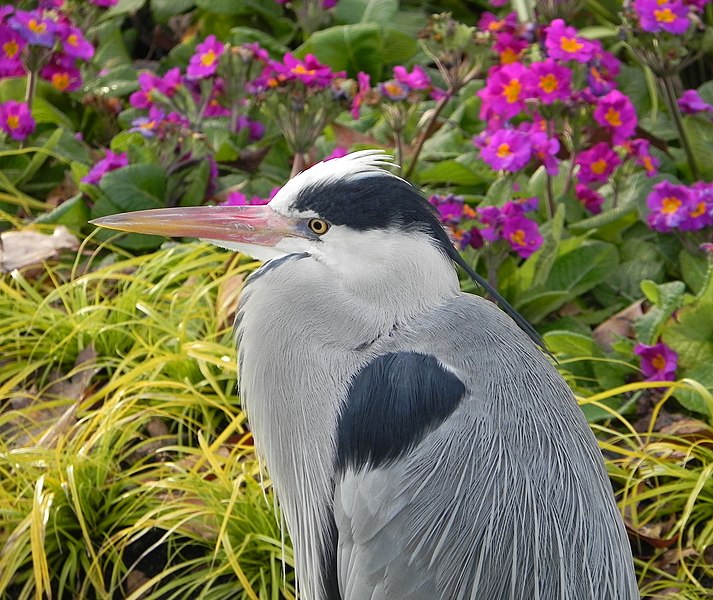
A Grey Heron in Regents Park, neck retracted. Dec, 2020 . © Jalex lb.
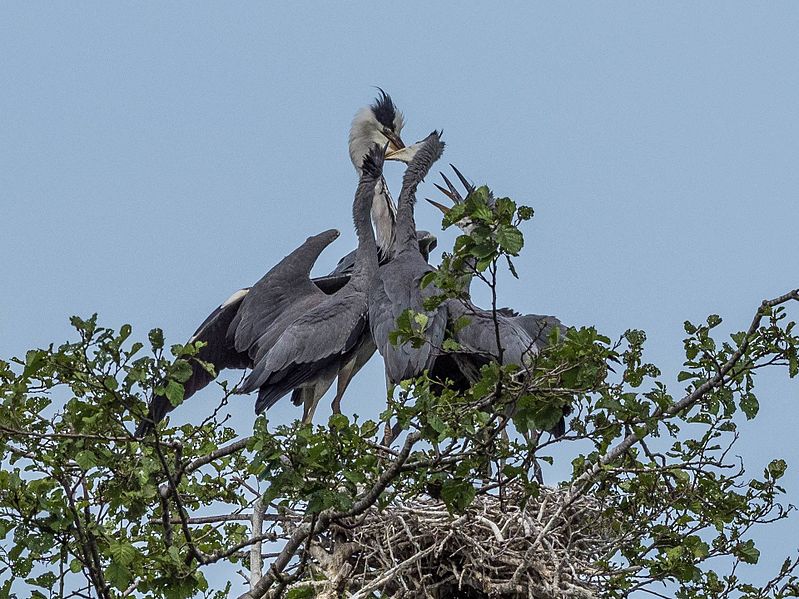
An adult feeding juveniles. June, 2017. © Bengt Nyman.
Celebrating Britain’s most beloved species: The Robin
January 31, 2024
Within the intricate tapestry of British ecosystems, the robin (Erithacus rubecula) emerges as a small yet iconic bird, playing a central role not only on the nation’s cultural stage but also as a vital thread weaving between nature and our island’s heritage. However, in its role as a symbolic figure, it is easy to overlook the crucial impact it has on ecosystems.
Robins, with their distinctive red-orange breasts and friendly demeanour, are a common sight in British gardens, woodlands, and urban areas. These adaptable birds contribute to the delicate balance of nature in several ways.
Robins are insectivores, feeding on a variety of invertebrates such as beetles, caterpillars, and spiders. By preying on these pests, robins regulate insect populations, helping to maintain the health of plants and trees. As omnivores, robins also consume fruits and berries, aiding in seed dispersal and facilitating the growth of new plants.
Known for being territorial, robins fiercely defend their nests. This behaviour not only staves off predation of their young, but also other small fauna species and gives vegetation a better chance to regrow. Additionally, the cup-shaped nests built by robins in concealed locations, often in ivy, shrubs, or other foliage, provide shelter not only for other robins but also for other small birds that may use their abandoned nests. This communal sharing of nesting spaces contributes to the overall diversity and density of bird populations.
The robin is an enduring symbol of Christmas. Legend has it that its redbreast is a result of its selfless act of fanning the dying embers of a fire to keep infant Jesus warm in his manger. This association has led to the robin becoming a popular motif on Christmas cards, representing warmth, compassion, and the festive spirit.
Robins have a long-standing presence in British folklore, often considered as symbols of good luck. It is believed that seeing a robin is a sign of departed loved ones sending a message from beyond. Conversely, harming a robin is thought to bring misfortune. These superstitions reflect the deep cultural connections people have formed with this feathered friend.
Robins have inspired numerous poets and writers throughout British literary history. From William Wordsworth to Ted Hughes, these birds have been depicted as symbols of hope, renewal, and the cyclical nature of life. The robin’s song, especially during the winter months, is often portrayed as a source of comfort and inspiration in literature encouraging listeners to hold on for spring.
Given their ecological contributions and cultural significance, it becomes imperative to safeguard the well-being of robins and their habitats. Though robins are not listed as an endangered species, conservation efforts should focus on maintaining diverse ecosystems, preserving green spaces, and addressing threats such as habitat loss, pollution, and climate change so that this may continue.
Educational initiatives can play a pivotal role in raising awareness about the importance of robins in both ecosystems and culture. Encouraging people to create bird-friendly environments in their gardens, parks, and communities can enhance their well-being while fostering a deeper connection between humans and nature.
Recognising and preserving the importance of robins in the British landscape is not only crucial for biodiversity but also for maintaining the rich tapestry of traditions and stories that define our nation’s identity.
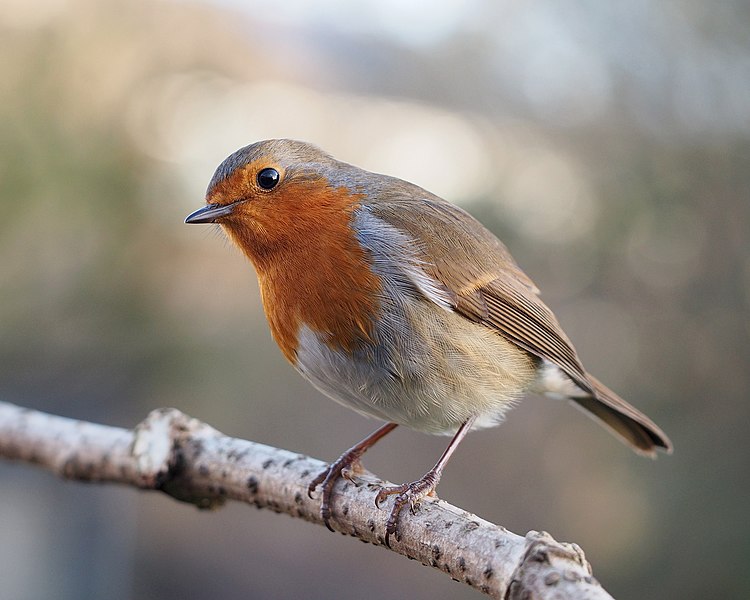
Robin with cocked head. Feb, 2014. © Francis C. Franklin.
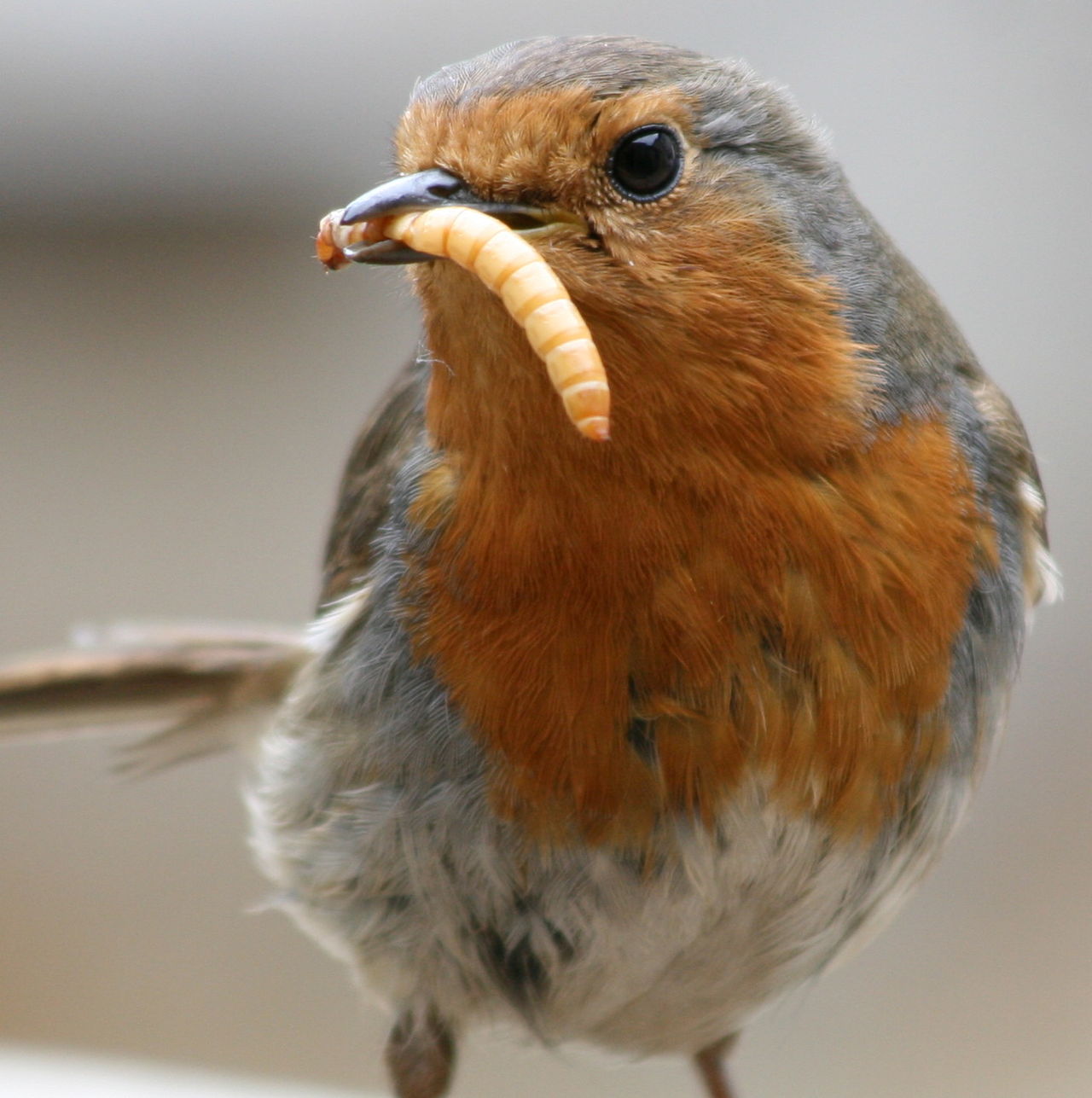
Eating a mealworm. July, 2008. © Philip Heron.
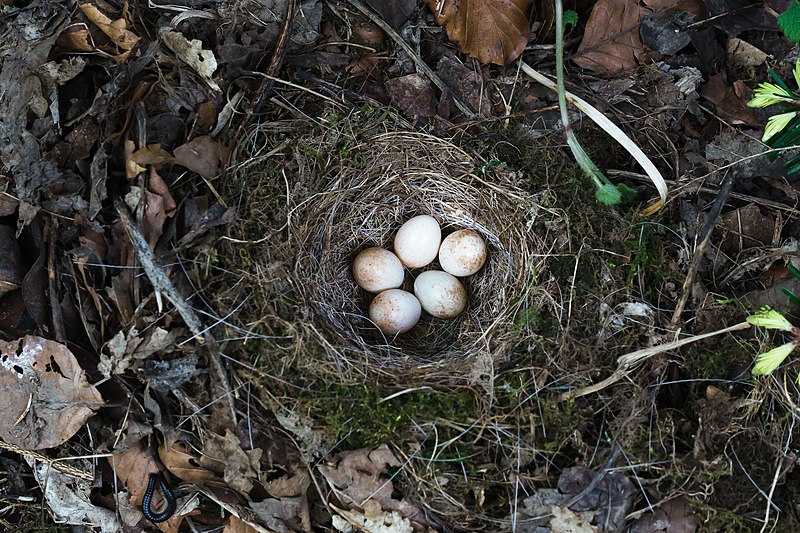
Nest with five eggs. May, 2020. © Neptuul.
Wilding Profile: Wild Cat
January 10, 2024
The potential reintroduction of wildcats to England signifies a critical moment in wildlife conservation, aiming to revive their presence after centuries of absence. These creatures, once widespread across the UK, are now among the rarest native mammals, barely surviving in remote parts of Scotland. However, collaborative efforts led by wildlife experts offer hope for their return to the English landscape.
This initiative stems from understanding the pivotal role of wildcats in shaping ecosystems. Their carnivorous diet helps maintain a delicate balance among herbivore populations, preventing overgrazing and supporting plant species crucial for a sustainable environment. While historically associated with Scotland’s ancient woodlands, suitable regions in southern England, like Devon and Cornwall, have been identified as potential habitats for reintroduction, offering ideal conditions for their survival.
Reintroducing this apex predator holds ecological significance, reinstating a missing link in the ecosystem. However, challenges persist, primarily the risk of hybridisation with domestic cats, which threatens the genetic purity of true wildcats. To counter this, meticulous planning involving the creation of a genetically robust stud book is underway to maintain their distinct traits and avoid interbreeding.
Experts address concerns about potential conflicts with livestock and humans, emphasizing that wildcats tend to avoid larger prey and are naturally elusive creatures. Learning from successful rewilding projects, collaboration among conservationists, communities, and government agencies is crucial to navigate regulatory requirements and ensure a sustainable reintroduction.
The urgency of this situation requires immediate action to prevent irreversible loss, as wildcats face endangerment, with only a few hundred individuals surviving. The Wild Cat (Felis silvestris), Britain’s sole wild feline, closely resembles the domestic tabby cat but exhibits distinct features like a bushier, blunt-ended tail with black rings.
Adaptable to various habitats, wild cats typically inhabit moorlands, forests, and scrub areas in Scotland. They are obligate carnivores, consuming almost all parts of their prey and rarely needing to drink due to the high water content in meat. Despite their timid nature, wildcats communicate using various sounds and maintain solitary lives with defined territories.
Breeding in February and March, wildcats produce litters of 3 – 5 kittens after a gestation period of 63 – 68 days. However, their population decline, attributed to domestic cat gene infiltration, threatens extinction. The Scottish wild cat is critically endangered, with measures to protect and conserve the remaining pure population deemed crucial by conservationists.

A European Wildcat, February 2013. C Lviatour.
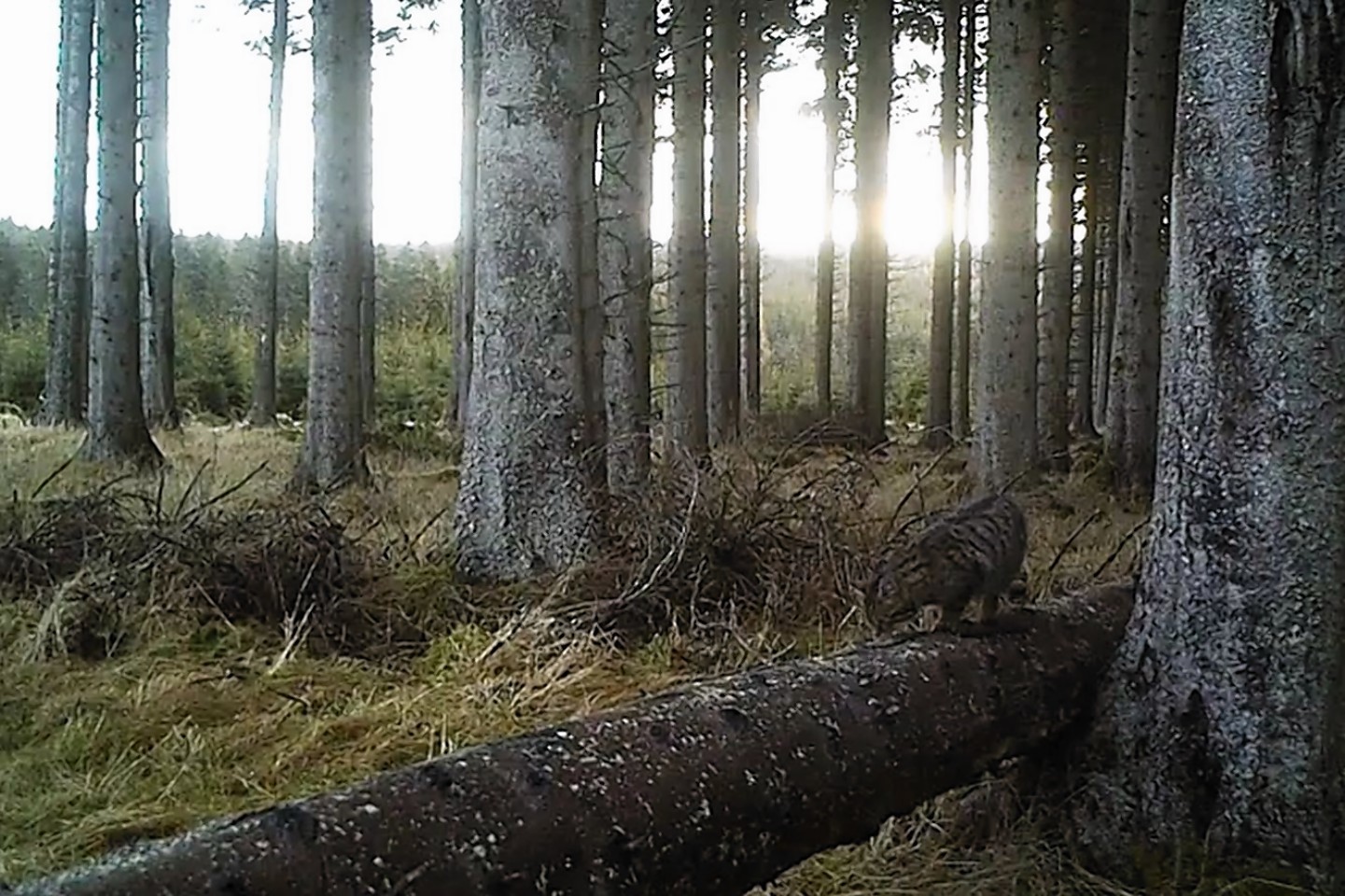
A wild cat roaming the woods, Aberdeenshire 2016. C Kevin Bell.
Work Begins to Revive Britain’s Lost Rainforests
December 4, 2023
Scattered across the British landscape are often-overlooked treasures: ancient rainforests covering only 1% of the country. While the term may evoke images of lush jungles in the Amazon or Borneo, few realise that Britain boasts its own unique rainforests which were almost ubiquitous across the main island. However, these ecosystems have been greatly degraded through intensive agriculture, rapid urbanisation and generational neglect. Thankfully, work is underway to restore these great lungs of the North Atlantic.
Tucked away in remote corners of Britain, the temperate rainforests thrive with their thick canopies and diverse wildlife. The Celtic Rainforest in Wales and the Atlantic oak woodlands of Scotland are prime examples, particularly in the western rainier parts of the island which meet the high humidity of the ocean. These ecosystems, characterized by high levels of precipitation and mild temperatures, host a wealth of biodiversity.
These rainforests harbour a diverse range of species, with many being unique and endemic to these regions. Examples include mosses, lichens, ferns, and ancient oak trees. In the case of the latter, Britain has the highest number of specimens in Europe, with 3,300 hardwoods, the oldest among them being Lincolnshire’s millennia-old Bowthorpe Oak. This is in part a result of geographical fortune where the island has avoided the burning through of woodlands required to support Europe’s historical terrestrial wars.
Beyond their biodiversity, Britain’s rainforests play a crucial role in mitigating climate change. Forests act as carbon sinks, sequestering vast amounts of carbon dioxide. As climate change accelerates, the need to reduce carbon emissions becomes more urgent, and restoring these rainforests presents a natural solution.
Britain’s rainforests also play a crucial role in water management and conservation. The dense vegetation acts as a natural sponge, absorbing and regulating water flow. This helps prevent soil erosion, maintain water quality, and reduce the risk of flooding in downstream areas. Restoring these rainforests ensures the resilience of watersheds, benefiting both the environment and local communities.
So in a groundbreaking initiative, The Wildlife Trusts, backed by a substantial £38 million in funding from Aviva, are spearheading a visionary project to restore British rainforests.
The initiative aligns with broader nature-based projects geared towards addressing climate change, achieving Britain’s net-zero targets, and safeguarding 30% of land and sea for nature by 2030 (‘30×30’).
The project’s distinctive approach, investing in nature restoration two decades ahead of potential carbon emissions associated with future investments, is commendable for its forward-looking perspective and commitment to sustainable practices.
The restoration project sets a goal to increase woodland cover to at least 17% across the UK by 2050, aligning with the country’s net-zero ambition.
The meticulous selection of suitable areas for rainforest regeneration will be guided by extensive research, surveys, and active community involvement.
In conclusion, the endeavour to restore British rainforests is not just a local conservation initiative but a global imperative. By nurturing these ecosystems back to health, we not only safeguard the rich biodiversity they host but also actively contribute to mitigating the effects of climate change. The collaboration between The Wildlife Trusts and Aviva exemplifies a proactive and visionary approach that sets a precedent for sustainable conservation efforts across the country.

Waterfall in Kells Bay, County Kerry. Ireland. July 2017. Hauke Musicaloris.

Broadleaved trees growing beside Afon Cwm-mynach covered in mosses and fungi typical of Celtic Rainforest. Dec, 2009. John Haynes
The Imperative of Restoring the Pristine Character of British Rivers
November 15, 2023
As the flowing arteries which carve the landscapes of Britain, rivers nurture our environment and once led the transport of essential resources for a society increasingly hurrying towards development.
Through the centuries many rivers underwent transformative human-led changes particularly owing to the 19th Century industrial spirit of the Victorian Era. Widespread damming and channelisation – the latter being the straightening and deepening of routes for vessel navigability – have yielded advantages in efficiency. However, a growing modern consensus underscores an urgency to restore rivers to their natural states.
In the modern anxious era of climate change and fears for ecosystem resilience, natural river system restoration comes to the fore. Numerous freshwater species such as sturgeon or various amphibians, are finely attuned to British river conditions; free flow, adequate temperature, nutrient and food availability, and sediment transport. Human-led interventions have deeply disrupted ancient biodiversity ties.
To once again allow rivers to flow freely would facilitate the proliferation of many endangered species. In particular, migratory fish dependent on river connectivity to navigate to natural spawning grounds.
Natural sediment transport has been greatly hampered by human intervention upsetting the pivotal processes of erosion and sedimentation. This has left habitats degraded and disrupted the sustained fertility of agricultural land and the state of topsoil as it is more easily carried away.
Traditional flood control structures such as levees and embankments, while intended to manage floods, can lead to unintended consequences, including heightened flood risks downstream and the loss of valuable floodplain habitats. River system restoration would replenish soil nutrients, maintain biodiversity, and mitigate downstream flood impacts. Natural floodplains act as absorbent sponges, managing excess water during floods before gradually releasing it, thus reducing the severity of downstream flooding events. This approach overlaps with and would be bolstered by the behaviours of Britain’s small but growing populations of beavers acting as ecosystem engineers. Beavers of course dam river systems which spread nutrients, protect soils against drought and benefit a vast plethora of wildlife.
Natural river systems possess a remarkable capacity to filter and purify water. Unhindered river flow allows for the natural processing of pollutants, nutrients and the aforementioned sediments contributing to improved water quality. River system restoration enhances the self-purifying capabilities of water bodies, lessening the reliance on costly and energy-intensive water treatment processes.
Restoring rivers to their natural states holds significant cultural and recreational benefits. Not just in Britain but communities worldwide share deep cultural ties to rivers, often playing central roles in identity, stories and ties to history. Returning our rivers to their natural characteristics is a chance to preserve and celebrate these poetic cultural connections. Naturally, rivers provide enriched recreational opportunities, encompassing activities like birdwatching as birds would take advantage of the wider food availability and healthier habitats.
It’s time to foster a profound appreciation for natural rivers. While artificial management practices have addressed diverse and important human needs, they have often exacted a substantial toll on the natural environment and the services rivers provide. Prioritising river restoration safeguards biodiversity, enhances water quality, and mitigates flood impacts, intertwining with cultural heritage and creating recreational spaces. Embracing the natural flow of rivers is not just an ecological necessity; it signifies a commitment to a more sustainable and resilient future for both nature and humanity.
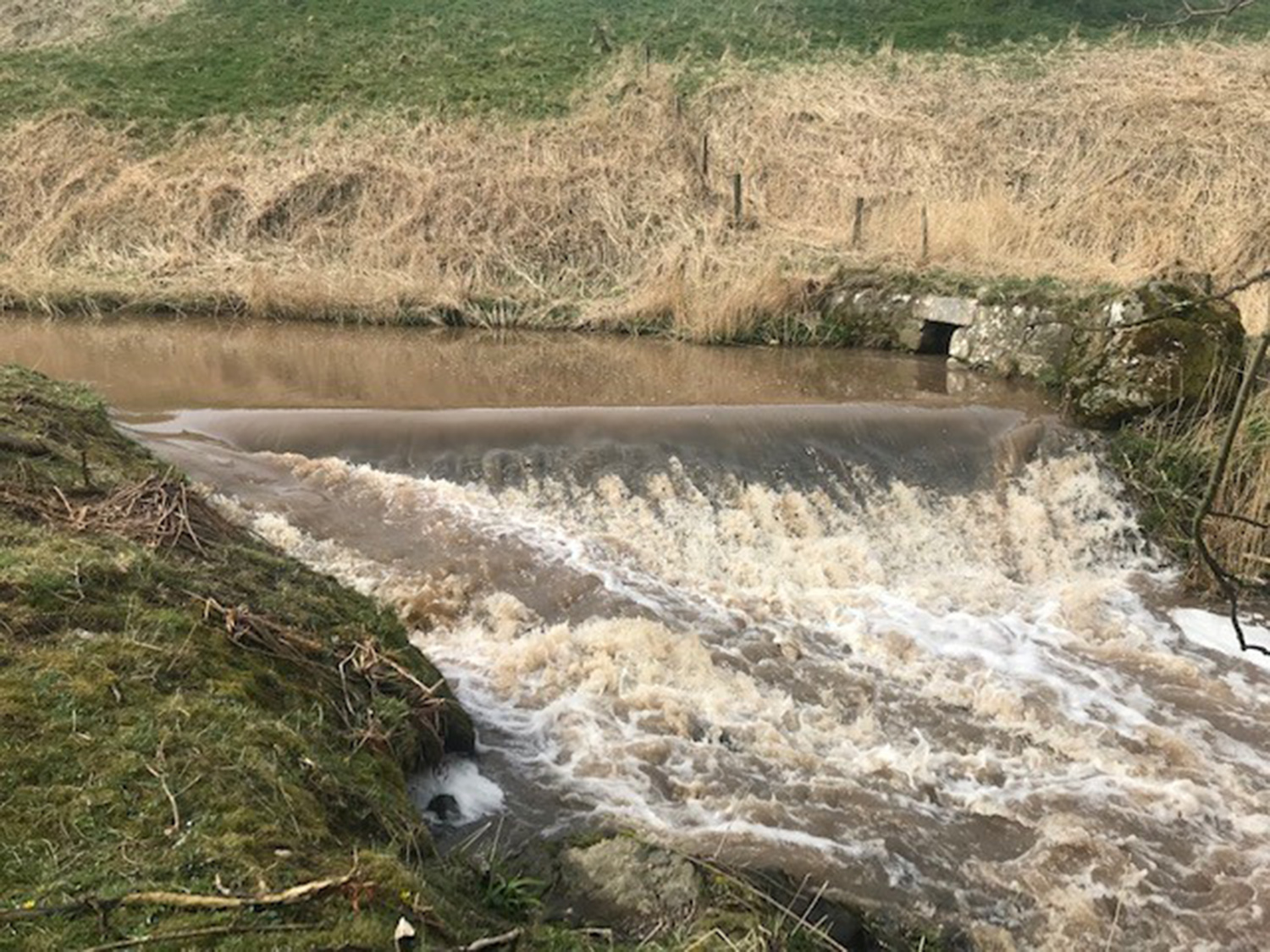
Bronie Burn Weir, Aberdeenshire, Scotland (photo by SEPA) Dam Removal Europe.
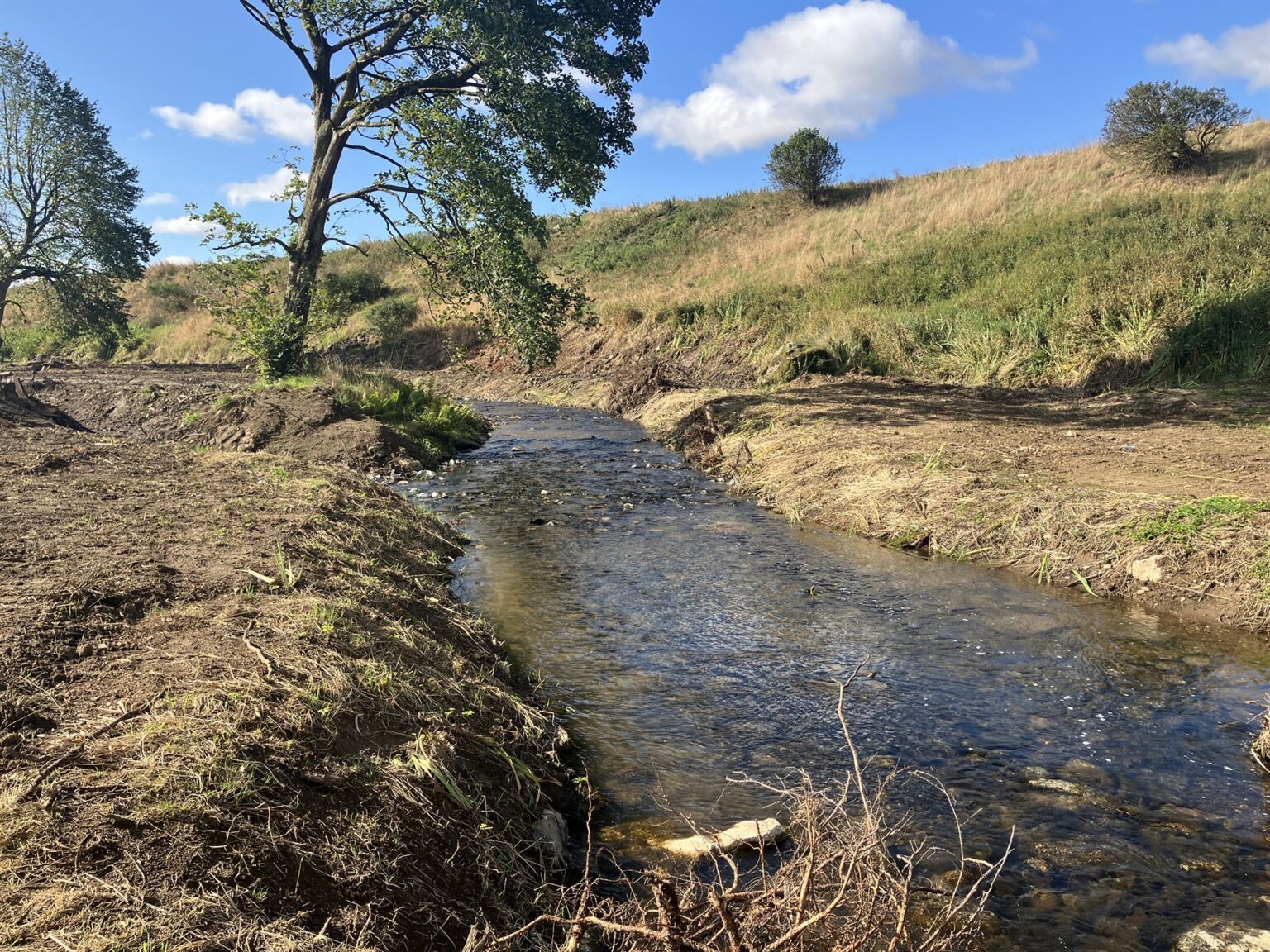
Site after the removal of Bronie Burn Weir in August 2022 (photo by SEPA) Dam Removal Europe.
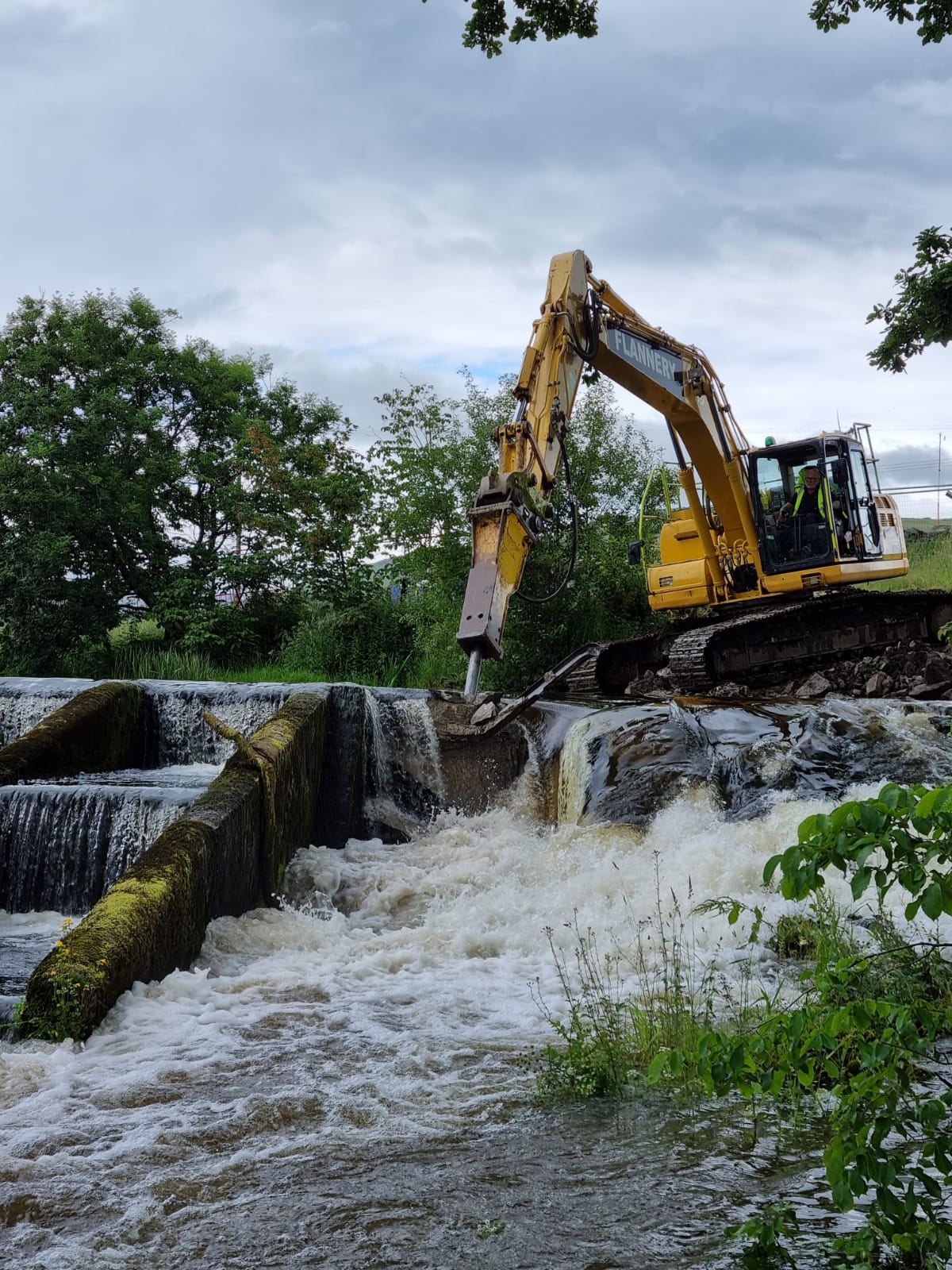
Removal of the first 3-meter notch of the Bowston Weir (photo by South Cumbria Rivers Trust) Dam Removal Europe.
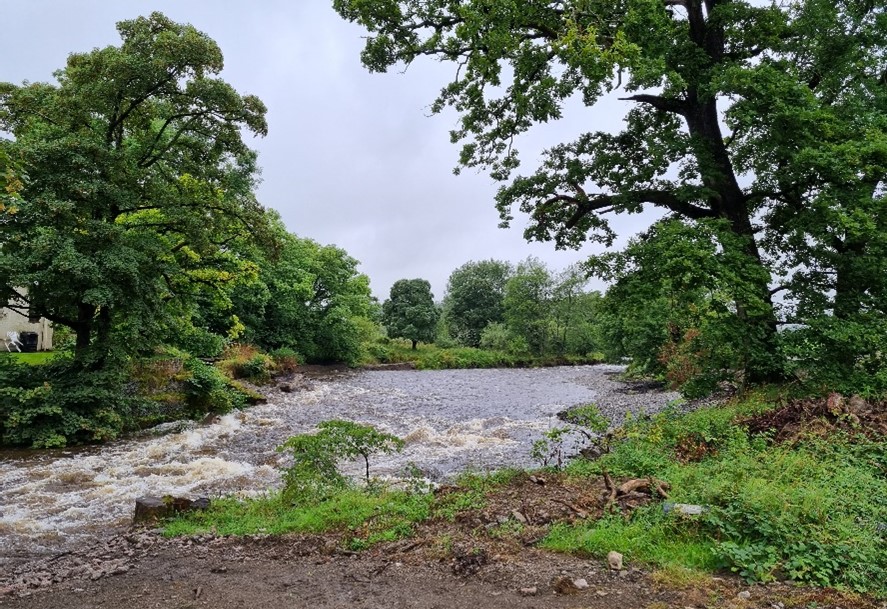
Removal site after the completion of Bowston Weir demolition (photo by South Cumbria Rivers Trust) Dam Removal Europe.
Wilding Profile: Wild Boar
November 8, 2023
The once common wild boar (Sus scrofa) succumbed and disappeared from Britain during the 13th Century, its demise attributed to vanishing forest habitats and excessive hunting. These iconic beasts with a sense of smell surpassing that of dogs, plough soil and ‘sward’ with remarkable scope serving a pivotal role in seed dispersal. This exposes seeds and invertebrates for other species often in the leaner winter months.
Weighing in at around 100kg they consume a wide range of plant material, including fruits, nuts, and acorns, and inadvertently aid in the dispersion of seeds across the landscape. This function is particularly crucial for the regeneration of forests and woodlands. By eating and subsequently defecating seeds, wild boar help in the natural propagation of various plant species, ultimately promoting the growth of a diverse, healthy, and resilient forest ecosystem.
Their foraging also helps control invasive species and promotes the growth of native plants. In some areas where invasive plants have taken over, wild boar can act as natural “gardeners,” reducing their dominance and allowing native flora to reestablish footholds.
As with most pig species, boars greatly enjoy wallowing, especially to keep cool in the summer months. These mud pools provide dwellings for species such as amphibians and dragonflies which in turn invite predators.
There is a growing interest in reintroducing these omnivores as controlled populations of their cousins, Tamworth pigs, in places such as the Knepp Estate in Sussex have proven successful. Their domesticated cousins can be found in vast numbers across the country.
In addition to their role in enhancing biodiversity, wild boar can help control pest species. For example, wild boar are natural predators of many invertebrate pests like snails and beetles, which can harm crops and native plants. By helping to keep these pest populations in check, wild boar can reduce the need for chemical pesticides and contribute to more sustainable agricultural practices.
The reintroduction of wild boar also fits into the broader ecological concept of reestablishing apex predators. In Britain, large carnivores like wolves and lynx were also extirpated long ago, leading to an overabundance of herbivores like deer. With wild boar acting as a mid-level predator, they could help manage herbivore populations through food competition and prevent overgrazing.
There are valid concerns associated with the reintroduction of wild boar. One major issue is the potential for conflicts between wild boar and human activities. Boar can be considered a nuisance as they may damage crops, gardens, and property. Mitigation strategies, such as secure fencing and public education, would be crucial to address these concerns and minimise conflict.
Another concern is the potential transmission of diseases, such as African Swine Fever (ASF), which can affect domestic pig populations. Proper monitoring and disease management protocols must be in place to prevent outbreaks and protect both wild and domestic animals.
The ecological benefits of reintroducing wild boar to Britain are numerous and significant. Their role in enhancing biodiversity, promoting seed dispersal, restoring habitats, and controlling pest species make them valuable contributors to the ecosystem.
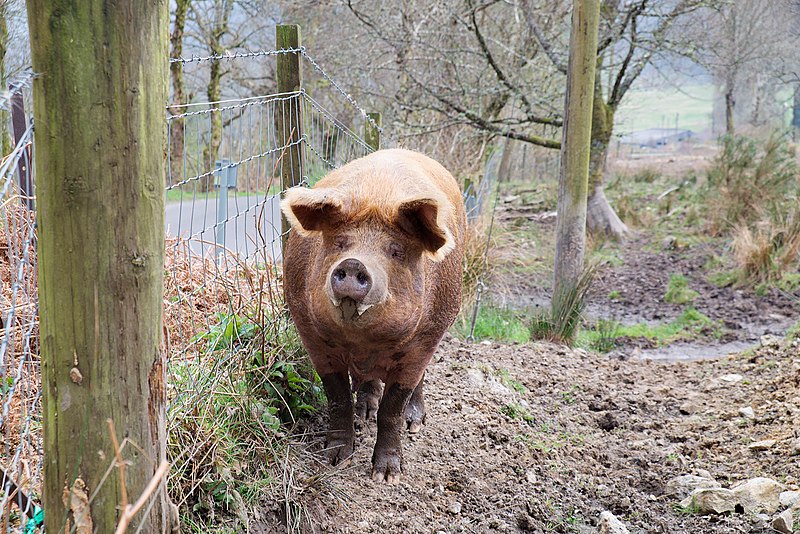
Tamworth Pig, Stirling, Scotland

Tamworth Piglets, England

Muchute Pig Farm, Isle of Dogs, London, England
Wilding Profile: Chequered Skipper
October 19, 2023
This charming butterfly (Carterocephalus palaemon) with its distinct pattern has been absent from the British countryside for decades except for a couple of holdout populations in north-western Scotland.
Last recorded in England in 1976 and like so many other species, its decline was brought about as a result of changing agricultural practices and habitat loss. Reintroducing this once-native species not only holds cultural significance but also has ecological advantages.
One of the most critical ecological functions of butterflies is pollination. While bees often take the spotlight, butterflies play a crucial role in the process. The Chequered Skipper, like many butterflies, feeds on nectar from various wildflowers. As it flits between blooms in search of sustenance, it inevitably transfers pollen from one plant to another, enabling the reproduction of flowering plants.
The reintroduction of Chequered Skippers would diversify the spectrum of butterfly pollinators in the UK. The butterfly’s preferences for certain wildflower species would encourage the growth of these plants, creating a more vibrant and resilient wildflower community. This, in turn, benefits other pollinators and supports plant biodiversity.
The return of this butterfly is not merely about the butterfly itself but its potential to catalyse a broader ecological resurgence. By reintroducing a native species that has been absent for years, we can initiate a cascade of events that benefit the entire ecosystem. A thriving population of Chequered Skippers would signal the health of their preferred habitats, indicating the quality and suitability of these environments for other species.
The presence of this butterfly can also enhance the biodiversity of the ecosystems it inhabits. A thriving population of Chequered Skippers would attract a wide range of predators and parasites that feed on these butterflies. For instance, birds, spiders, and parasitoid wasps would take advantage of this new food source. This influx of predators could potentially reduce populations of other pest insects, thereby improving overall ecosystem health.
The butterfly primarily inhabits woodland clearings, which are also the habitats of numerous other plant and animal species. Woodland clearings host a unique community of plants that require sunlight to thrive, including many wildflowers that serve as important sources of nectar.
For children and adults alike, the sight of a once-extinct butterfly returning to the wild can be a source of wonder and inspiration. It encourages people to appreciate the natural world, fostering a deeper connection to the environment and the need to protect it.
Reintroducing a species that has disappeared from an ecosystem often involves careful management and monitoring. This process necessitates an understanding of habitat restoration and population dynamics. By engaging in these activities, scientists and conservationists gain valuable insights into managing and preserving ecosystems in the face of climate change and other environmental challenges. This can act as a model for adaptive management strategies. As climate change continues to impact British landscapes, preserving and restoring habitats for native species can help build resilience against more adverse future effects.
In this endeavour, the Chequered Skipper’s return serves as a reminder of the power of conservation to mend the gaps in our ecosystems and rekindle the beauty of nature that we cherish.

Chequered Skipper (Carterocephalus palaemon ) Bärenberg, Germany

Mating of Chequered Skipper
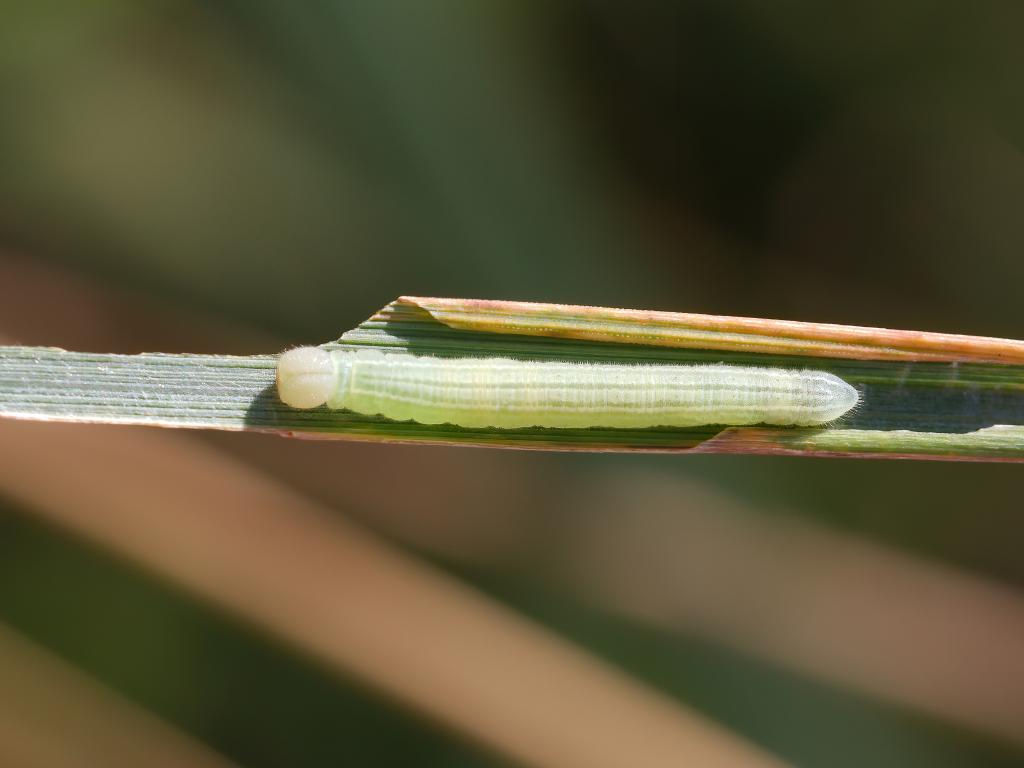
Chequered Skipper LarvaeDavid James, Butterfly Conservation
Life & Death as a Zambian Game Ranger.
September 28, 2023
In 2014, on a regular school day in Mkushi, rural Zambia, 17-year-old Dexter Chilunda found himself being unexpectedly collected by members of the anti-poaching organisation to which his father belonged.
“They told me we have lost our Dad. He was shot by poachers. I couldn’t believe it. He was everything to me.”
Dexter, along with his six siblings, tragically lost their father when the task force he led fell victim to an ambush near Kalabo in the Western Province.
“I grew up watching him doing a lot of work bringing in bad people. Poachers, traffickers, he fought for justice and what was right.”
Within its borders, Zambia is home to at least 31 distinct classified ethnicities, with the largest being the Bantu-descended Bemba people, constituting only a fifth of the population. Yet, the nation grapples with pervasive poverty and political instability, making it a fertile ground for illicit activities, especially poaching.
In 1964, the central Sub-Saharan ex-British colony achieved its independence and adopted the name Zambia, derived from the Zambezi River, which ranks as the fourth-longest in Africa. Similar to many nations in the region, Zambia boasts abundant natural resources, including diverse and thriving wildlife populations.
Dexter’s father embarked on his career against poaching in 1992, a journey that began five years prior to Dexter’s birth. Following his father’s murder, Dexter felt it was time to begin his own chapter, dedicated to continuing his father’s legacy. After graduating from high school, he earned an internship opportunity with the notable conservation NGO, African Parks.
Following six months of rigorous initial training in weaponry, first aid, casualty handling, navigation, and tactical manoeuvres, he furthered his education in the fields of conservation and business. Subsequently, he embarked on his duties in ranger operations.
“When you leave your house, put on your boots, and tuck in your uniform, there is no guarantee you will be back home. There are so many dangers, snakes, black mambas, pythons, aquatic animals such as crocodiles and hippos. Hippos have a very high kill rate across Africa.”
Dexter elaborates that within their line of work, they have sadly grown accustomed to the loss of game rangers with a frequency of every few months. He recalls a poignant incident from two years ago when he tragically lost a close friend, who was fatally trampled by an elephant while leading a tourism expedition. He emphasises, “The animals don’t understand why we are there – to protect them.” Nevertheless, he points out that in the past year, authorities have been making substantial investments to reduce casualties and enhance safety measures.
The frequency of encounters with poachers varies unpredictably, influenced by factors such as black market trends that are challenging for authorities to anticipate. Despite these challenges, authorities have managed to achieve notable successes in their initiatives to engage with indigenous communities. The goal is to dissuade them from turning to poaching, a result of their vulnerability stemming from persistently high poverty rates. These economic hardships often lead locals to resort to bushmeat hunting as a means of survival.
With still a long way to go, Dexter, describes the incredible progress that has been made over recent years, “When I first started six years ago it felt very unlikely things would be where they are now. We have more technology. Before we only had GPS but now we have cybertrucks which record everything such as water levels, wildlife numbers. We now have helicopters and drones.”
In 2021, the British Army arrived to provide essential training on operational tactics, and this intervention has had a profound and enduring influence. Dexter has accomplished five successful ‘takedowns’ out of seven encounters with poachers in the wilderness. He perceives that the government has now started to prioritise conservation earnestly and is collaborating with multiple partners to ensure rangers receive adequate supplies and support.
In conclusion to our interview, Dexter puts forward an important message. “Conservation cannot just be fought by us, but by each and every one of us.”
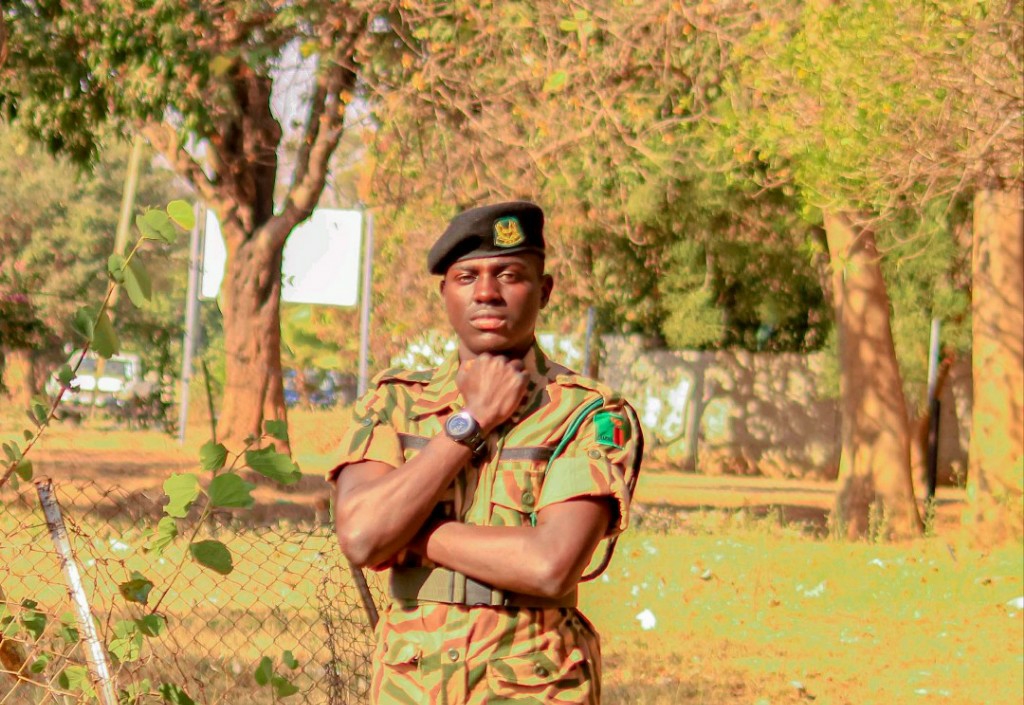
Dexter on completing his game ranger training.
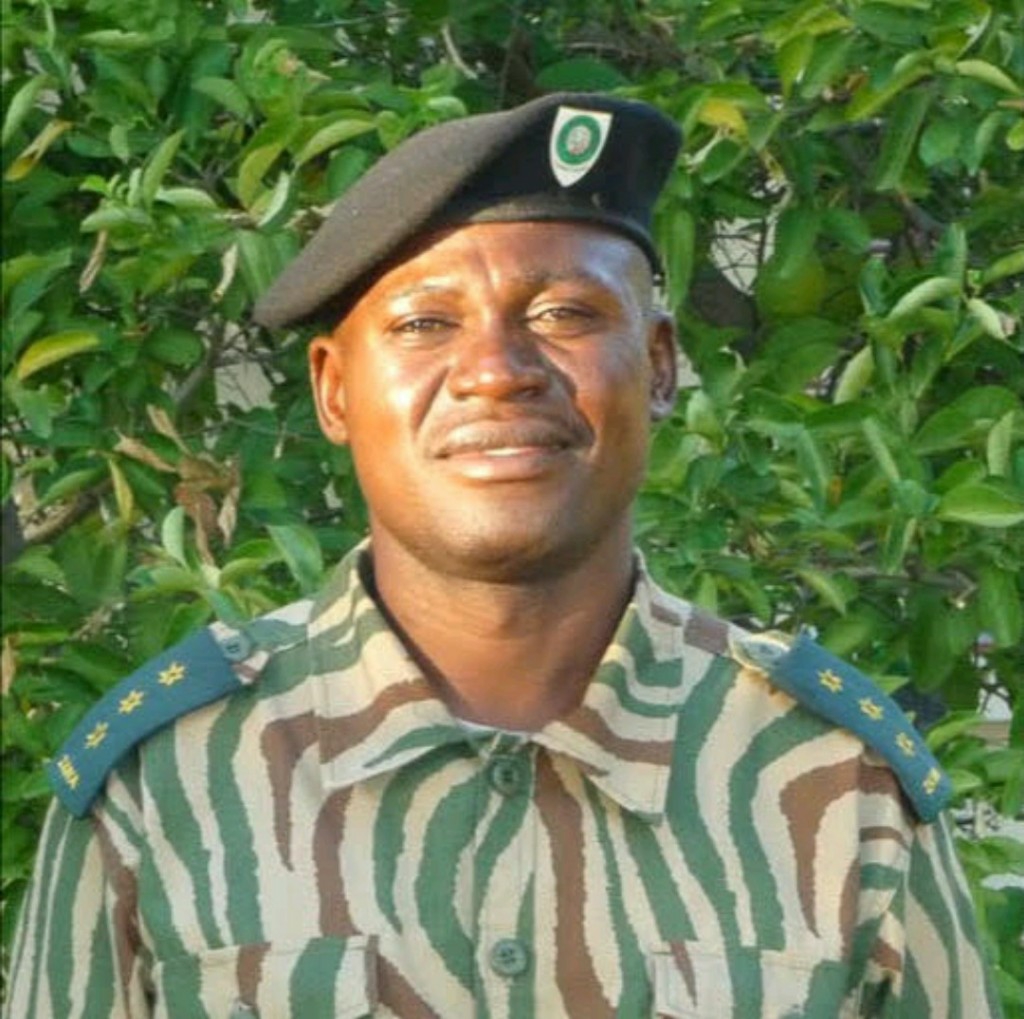
Dexter's father Mr Chilunda who was tragically killed in an ambush by poachers.
Wilding Profile: European Sea Sturgeon
August 31, 2023
Growing to lengths of up to 5 meters and with a potential lifespan of 60 years, the European sturgeon (Acipenser sturio) was a familiar presence in British rivers as recently as the 1950s. However, it has now earned the unfortunate distinction of being one of the IUCN’s critically endangered Red List species.
Sturgeon populations experienced a substantial decline during the 19th century due to factors such as excessive harvesting for meat and caviar, along with infrastructure and agricultural developments impeding their access to vital freshwater spawning habitats.
The anadromous species (found in both fresh and saltwater) is part of an ancient family of fish often referred to as “living fossils” as they have swum Earth’s waters close to their current form for as much as 200 million years – a testament to their remarkable ability to adapt to diverse aquatic environments.
The return of sturgeon to British rivers could catalyse a chain of positive ecological benefits. With the decline of sturgeon populations, some British rivers have experienced an overabundance of certain fish species lower down the food chain. This can lead to imbalances in the ecosystem, as unchecked populations of smaller fish can negatively affect water quality and even impact vegetation growth along riverbanks. By reintroducing sturgeon, a natural apex predator, a more harmonious balance can be restored, preventing the unchecked proliferation of certain species and promoting healthier aquatic environments overall.
Another crucial ecological aspect influenced by sturgeon is nutrient cycling. Sturgeon play an important role in this cycle by consuming prey and releasing waste into the water. This waste is rich in nutrients that can be taken up by aquatic plants and smaller organisms, providing an essential source of sustenance.
Sturgeon also exhibit unique migratory behaviors. These fish are known for their epic journeys between freshwater rivers and the open sea. Reestablishing sturgeon migration routes within British waters can positively impact entire river ecosystems. As sturgeon move between saltwater and freshwater environments, they transport essential nutrients, contributing to the health of both. These migrations can also help to redistribute sediments and detritus, which reshape riverbeds creating more diverse habitats for other aquatic species.
In addition to their ecological contributions, sturgeon can also help stimulate economic benefits for local communities through sustainable fishing. As attributed to their downfall sturgeon are highly valued for their meat and roe, which is processed into caviar. Sustainable harvesting practices could be established to ensure that any fishing activities are conducted in a way that doesn’t harm the sturgeon populations. Furthermore, the presence of sturgeon in British waters could attract tourists interested in witnessing these ancient creatures in their natural habitat.
Successfully reintroducing sturgeon to Britain has a number of obstacles. Efforts should focus on habitat restoration and water quality improvement as pollution and degraded river systems are currently among the biggest challenges.
In the face of adversity and against the backdrop of dwindling sturgeon populations, the story of the European sturgeon carries a message of hope, resilience, and the potential for revival.
While the challenges that led to the decline of sturgeon populations are complex, they are not insurmountable. The ancient lineage of sturgeon, spanning millions of years, attests to their extraordinary adaptability and potential to reestablish themselves across British ecosystems in abundance.
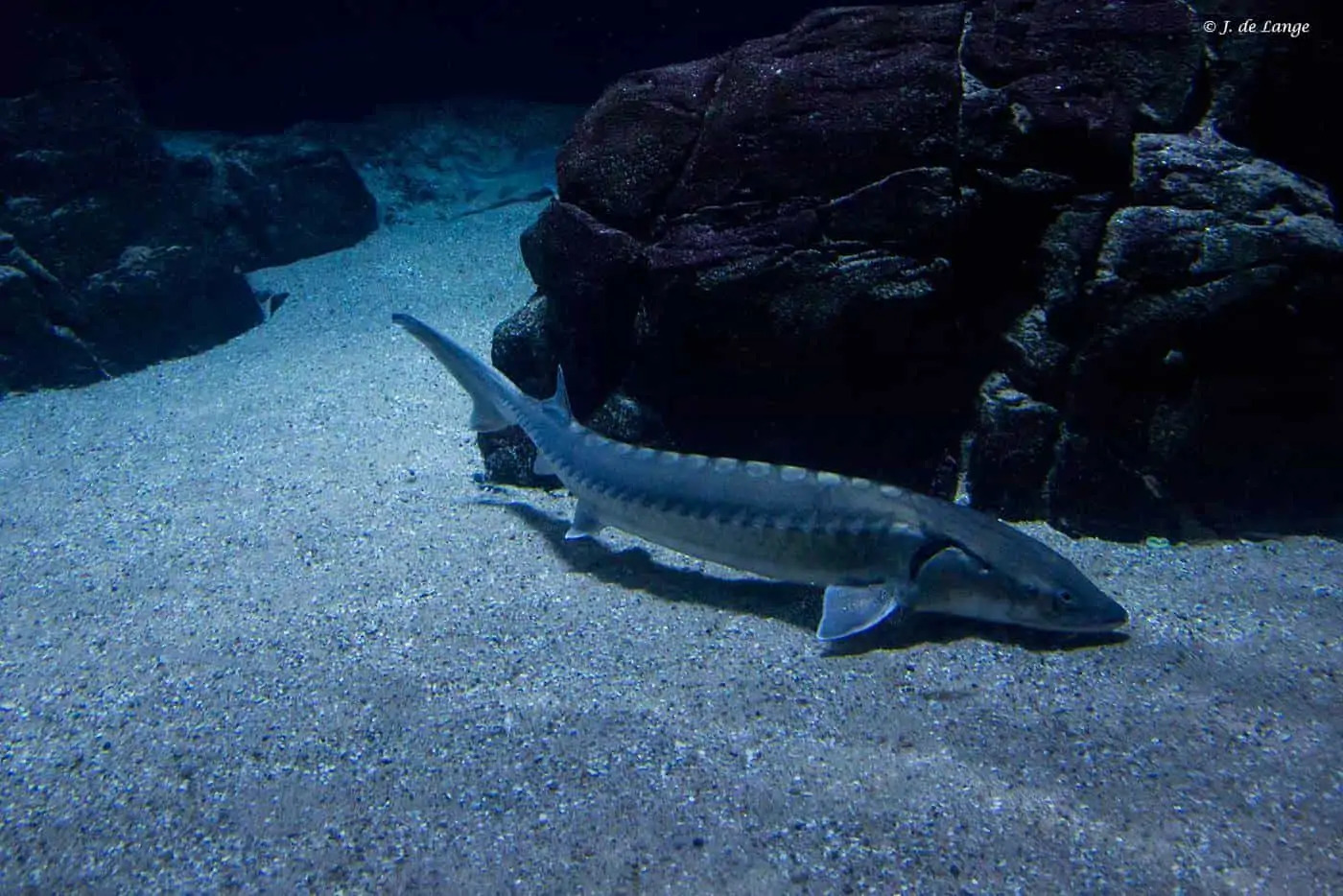
European Sea Sturgeon ( Acipenser sturio )
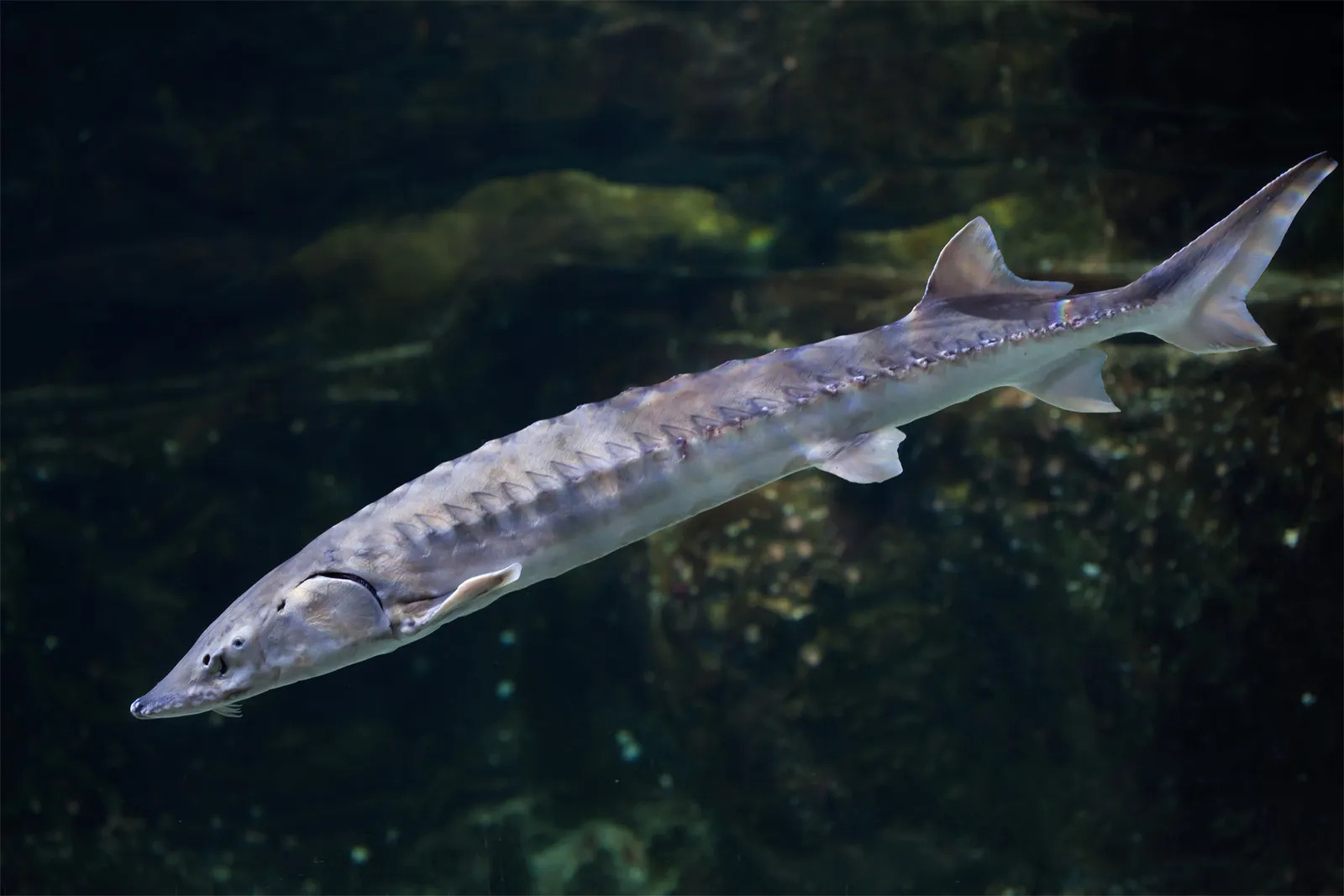
European Sea Sturgeon Encyclopædia Britannica
Wilding Profile: Golden Eagle
August 18, 2023
Once majestically soaring as a defining element of the British terrain, golden eagles (Aquila chrysaetos) saw their populations plummet during the 18th and 19th centuries. This decline was orchestrated by a combination of trophy hunting and apprehension among sheep farmers, who worried for their livestock. However, despite only being able to target and carry away the youngest lambs, this relentless pressure led to their extinction in England and Wales by 1850. While the notion of reintroducing these avian monarchs might carry a touch of romanticism, it holds within it a substantial potential to help reinstate the balance of British ecosystems.
In their role as apex predators situated at the pinnacle of the food chain, golden eagles exercise a top-down influence on prey populations. Much like the Eurasian lynx, their mere presence across a landscape instils caution in potential prey known as the “Landscape of Fear”, discouraging prolonged stays in any single area. This behavioural shift curbs excessive grazing by herbivores, thereby upholding the well-being and richness of plant ecosystems.
Golden eagles also predate and regulate the populations of foxes and small mammals using their acute vision and formidable talons. This cascading effect would play a crucial part in fostering stability within the broader ecological network.
The presence of golden eagles can also have a positive impact on scavenger communities. They are known to leave remains of their prey providing valuable food sources for species such as ravens and crows. This in turn contributes to nutrient-cycling through the breakdown of carcasses to return essential nutrients to the soil.
The reintroduction of golden eagles comes with challenges and concerns that need to be carefully addressed. One major consideration is the potential impact on local livestock farming. Golden eagles are opportunistic predators and might target young lambs or other livestock. Collaborative efforts between conservationists, farmers, and local communities would be essential in implementing effective measures to mitigate any conflicts that might arise.
Golden eagles evoke a profound sense of awe and can serve as a catalyst for conservation initiatives and nurturing a stronger connection between humanity and the natural world. The advantages stemming from their resurgence surpass any conceivable disadvantages. This presents a unique prospect, not solely for reinstating a vanished fragment of the British wilderness but also for enhancing the intricate tapestry of the entire ecosystem, leaving a lasting legacy for generations ahead.
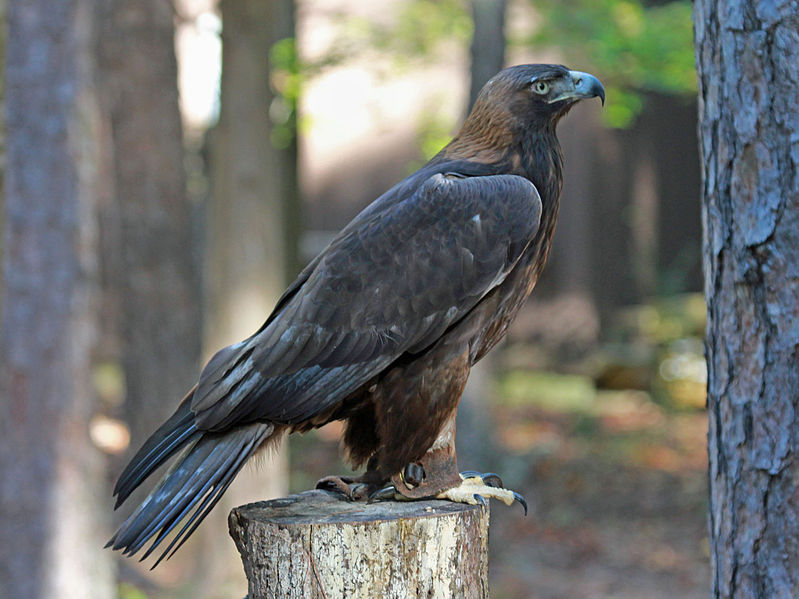
Golden Eagle ( Aquila chrysaetos ) Carolina Raptor Centre
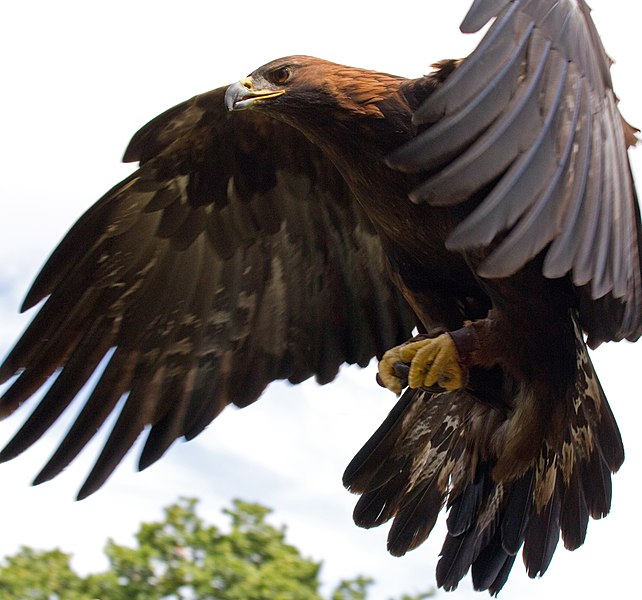
Golden Eagle Tony Hisgett Birmingham, UK
Wilding Profile: European Flat Oyster
August 2, 2023
Capable of purifying 140 litres per day, the unassuming European flat oyster (Ostrea edulis) plays a vital role in removing toxins from seawater, however, a 95% population loss over the past two centuries due to overfishing, pollution and habitat destruction makes it more vital than ever to boost their numbers to restore British marine ecosystems.
Offering a variety of benefits to their home environments of estuaries and coastal habitats, the role oysters play cannot be overstated. As natural filters, their gills constantly pump water removing tiny particles such as plankton, algae and other organic matter. This process maintains water clarity by reducing the levels of suspended sediment and pollutants.
Clean water naturally benefits all species within the affected ecosystem. Oysters remove excess nutrients such as nitrogen and phosphorus (often a result of agricultural activities) which cause algal blooms leading to ‘dead zones’ due to oxygen depletion killing wildlife.
Where possible oysters prefer to bunch together creating extensive oyster reefs which themselves form a crucial part of British ecosystems. These complex and three-dimensional structures provide essential habitats for a variety of marine species. Many fish seek shelter and breeding opportunities within the nooks and crannies, while numerous invertebrates attach themselves to the oyster shells, creating thriving microhabitats. Oyster reefs serve as essential nurseries and refuges, promoting biodiversity and supporting the life cycles of many marine organisms.
Though their populations remain heavily depleted, once established oysters are incredibly adaptable and resilient. For example, most individuals begin life as males becoming females as they mature. Some even switch back and forth each year to match reproductive demands.
The protection offered by oyster reefs is particularly valuable in the face of environmental challenges such as rising sea levels and coastal erosion. Oysters possess the ability to attenuate wave energy, reducing the impact of storm surges and tidal forces on coastlines. By creating a natural buffer, they help to stabilize shorelines and protect vulnerable coastal habitats, including marshes and seagrass beds which are currently home to other critical species in Britain such as curlews and seagrass itself.
Furthermore, the economic benefits of oyster ecosystems cannot be overlooked. Oysters have been popular as a food source in Britain since the Roman era with thriving fisheries. These contribute to local economies and provide a valuable source of livelihood for coastal communities. Sustainable oyster harvesting practices, combined with appropriate management strategies, ensure the continued prosperity of these fisheries while maintaining the ecological balance.
In addition to their economic value, oysters offer exciting opportunities for habitat restoration and conservation efforts. In some areas such as The Thames Estuary and The Solent, oyster restoration projects have been implemented to help revive declining populations and rebuild oyster reefs.
In recent years, oysters have also become a focal point in discussions about climate change mitigation and adaptation. Oyster reefs, along with other coastal ecosystems, have the potential to sequester significant amounts of carbon dioxide from the atmosphere.
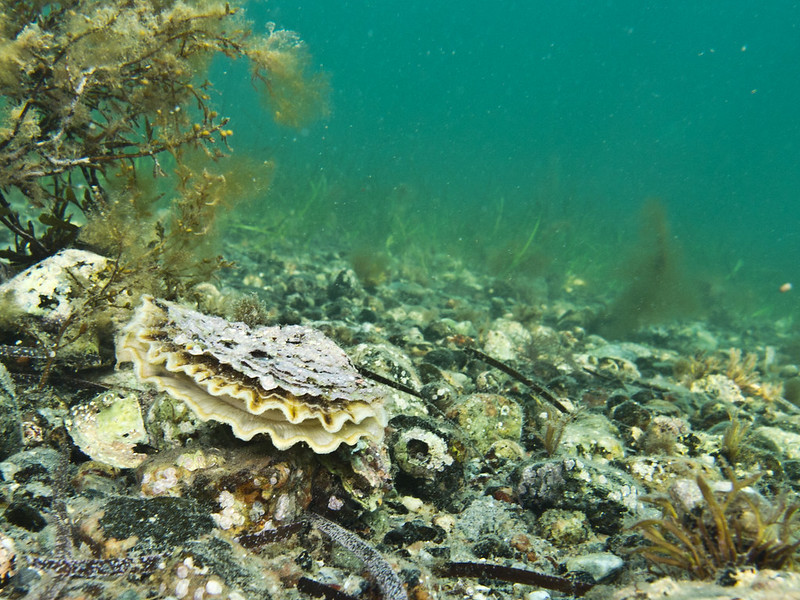
Underwater oyster in habitat. Marten Hanson
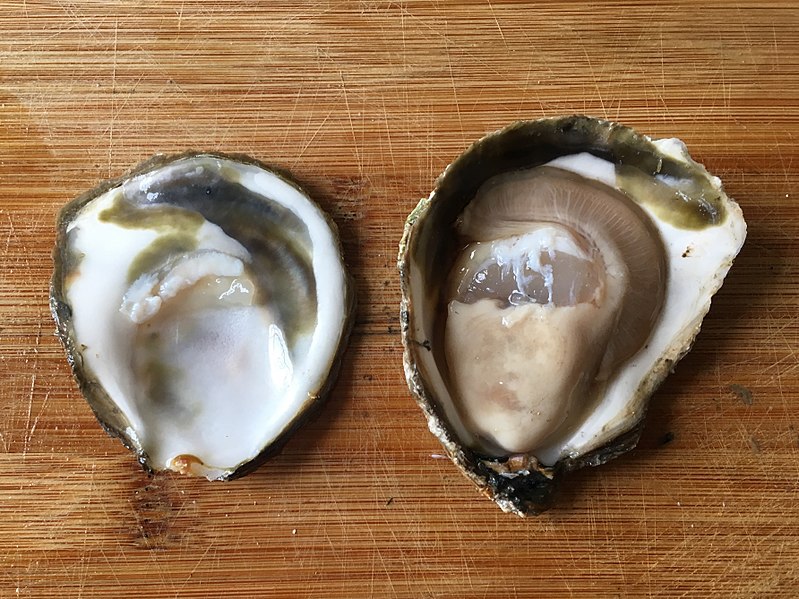
European Flat Oyster from Loch Fyne, Scotland Taishonambu
Wilding Profile: Pine Marten
July 13, 2023
During the Mesolithic era (9,000 – 4,500 BC) the pine marten ( Martes martes ) was Britain’s most abundant carnivore with numbers estimated at almost 150,000 with the post-ice-age archipelago being almost fully wooded.
These vast connected forests are often referred to as the prehistoric ‘Wildwood’. However, today pine martens only number 3,700 in Scotland and 2,700 in Ireland. They are almost extinct across England.
Their first major persecution came with the passing of The Preservation of Grain Act, signed by Henry VIII in 1532 making it compulsory for ‘every man, woman and child to kill as many creatures as possible that appeared on the official list of vermin.’ They were finally almost completely wiped out by gamekeepers in the early 20th Century.
Pine martens (group name: ‘a richness’) are members of the Mustelids which include weasels, badgers and otters – a globally successful family of species occupying many different niches – otters: aquatic, badgers: burrowers, pine martens: arboreal.
The reintroduction of pine martens can help regulate populations of small mammals. Rodents sometimes experience population explosions, leading to negative impacts on habitats and agricultural land. Through predation pine martens act as natural pest controllers, helping to maintain a healthy balance. This method is far healthier than using harmful pesticides and rodenticides which can have wider polluting effects on ecosystems.
Pine martens play an important role in woodland seed dispersal by inadvertently carrying seeds in their fur. This dispersal mechanism promotes the establishment of new vegetation and enhances biodiversity.
The presence of pine martens can have a positive impact on bird populations. As skilled double-jointed climbers, they often create tree cavities to use as den sites. Once abandoned these nesting spots are popular among owls, woodpeckers and various songbirds.
Red squirrels (Sciurus vulgaris) have been severely impacted by the introduction of non-native grey squirrels (Sciurus carolinensis) which took place across southern Britain in the 1870s. Greys outcompete reds for resources and carry a deadly pox virus (Parapoxvirus) which they are largely immune to but reds are not. Pine martens are natural predators of greys and can help control their populations creating a more favourable environment for red squirrel populations to recover.
The presence of apex predators like pine martens has a cascading effect on the entire food web. They can influence the behaviour and distribution of prey species. This can result in changes in the feeding patterns of herbivores, altering their browsing and foraging habits as they become more skittish and afraid of predation thus moving on before consuming more seeds/saplings. Consequently, vegetation dynamics may shift, leading to a more diverse and balanced ecosystem following positive trophic cascades.
The reintroduction of pine martens can also bring economic benefits through wildlife tourism. Pine martens are charismatic creatures, attracting nature enthusiasts and tourists who are eager to catch a glimpse of these elusive mammals. Increased tourism can generate revenue for local communities and encourage conservation efforts in the long run. Nature-based tourism has the potential to support sustainable development and provide economic incentives for the conservation of natural habitats.

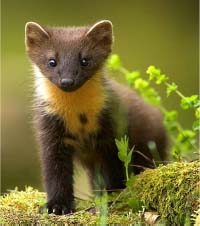
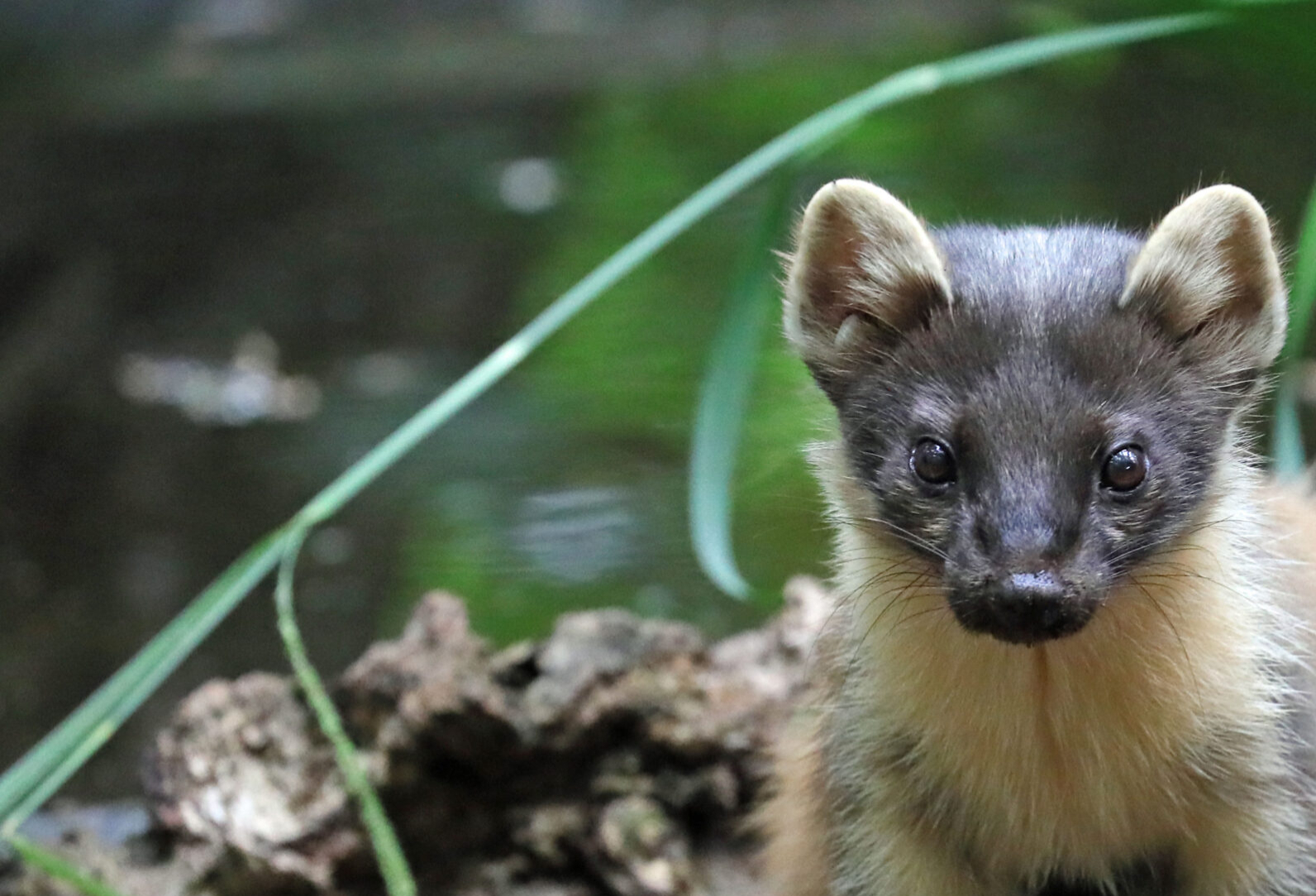
Wilding Profile: Plants
June 28, 2023
Over four-hundred species of flora have become extinct in Britain over the past 200 years with numerous plants still at risk today. Many are keystone species providing essential resources such as food and shelter for other organisms. Reintroductions can help reestablish the intricate webs of ecological reactions that have been disrupted.
The British Isles is home to a diverse range of ecosystems, from ancient woodlands to sprawling meadows. Reintroducing endangered plants could restore ecosystems to their former glory. These can take place in a variety of habitats, such as wetlands, grasslands, and forests, each with its own unique set of challenges and opportunities.
An example of a successful reintroduction is the Lady’s Slipper Orchid (Cypripedium calceolus). This magnificent species was on the brink of extinction due to habitat loss and over-collection. However, through careful conservation efforts, including seed propagation and habitat restoration, it has been successfully reintroduced to several sites in England. Its return has not only delighted botanists and nature enthusiasts but has also had significant ecological effects such as boosting crucial pollinator interactions.
This orchid relies on specific insects, such as bees and wasps for pollination. By reintroducing the plant these pollinators can thrive and fulfill wider ecological roles. This ripple effect benefits other plant species that rely on similar pollinators. These restored networks contribute to increased biodiversity and more resilient ecosystems.
Another remarkable example of reintroduction efforts is the restoration of seagrass meadows along the British coastline. Seagrasses are vital habitats that provide shelter and food for numerous marine species. However, pollution, coastal development, and trawling have resulted in the widespread decline of seagrass meadows. Reintroducing seagrass species such as Zostera marina has proven to be an effective way of rejuvenating these crucial habitats.
Seagrass meadows act as nurseries for commercially important fish species, offering protection and abundant food sources for young fish. As seagrass beds recover, fish populations can rebound, benefiting both the local ecosystem and the fishing industry. Moreover, seagrass meadows act as carbon sinks, absorbing and storing significant amounts of carbon dioxide. Reestablishing these carbon-absorbing habitats contributes to mitigating climate change and its impacts.
Many natural areas in Britain have become isolated and disconnected due to urbanisation and expansions in agriculture. Plant Reintroductions can help bridge these gaps and create corridors for wildlife movement. For instance, the reintroduction of native tree species like the black poplar (Populus nigra) has enabled the reestablishment of woodland corridors, facilitating the movement of birds, mammals, and insects across the landscape.
These projects are not without their challenges. Successful reintroduction requires careful planning, monitoring, and ongoing management. Factors such as habitat suitability, availability of suitable pollinators or dispersal agents, and the presence of suitable host plants or symbiotic organisms must be considered.
The reintroduction of endangered plants in Britain has the potential to have profound ecological effects. By restoring plant species to their natural habitats, we can revive pollinator networks, rejuvenate seagrass meadows, and reconnect fragmented landscapes. These efforts not only promote biodiversity but also contribute to the overall health and resilience of ecosystems. As we continue to prioritise conservation and restoration, the reintroduction of endangered plants stands as a powerful tool to safeguard the future of Britain’s natural heritage.
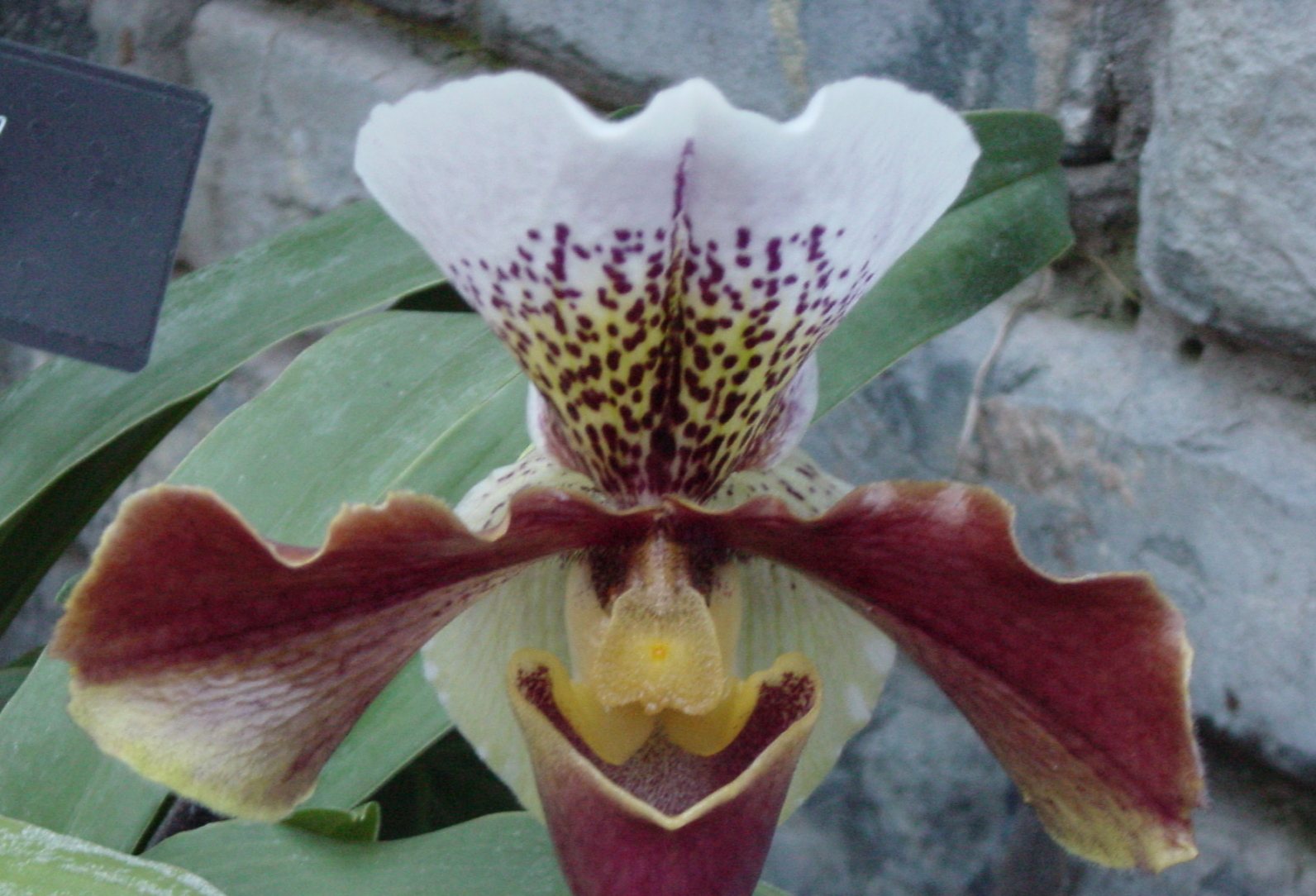
Lady`s Slipper Orchid
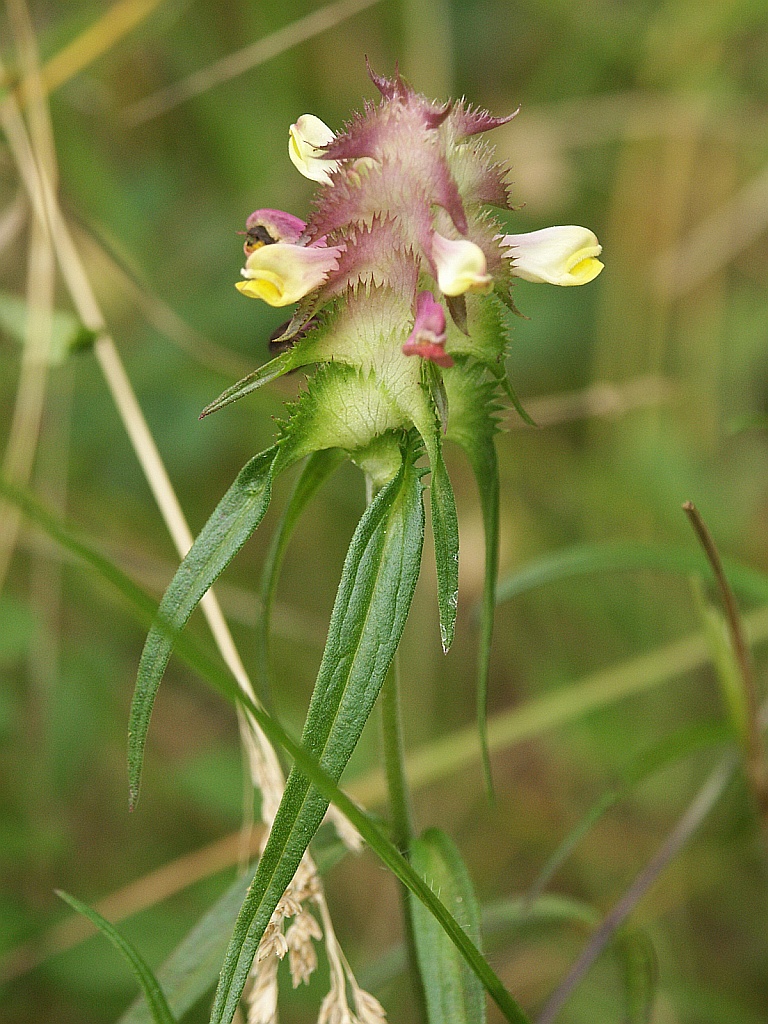
Crested Cow-Wheat-metampyrum cristatum
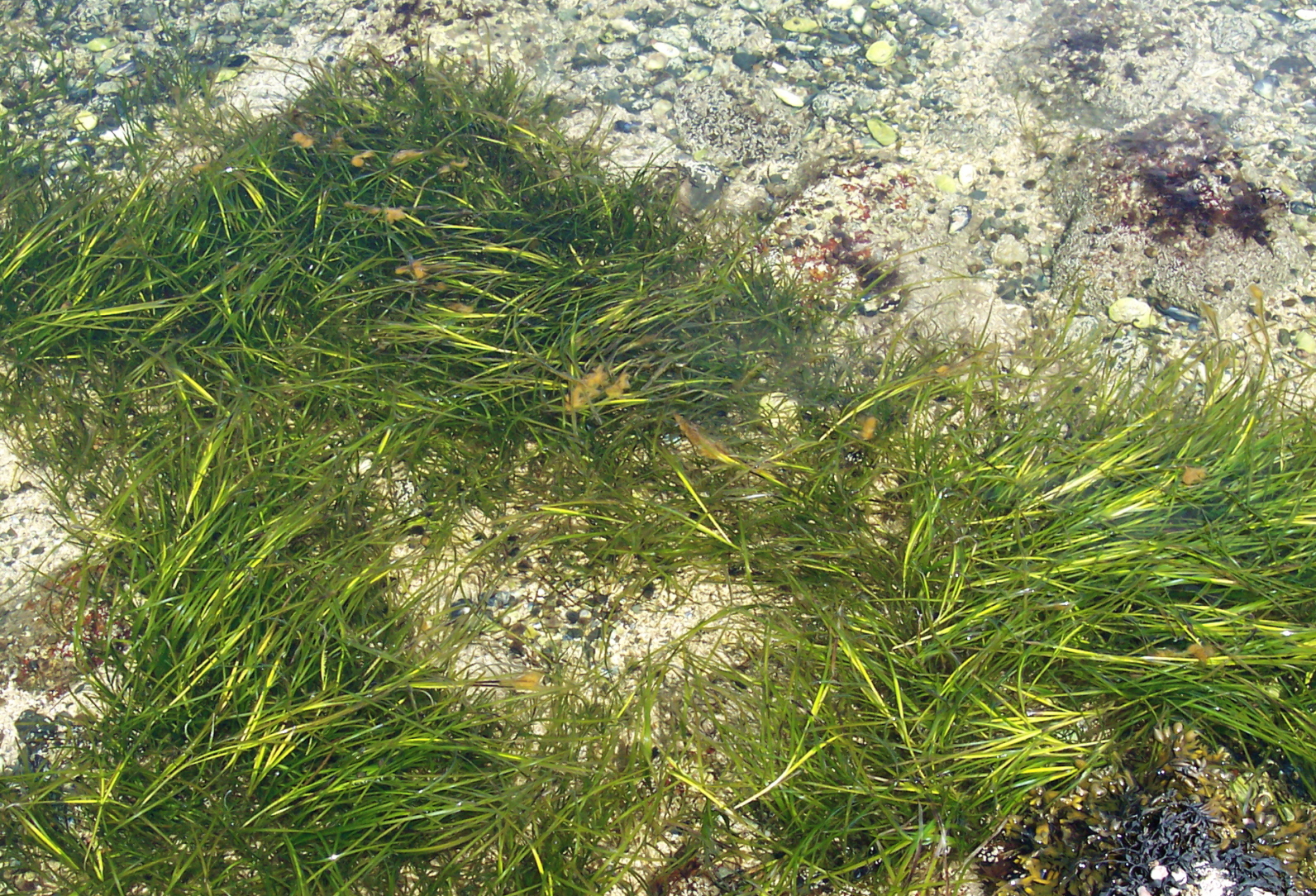
Sea grass- zostera Colin Faulkingham
Wilding Profile: Lynx
June 8, 2023
Lynx ( Lynx lynx ) are an elusive species that became extinct in Britain 1,300 years ago following human hunting and habitat loss, with the final population holding out in Scotland. Though sparsely populated throughout their northern hemisphere territories, which can span from 20 to 450 km2 depending on habitat and food availability, these apex predators are classified as a species of Least Concern in the regions they still inhabit.
Lynx play a crucial role in the landscape by enforcing an ‘ecology of fear’, causing potential prey species to adapt their behaviours to avoid predation. They primarily feed on herbivores such as deer and rabbits, which prevents overgrazing and allows for the proliferation of saplings and vegetation. This regeneration, in turn, supports a wide array of other plant and animal species.
Reintroducing lynx populations to Britain could also lead to a decrease in small predators like foxes through competition for food, allowing smaller prey species, such as rodents, to thrive. This increase in prey availability can attract other threatened predators, contributing to a more diverse and balanced ecosystem.
These shy and mostly nocturnal felines prefer densely forested areas suitable for ambush hunting and safely raising their young (kittens). They are considered an indicator species, meaning their presence or absence reflects the overall health and integrity of an ecosystem. Therefore, focusing on lynx conservation has positive trickle-down effects on other species.
Currently, there are no wild lynx populations in Britain, and conservationists have faced obstacles due to local concerns over threats to livestock, potential disruption to current ecosystems, and human-wildlife conflict issues more generally. However, attitudes are slowly changing as other countries, such as Germany, Switzerland, and Slovenia, have successfully reintroduced lynx in recent years.
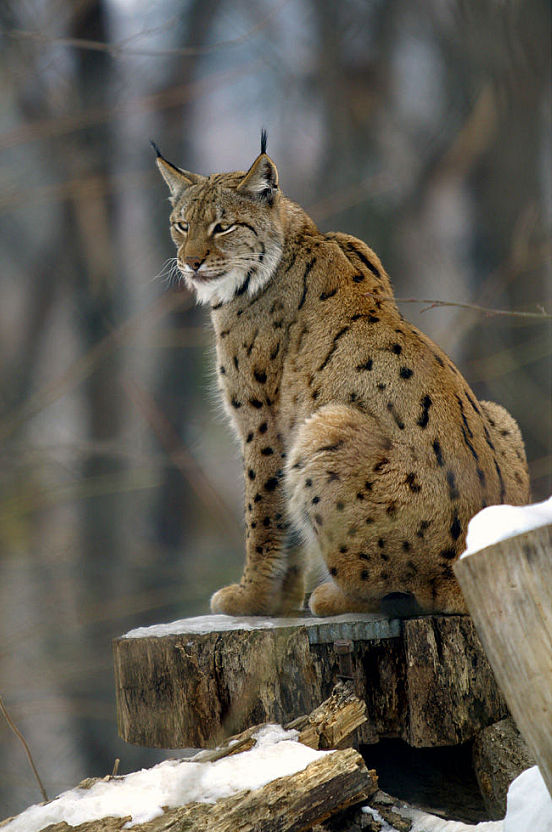
Wilding Profile: Beavers
June 1, 2023
Beavers ( Castor fiber ) became extinct across the island of Great Britain in the 16th Century because of overhunting for fur, meat and castoreum – a secretion in popular use for the perfumes and medicines of the day.
So sort after were the materials of the world’s second-biggest rodent that large numbers of European opportunists were drawn in search of its wealth during the settling of the New World. This is where the largest beaver populations still remain today as a species of Least Concern at approximately fifteen million.
In Britain, a beaver family of unknown origin colonised the River Otter in Devon in 2008. It is believed to be the first in the wild since their previous nationwide extinction ∼400 years ago. A pair was introduced into the colony in 2016 to improve genetic diversity.
Beavers are believed to now number ∼800 across England and Wales reaching perhaps as many as 1,000 in Scotland alone. In 2022 the British government awarded them nationally protected status “making it illegal to capture, kill, injure or disturb them.”
Given this legal status, widespread public support and positive influences on ecosystems, beavers are set to be a permanent fixture in British wildlife for many generations to come.
Beavers famously build dams – but why? The deep pools they form provide shelter and protection against predators (mainly foxes in Britain) for both adults and babies (kits). These ‘beaver lodges’ are only accessible underwater.
Beavers are a keystone species meaning they are a central influence in forming the ecosystems around them.
Dams, also known as impoundments, naturally create deep and slow-moving water which attracts insects, fish and amphibians. These species bring predatory birds and small mammals such as otters.
Adjacent areas are soaked with nutrients and are more likely to remain hydrated in times of severe drought such as the British summer of 2022. These surrounding areas often transform into fertile meadows inviting large herbivores including deer, wild horses, boar, cattle and bison. These mammals in turn bring about important large-scale ecological processes of their own.
The shift in water patterns drowns some surrounding trees providing perfect habitats for fungi and insects which bring birds such as woodpeckers, kingfishers and ospreys.
Where beaver fells many trees through gnawing, species such as willows have adapted to resist and regrow stems. This natural form of coppicing allows the tree to rejuvenate.
Dams also help to prevent the flooding of human settlements by breaking up heavy water flows during high precipitation weather events. Underground water tables are given a chance to refill.
Beavers are quickly reintegrating into British ecosystems and given the desperate need for ingenuity to fight climate change, the return of this native species working for free can only be a positive!


Wilding Profile: Bison
May 26, 2023
Having gone extinct thousands of years ago, Europe’s largest land mammal was reintroduced to Britain last year.
Bison are believed to have disappeared due to human activity following the end of the last ice age which saw these islands cut off from Europe due to rising sea levels. These intelligent and adaptable beasts are set to transform the countryside using ancient, still not entirely understood behaviours.
As herbivorous bovine species, their diet consists mainly of grasses, fruits and woody material. Unlike their cow cousins which chew the ends of branches, bison take from the trunks, particularly in winter.
Known widely as ‘Wisent’ across the continent they practise ‘ring-barking’, a process of using their horns to tear bark to eat. They often target and kill invasive tree species which then fall bringing sunlight through the canopy to the forest floor where small plants can thrive. The deadwood attracts insects which in turn bring birds.
Cow wheat is the main food source of heath fritillary butterflies which only grow in cleared patches of woodland which bison create. The butterfly is also known as the ‘Woodsman’s Follower’.
They enjoy sand bathing and the patches they create invite pioneer plants, insects and reptiles.
Birds such as magpies love to perch on bison to inspect them for insects and use their fur as nesting material.
They disperse seeds caught in their fur and passed through to their dung. Their dung attracts insects which feed and breed.
Their large size and thick skin allow them to break through thick vegetation creating corridors for other species to pass through.
Males can weigh up to a tonne and 7ft at the shoulder and both genders can live up to 25 in the wild. They reach sexual maturity between four-six with a rutting season lasting between Aug-Oct. Their gestation period lasts, like humans, for nine months.
Their herds vary in size but are matriarchal, meaning led by an older female. Males are usually quite nomadic and return to herds to breed/rut with other males.
Bison are a keystone species meaning they define entire ecosystems – much like beavers, wolves and bees. Their behaviours are still being studied. For example, rangers in the Netherlands who have pioneered much wilding knowledge and practices have witnessed individuals trampling invasive rhododendron before urinating and rolling in the mixture. The plant’s sap is toxic and it is believed to form a type of insect repellent when mixed with bison urine.
Though slowly at first while being carefully managed, British bison numbers are expected to continue to grow. Last October saw the first calf born on these islands for thousands of years!

Maasthorst. Netherlands Evan Bowen-Jones
Sea Ranger Service
April 28, 2023
Is it time to train a generation of British sailors to fight climate change on the high seas?
In the Great Depression, US President Roosevelt founded the Civilian Conservative Corps in 1933 which oversaw the mobilisation of three million men to plant billions of trees, construct 800 US national parks and fisheries, and restore river systems.
The US Army led these men into nature as they performed the largest-scale restoration event in human history. Equipped with technical skills they returned home and revitalised local communities creating economic prosperity across a poverty-stricken society.
The Dutch-founded conservation and social change organisation Sea Ranger Service (SRS) is bringing this vision to the modern era training underprivileged youths in deprived port cities across Europe.
While Britain has seen large increases in degree and postgraduate degree holders in recent years, many industries have been left with skilled labour shortages. SRS identified this lack of capacity and combines it with the needs of coastal communities with poor job prospects to create lasting social impacts.
“Think of this island nation and its maritime heritage. It’s so rich in its history. If you think of Grimsby for example, it was one of the biggest fishing ports in Europe. It was a really rich community. There was wealth and then there was change. The mechanisation of the processes in ports. Fish processing became cheaper overseas.” Says SRS Founder and CEO Wietse van der Werf.
It is not just coastal communities in need of intervention. There are currently over 17,000 areas of ocean designated for protection across the globe. Research shows only 0.6% of these regions are sufficiently protected.
“I worked as an engineer on research ships going to Antarctica, worked on fisheries issues undercover to help investigate illegal fishing. I’ve seen that while there is the notion of increased protection for the ocean in reality a lot of that protection is primarily on paper.” Says Wietse.
With research revealing the potential economic benefits of marine conservation, SRS is looking to use this incentive to raise funds across Europe.
“Except for starting an airline or going out into space, to have ships and go out to sea is one of the most expensive things you can do.” Says Wietse.
Recruits do not require any previous education and SRS is often the first place many encounter maritime life and the possibility of a career. If they complete the highly structured one-week boot camp they can be employed full-time by SRS and receive another year of additional training involving climate research, seagrass restoration and testing water quality. Upon reaching 180 ‘Sea Days’ recruits receive a rating deck sailing endorsement – a qualification which allows individuals to work on ships.
A key area of focus for SRS has been seagrass restoration in the Netherlands and France. As the only flowering plant that grows in a marine environment, it is crucial for biodiversity and acts as an important source of carbon sequestration.
We asked Wietse what it’s like being out at sea for long stretches of time. “This question makes me smile because it is spellbound. It is absolutely on the one hand incredible, and on the other hand incredibly challenging at the same time.”
He has worked in Antarctic weather systems larger than England which take weeks to get through as there is no land mass to break them up. “There are extremely tough days and you are in a little tin bobbing around on the ocean. You are part of a team and as an engineer, I had my role. It is a microcosm of society. There is so much beauty, freedom and purpose.”
Having come to Britain SRS is currently looking to replicate its success in Grimsby, Portsmouth and Port Talbot.
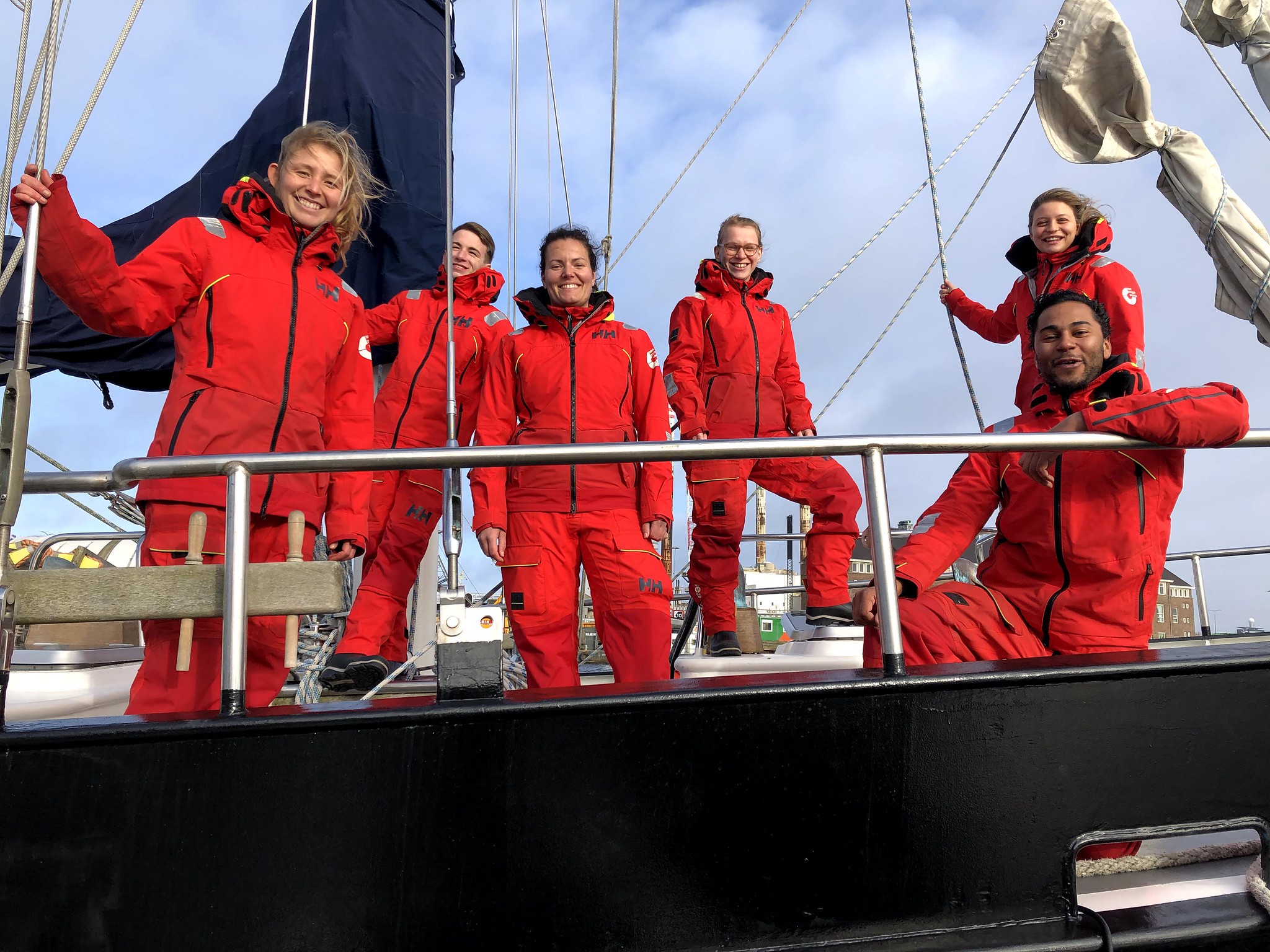
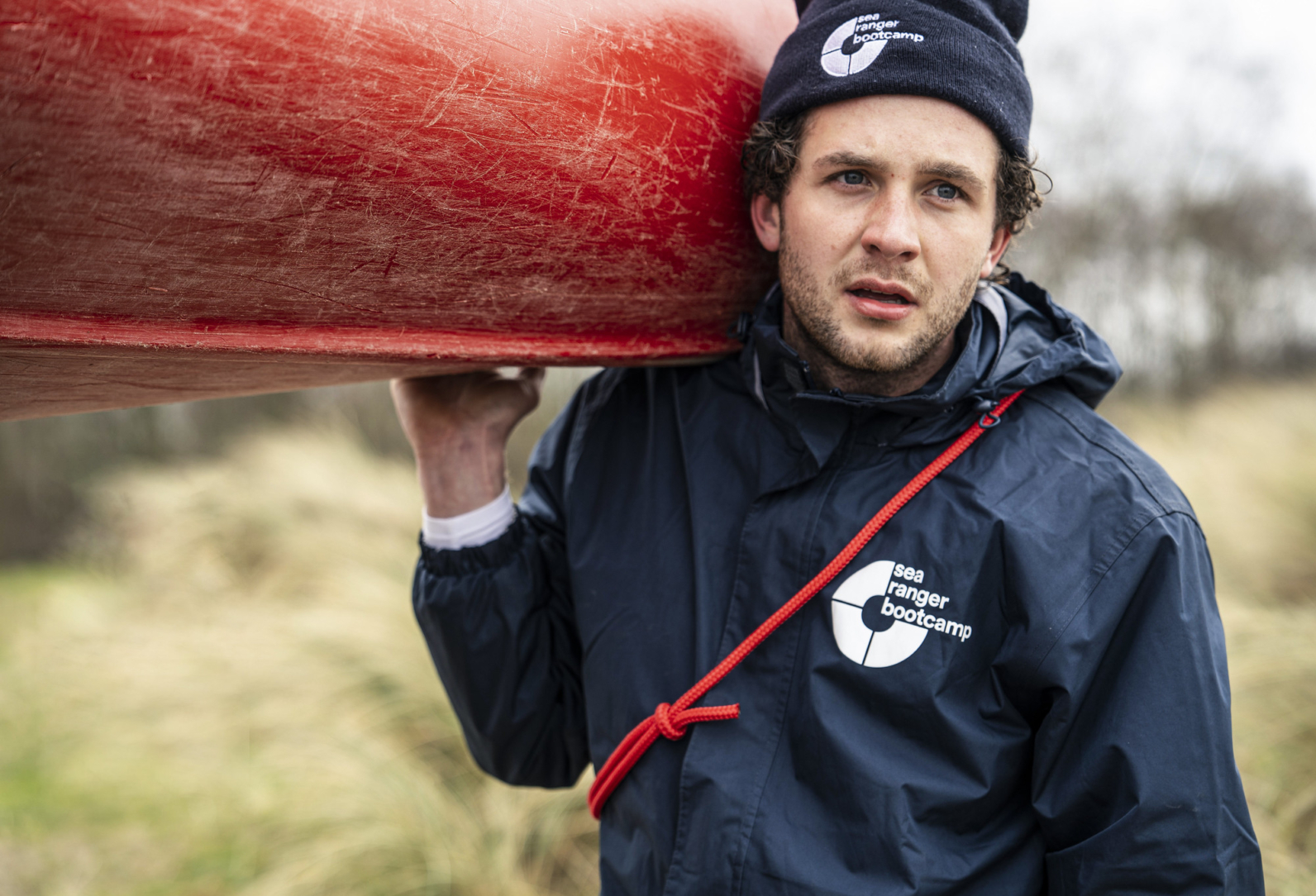
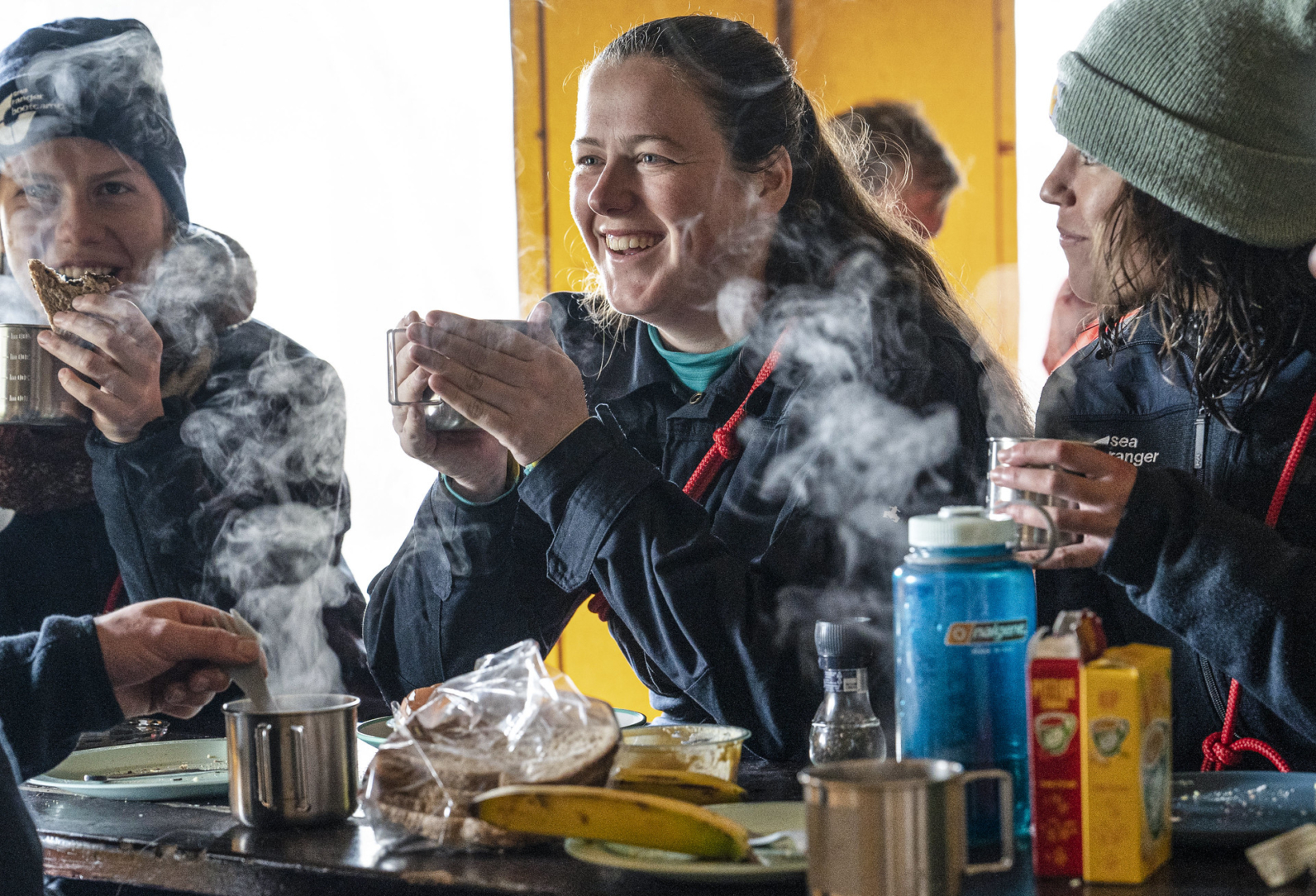
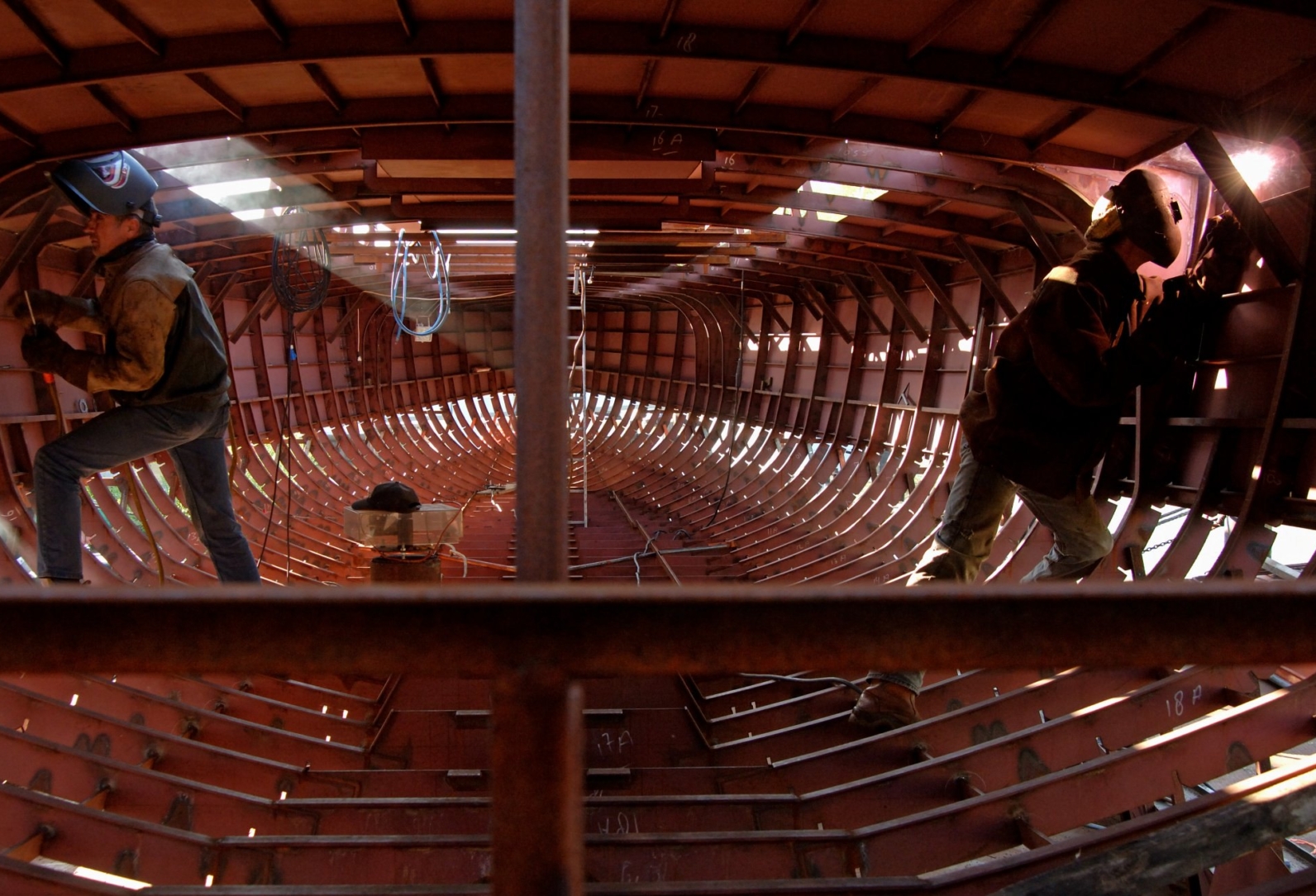
Bringing the world`s heaviest flying bird back to the UK
March 31, 2023
Started in 1998 as a hobby interest by former police officer David Waters, the Great Bustard Group (GBG) has gone on to foster a tentative but growing population of the world’s heaviest flying bird on Salisbury Plain, Wiltshire.
However, the organisation had to overcome cultural shifts in conservation attitudes that today might seem outdated.
“There was a philosophy that because something has gone extinct it is because it can’t cope with prevailing conditions so it’s pointless to try and bring it back.” Says Waters. “The most common argument was that money should be spent on existing wildlife instead.”
The GBG changed minds by raising its own funds directly from the public revealing a willingness to back species reintroductions.
“It’s an attractive prospect to donate funding to the heaviest flying bird in the world.”
Though going extinct in the UK during the latter 19th Century, the great bustard still carries much cultural significance appearing on the Wiltshire county flag and coat of arms. This heritage and pride from the community have led GBG to receive sponsorship from local construction companies, brewers, farmers and other local volunteers.
Bustards make up a family of 26 species across all continents outside the Americas and migrate as far as the poles. The Great Bustard is the heaviest at over 20kg and though previously believed to be close relatives of the crane due to their shape, genetic discoveries now place them between cuckoos and flycatchers. They thrive in wide county arable farming areas and are particularly fond of oil seed rape.
The Enclosure Acts sounded the death knell of the Great Bustard as their remnant unfenced common land habitats were broken up into smaller fields for more intense public usage.
Given the widespread enthusiasm for species identification and classification of the Victorian Era, it is believed collectors also played a large part in the Great Bustard’s extinction.
“If you were an ornithologist you went round and collected birds and their eggs. And certainly long-lived birds like Great Bustards which are slow to mature and breed… The ethos of the Victorian collectors with rarer birds being more desirable, meant the last of a dying species would be the best one to have.”
The GBG’s work began with a commissioned feasibility study for reintroductions. A steering group was convened with English Nature (then Natural England), DEFRA and RSPB. Special licensing had to be obtained as the bird was now considered non-native. The government did not respond for two years.
Once licensing was finally obtained sourcing of birds became the main question. ICUN guidelines state wild stock rather than captive-bred stock should be used. A suitable source population was found in Saratov, Russia. The GBG embarked on a ten-year egg rescue programme among the vast fields collecting from natural Great Bustard nests.
“Russia isn’t a particularly easy place even for most Russians to live, but it was certainly quite challenging for an Englishman out there, particularly one with a police background. But we did manage to source many eggs with a reasonable hatch rate.”
The first batch of Wiltshire reintroductions established a small population with a high post-release attrition rate over the first few months. However, survival rates increased significantly once birds rode out their first winter demonstrating the Great Bustard could once again live and breed in southern England.
In support of the GBG, Chester University carried out a genetic study of each European Great Bustard population. In a first, researchers included genetic material taken from the under-foot of extinct English Great Bustards. Samples were taken from old museums hosting stuffed birds.
The closest living match was found in the Iberian (Spanish) gene pool. This surprised academics as this population was previously seen as too distinct owing to the vastly different Pyrenean climate. This was also a fortuitous find as the Iberian peninsula hosts half the globe’s Great Bustard population. This came at a good time as political shifts in Russia made working there increasingly difficult.
Following UK government licensing approval GBG began working alongside the Spanish local governments of Castille de Leon and Castille de la Mancha. Both issued licenses for eggs to be directly collected from nests over a timeframe allowing for natural breeding levels to be minimally affected.
Having been carefully transported back to the UK with the help of Madrid Zoo then Birdworld and Cotswold Wildlife Park, chicks were hand-reared at the GBG centre in Wiltshire.
Today the Wiltshire Great Bustard population numbers almost 100 and given the high death rate of captive-bred chicks, GBG’s focus is on supporting these wild-release birds through ongoing monitoring and support.
“Now reintroductions, translocations, and restorations are pretty mainstream activities for conservationists. Twenty-five years ago they weren’t, they were very unpopular.”
As the population continues to increase and stabilise, GBG hopes the bird can spread back to regions it previously called home, particularly Yorkshire, Lincolnshire and East Anglia.


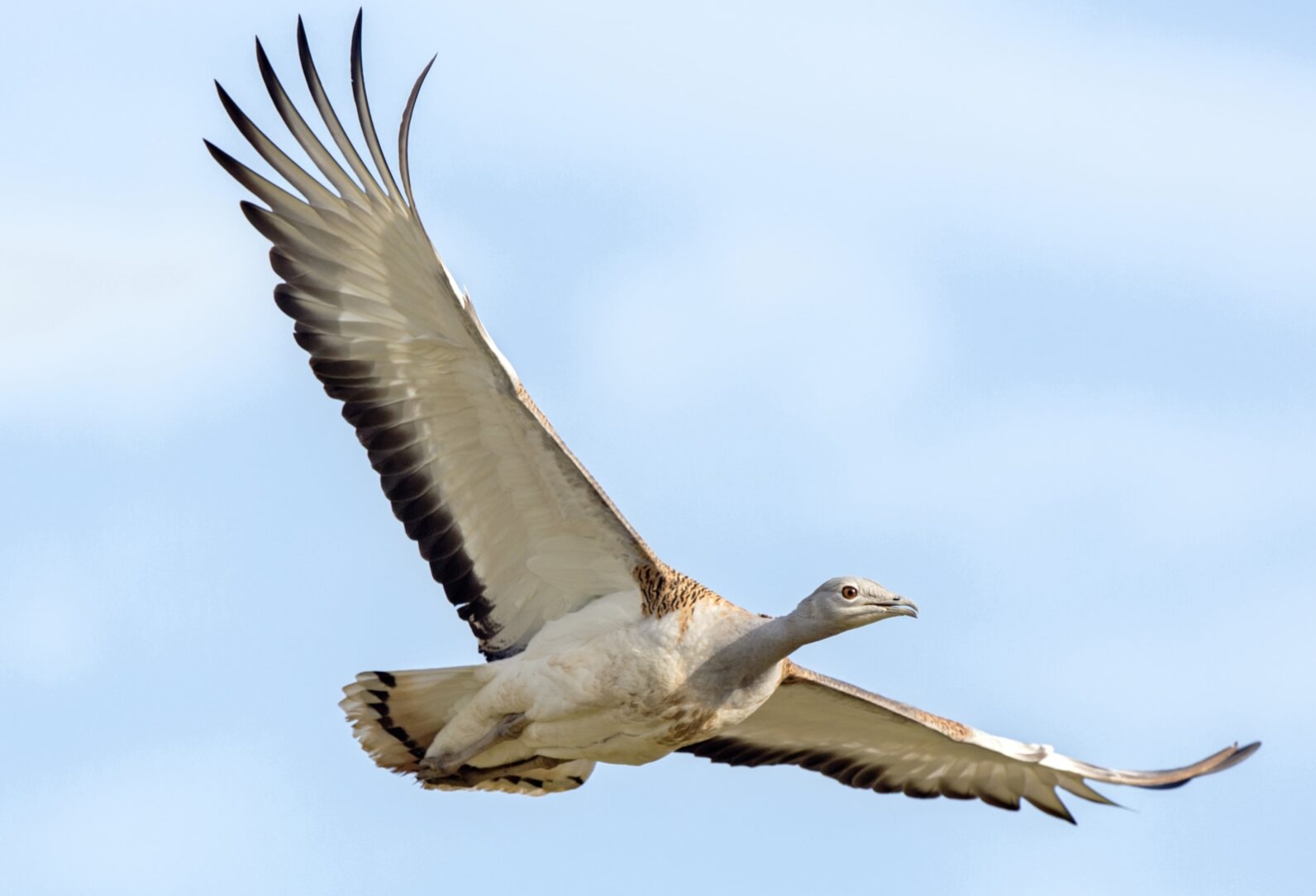
Innovative poverty-reduction programmes integrating family planning and conservation meet success in Uganda
February 27, 2023
Across the globe 218 million women and girls in low and middle-income countries have an unmet need for family planning. These are women of reproductive age, either married or in a union who want to stop or delay childbearing but are not using any method of contraception (United Nations. 2014).
No country has transitioned into a higher income bracket without investment in women’s education and making modern family planning methods available. Female-centred policy approaches offer more choices for potential mothers who can then delay or space childbirth to advance their education, work more hours and have more free time.
There is a crossover between parts of the world in need of quality health service provision, including rights-based, voluntary family planning programmes and experiencing environmental challenges.
Founded in 1968 by its British namesake family planning pioneer, the Margaret Pyke Trust has been implementing innovative programmes that incorporate conservation needs alongside reproductive education in southwestern Uganda.
“A traditional conservation project would lead to only conservation outcomes, what’s different about this is the added value of integration, those health messages and conservation messages are delivered in an integrated manner.” Says Advocacy and Projects Manager Carina Hirsch based in London.
The DEFRA-funded project oversees wetlands conservation of the Ugandan national bird, the great crowned crane while improving health services provision and education. Traditional gender roles remain deeply embedded within the Sub-Saharan nation’s society, however, the Trust’s approach has found success.
“Men would only attend community training on a subject felt traditionally relevant to him such as alternative and sustainable livelihoods.” Says Midwife and Uganda Country Lead Sarah Uwimbabazi. “Women might be forbidden from attending such events. But when delivered in an integrated manner you are receiving all of that information.”
Cohorts of the population previously unreachable are now receiving the information they would not have through single-sector programmes.
“This approach leads to greater gender outcomes, greater health outcomes, greater livelihood outcomes, greater environmental outcomes.” Says Hirsch, adding that the Trust works at the programmatic level and as a national and global advocate.
In 2022 the Trust hosted the Integrated Crane Festival.
“This festival was an exciting event and when they arrived there was a mobile health clinic set up and many accessed the services.” Says Uwimbabazi. “They came for the festival and found the clinic set up too. Most outreaches are integrated. People from the environment sector, people from the health sector and then all [the community] are there.”
Having seen community improvements, locals are keen to access wider resources and the Trust acts as a vehicle for a host of other services such as preventative care, vaccines, dental care and eye clinics. Individuals of both sexes often come with a single issue and leave having had full body checkups – something that otherwise would prove expensive in terms of cost and work hours missed.
Women and girls who are able to access services and therefore exercise reproductive choice, have more time to work in the fields and so can help generate more profits. Most children now go to school because their parents can afford it.
Prior to engaging with the programmes, communities held many misconceptions about modern methods of contraception often encouraged by conservative elders or religious leaders. Beliefs such as that implants can move through the bloodstream to the heart or brain and cause death. Interruptions of hormonal patterns can cause haemorrhaging/bleeding to death. Condoms cause cancer. Increases in partner infidelity.
Locals are trained in climate-smart agricultural techniques such as the use of the calliandra plant which works as a carbon sink and prevents soil erosion. They are taught how to manage wetlands alongside the great crowned crane which can breed and thrive in its natural habitat.
They also undertake habitat restoration to protect soil and water sources for both communities and native wildlife. Breaking the cycle of poverty following the introduction of maternal and newborn health services and information and fewer unintended pregnancies, locals have more time to invest in conservation and so act as stewards equipped with the knowledge and tools with the resilience to build independence and resilience to Climate Change.
Before men would not attend family planning initiatives viewing them as a women-only issue. Now the Margaret Pyke Trust oversees workshops integrating family planning, conservation, farming and land use, community sanitation, communicable/incommunicable disease prevention and more to both sexes.
“The Intergovernmental Panel on Climate Change, the scientific body that advises the UN Framework Convention on Climate Change highlighted family planning as a climate adaption and resilience building strategy.” Says Hirsch adding that Uganda is ahead of the curve in the region.
In the coming years, she would like to see similar programmes integrating reproductive health rolled out across other East African nations learning from the programmatic and broader national experience of Uganda.
“Family Planning is not the be-all and end-all for development, but it is a crucial element that contributes to the acceleration of many development objectives, including climate resilience. Decades of research have shown that for every dollar spent on family planning, six or seven dollars are saved on other development interventions.”
Uwimbabazi was asked what she would like to see for the communities she works with. “People could continue to get rid of poverty, communities with enough food, two meals a day not one, able to sell their own food, not just buy. More children in schools. Fewer teenage pregnancies, teen marriages. More trained health workers.”
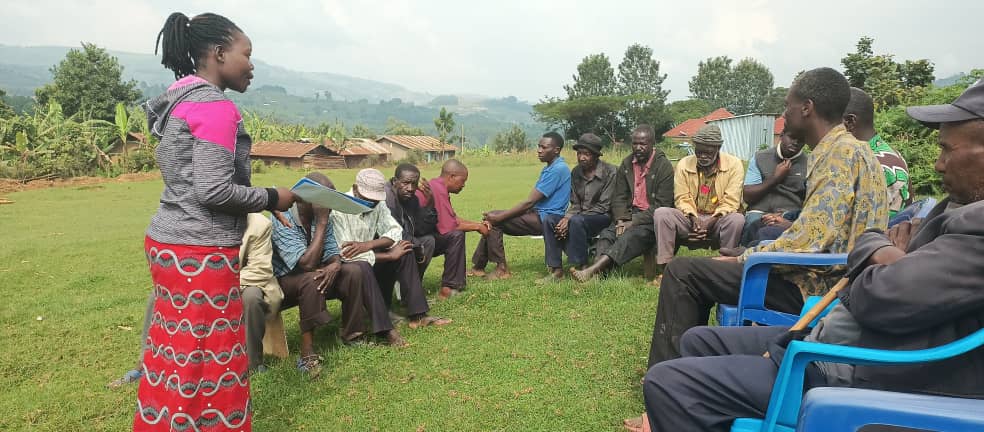
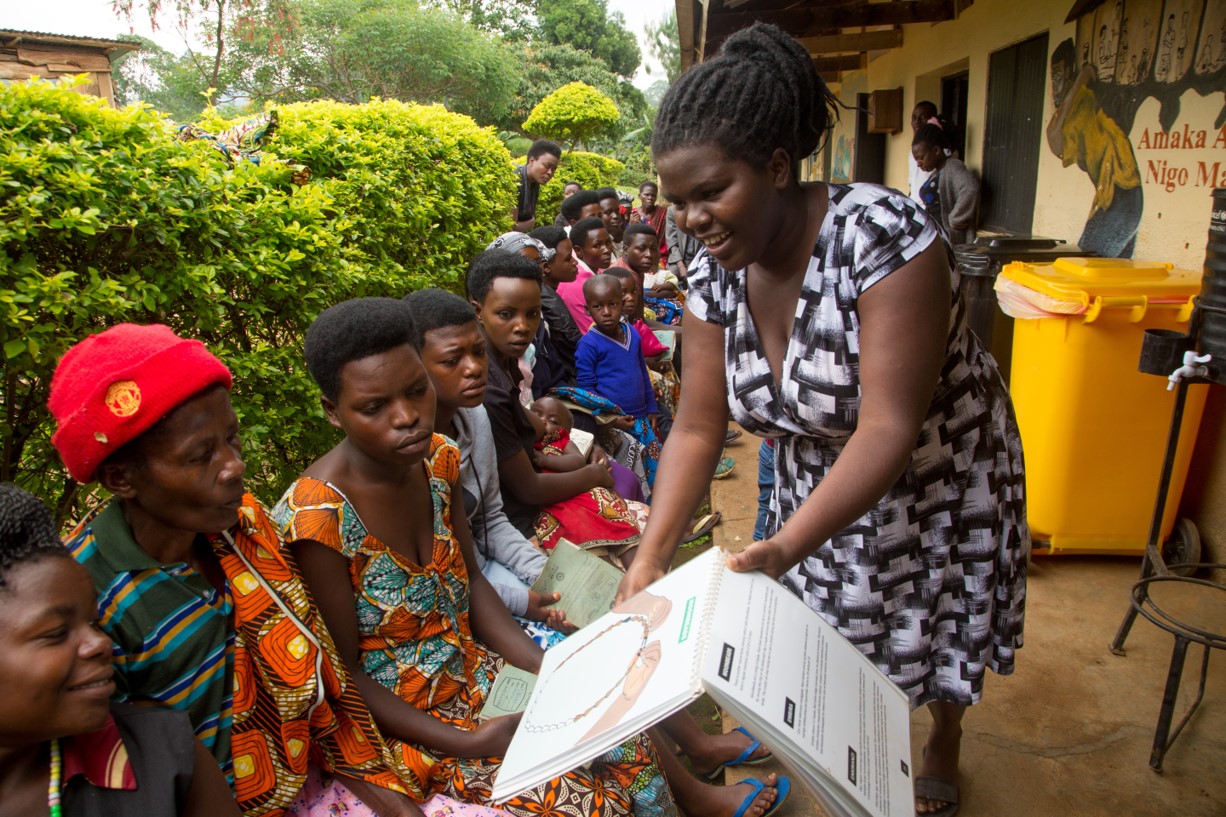
Red Squirrels in the UK: where are we now?
February 1, 2023
The United Kingdom is host to two species of squirrel, the indigenous red (Sciurus vulgaris) and invasive grey (Sciurus carolinensis) from North America.
As the maps show, the story for red squirrels over the past seven decades has been disastrous following the introduction of invasive greys, allegedly introduced to the UK in the 1870s as ornamental species, expanding rapidly through native territories.
Nature England in 2018 published estimates that The British Isles hosts populations of 287,000 reds and 2.7 million greys. While outnumbered over 10 to one, reds maintain a number of strongholds across the country. Apart from western Ireland, Scotland and the north more generally, islands have naturally become important havens such as Brown Sea Island, The Isle of Wight and Anglesey.
Anglesey reds are a remarkable story of recovery becoming almost extinct by 1997 with 40 individuals remaining in one woodland from one female bloodline. Through systematic efforts to eradicate greys from the island alongside reintroductions, the red squirrel population now sits at around 700-800 individuals.
In Scotland, a recent survey shows the number of reds is on the rise thanks to efforts from local conservation groups. The fourth annual survey of 659 participants reported sightings of 255 grey and 659 red squirrels respectively across the Highland Boundary Fault Line stretching from Argyll to Aberdeenshire.
Greys outcompete reds by carrying a strain of viruses known as Parapoxvirus, the adverse effects of which they appear to be immune, unlike reds which perish from the disease. Greys also consume vast quantities of ‘unripe’ fruits which reds cannot, denying the latter a staple food source they have evolved to depend upon. Reds also reproduce at a far slower rate when exposed to stressful conditions.
Given the high numbers of greys as well as much public opinion against specific eradication methods, new techniques such as ‘fertility controls’ have been trialled over past years with the Animal and Plant Health Agency (APHA) currently in its fifth and final year of the research phase for oral contraceptives.
Though the story for red squirrels over the past several decades has been bleak, these small victories, as well as a groundswell of organisations and volunteer groups across the UK, push towards a tipping point in favour of reds in coming years.
A combination of efforts to repopulate forest corridors linking up isolated red populations, effective grey squirrel fertility controls and supporting monitoring groups on the ground, shows that reds could be on the verge of making a gradual but promising return.
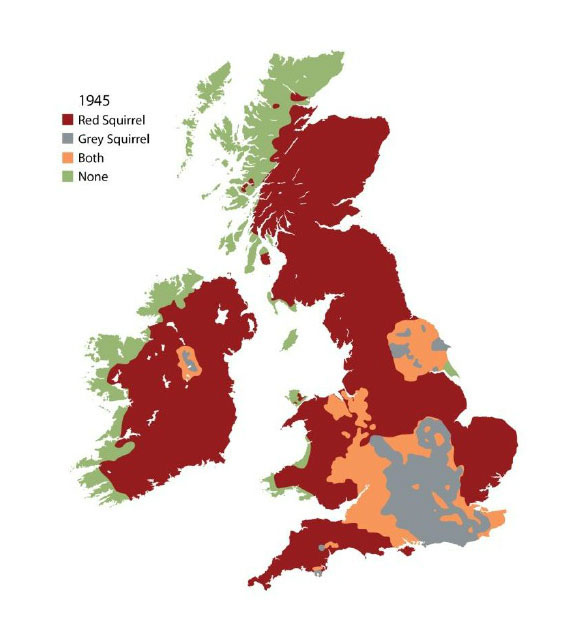
Maps by Shuttleworth C. @ Red Squirrel Survival Trust.
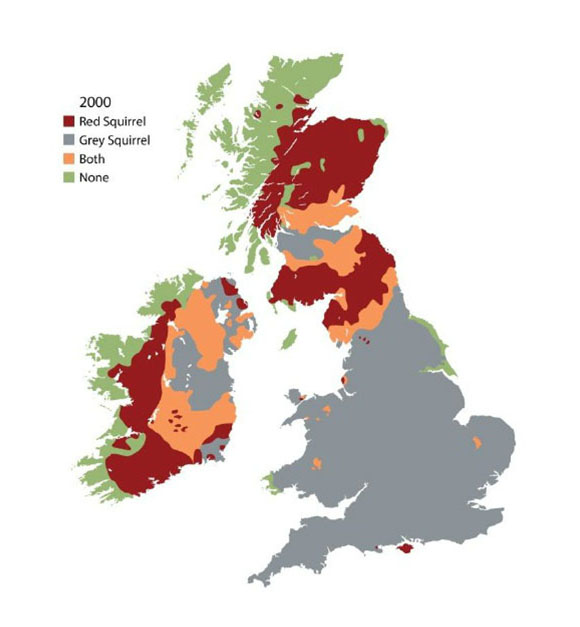
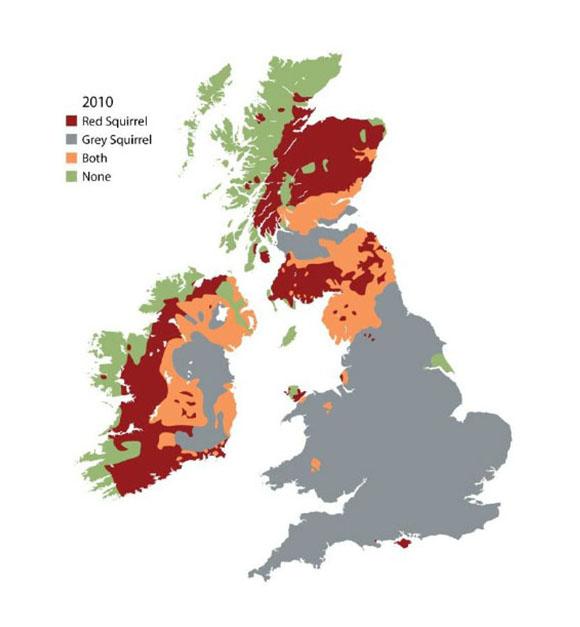
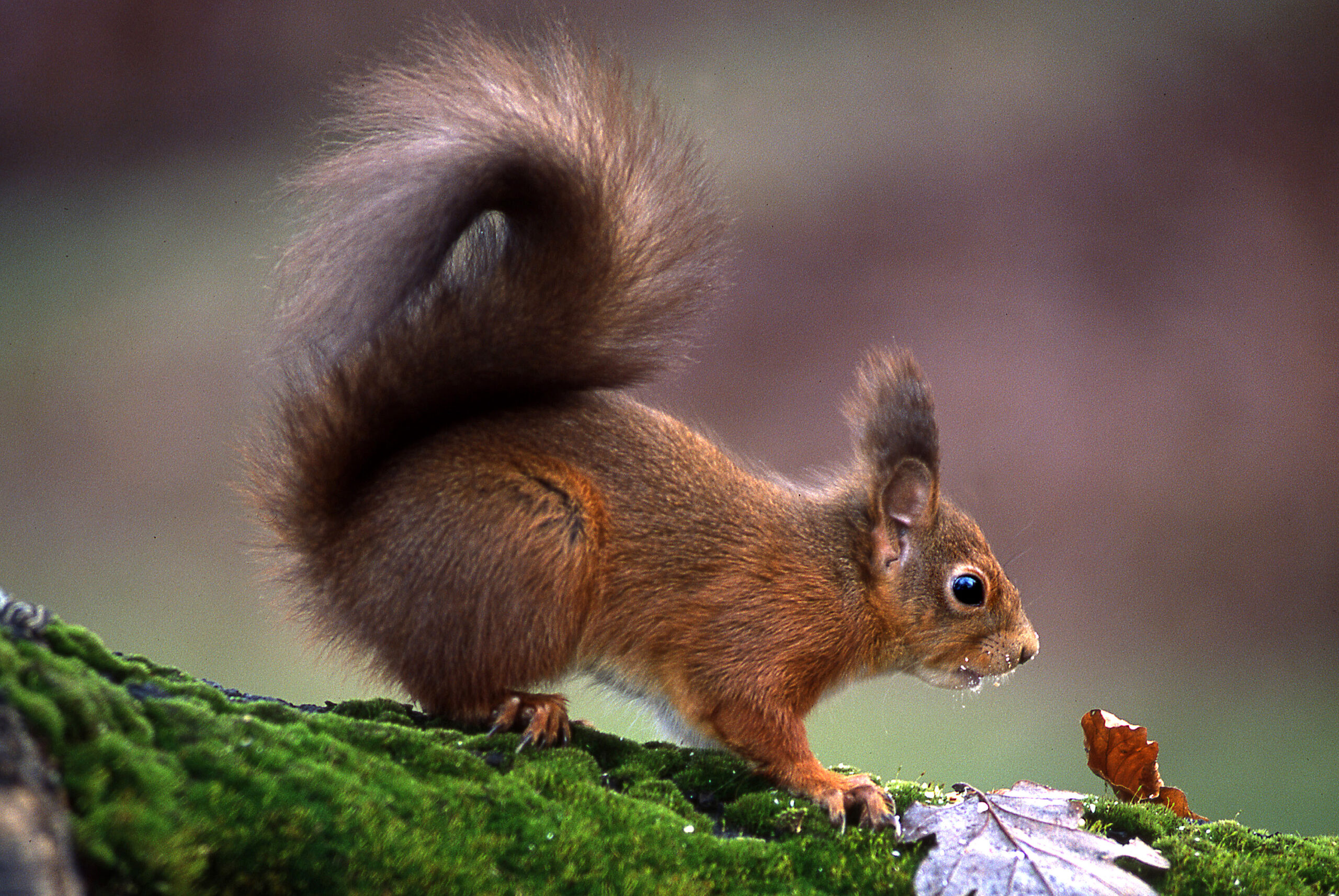
Red Squirrel © Allan Potts
Tacugama Chimpanzee Sanctuary: Saving Apes in Sierra Leone
December 7, 2022
Walking through a remote village in 1985, Sri Lankan Bala Amarasekaran and his wife came across a sick baby chimp tied to a tree. Horrified to see the distressed ape they bought ‘Bruno’ for $20.
Due to the high demand for trafficked animals for bushmeat and as exotic pets along with severe poverty exacerbated by the civil war (1991-2002), Bala soon found himself housing seven rescued chimps. Over the years he has managed to secure new premises and expand facilities. Now Tacugama Chimpanzee Sanctuary cares for over one hundred chimps with a large team of scientists, vets and rangers.
‘When we meet the chimps they are often in deplorable conditions, tied-up, maltreated’. – Daniella Samura, Head of Comms for the Sanctuary. She says captive chimps sell for around $200. ‘In the wild, they stay with their mothers until seven years old, so when humans capture them they keep them in unethical conditions, and don’t give them proper food.’
Being the only major wildlife sanctuary in Sierra Leone, the organisation advocates for not only chimps but for a range of animals, habitat protection, conservation policy and research.
The west-African nation has seen severe large-scale deforestation over the past decades as locals claim more land leading to the depopulation of wildlife pushing chimps onto the endangered species list.
People continue to encroach into the Western Area Peninsula National Park where Tacugama is located, fell trees and sometimes poaching animals.
Worsened in recent years by the effects of the pandemic, destructive practices have spread to other national parks where Tacugama work such as the Loma Mountains, Gola Rainforest and Outama-Kilimi.
‘Sometimes we get a call from right out in the provinces where people see a chimp.’ Says Samura. ‘We are always in the field, especially in the outreach department, always there are guys in the field talking with people from different organisations to ensure that things get done.’
The sanctuary was closed to visitors during the pandemic as chimps are vulnerable to human-borne diseases as they share 98.6% of our DNA. Staff are diligent with hygiene safety and still use facemasks.
‘It’s also fun to work here, I take pictures of them for social media. But they are very intelligent, if they don’t know you, they throw rocks at you. Sometimes it’s just beautiful to look at them.’
‘We do large amounts of outreach to build awareness and educate.’
With growing advocacy, Sierra Leonians are beginning to embrace pride in their national animal – a flagship species, meaning the protection of chimps means greater sustainability for the wider ecosystem.
Support for the sanctuary comes from eco-tourism such as tours, bird-watching and hiking as well as donations from well-wishers and an ‘adopt a chimp’ initiative.
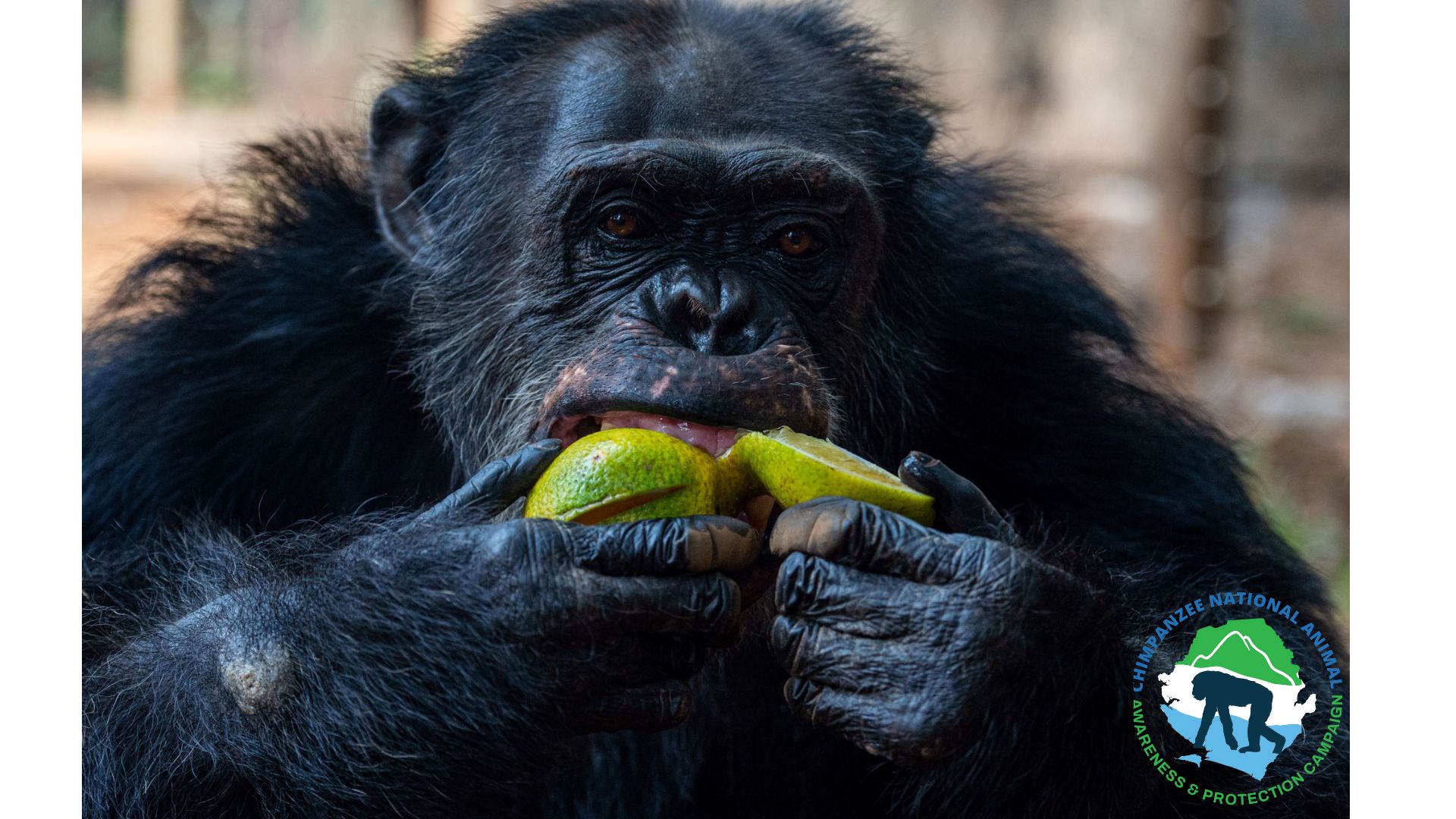

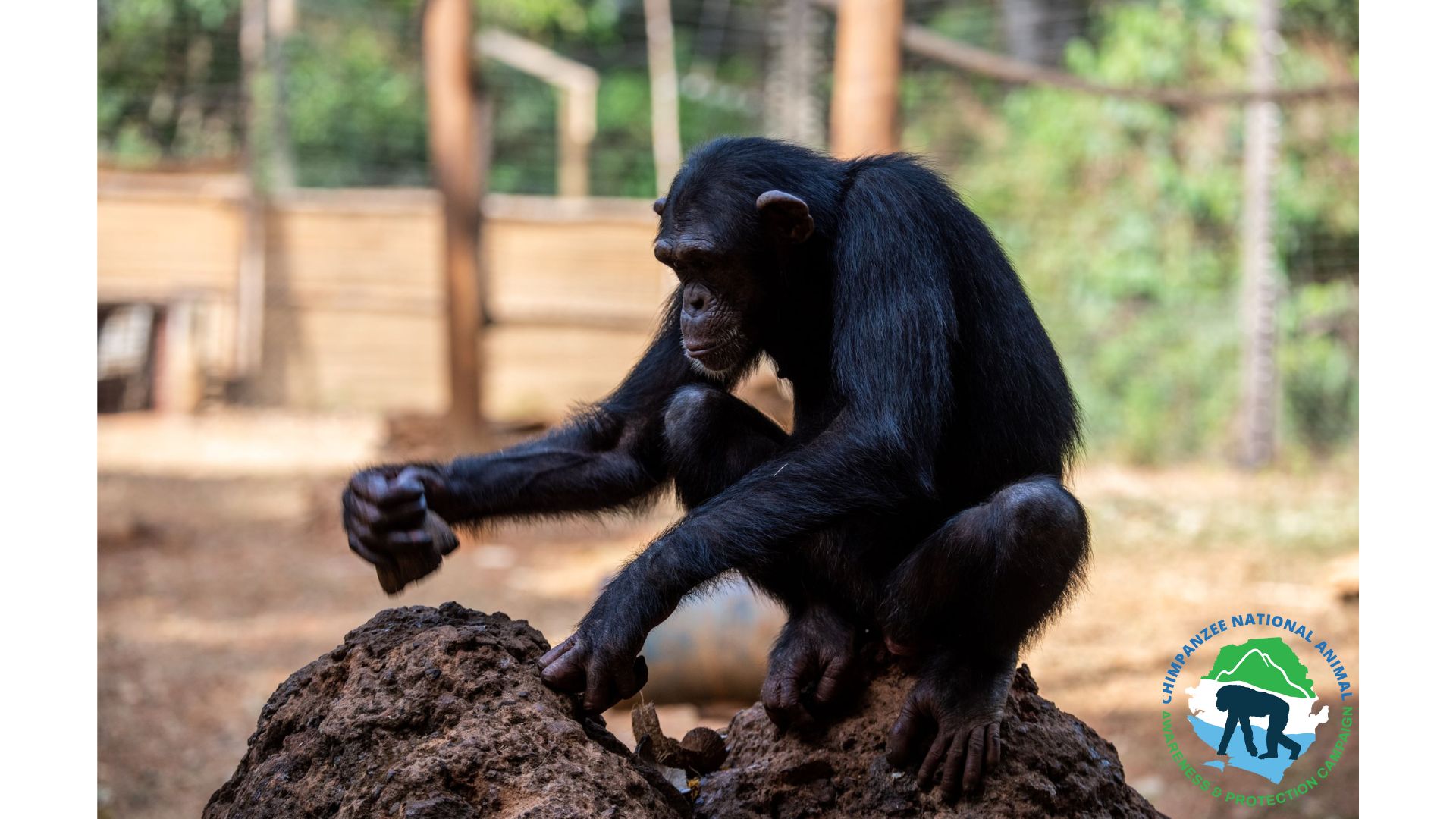
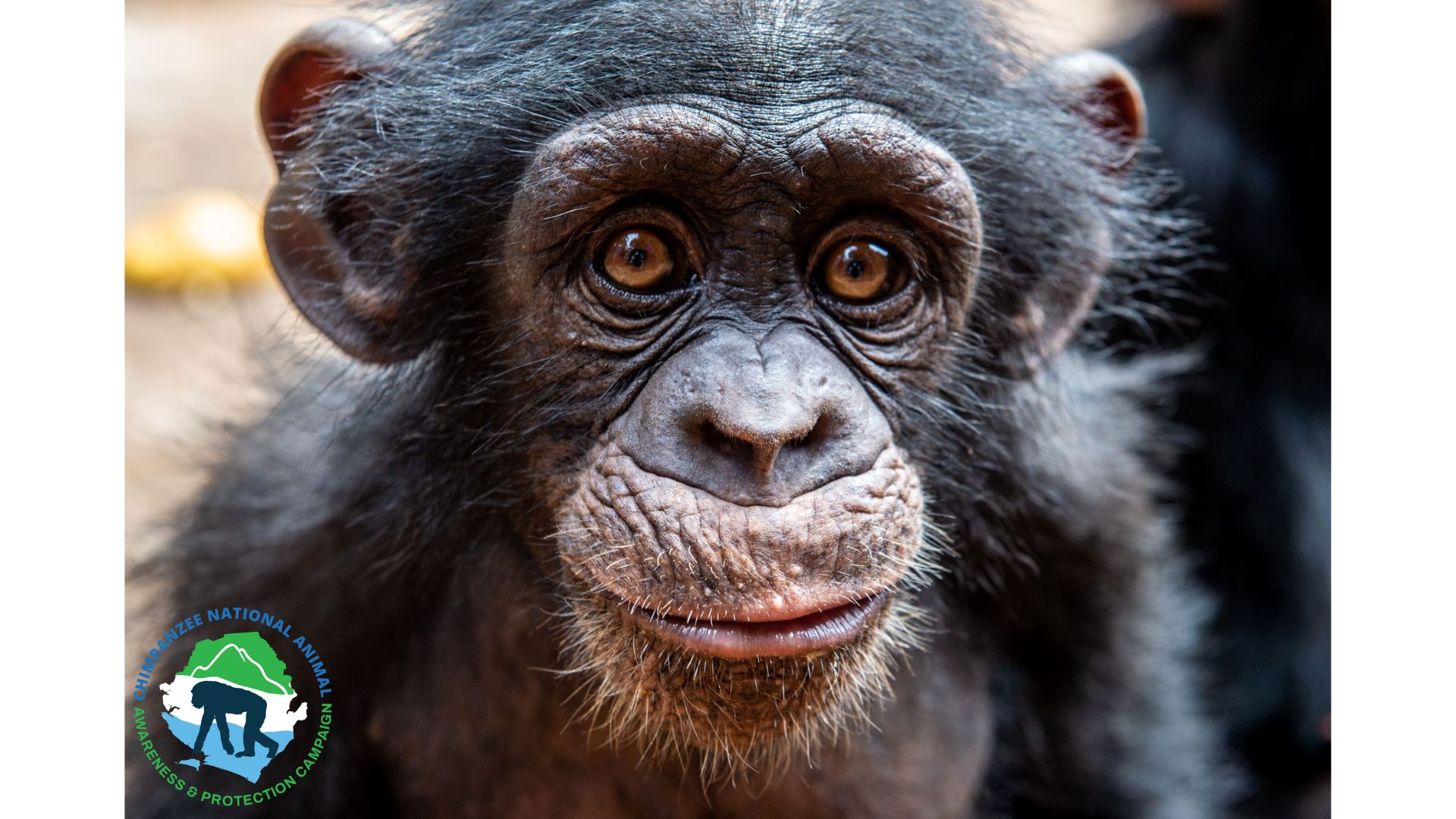
It`s time to replant our lost elm trees.
November 11, 2022
Ulmus minor can be cross-bred with naturally immune Asiatic species to create robust hybrids for mass large-scale elm reintroductions into our woodlands.
Thirty elm species ranged across the northern hemisphere from the Arctic to The Middle East and tropical Pacific. Believed to have emerged from somewhere in Asia, Dutch Elm Disease, or sac fungi, Ophiostoma novo-ulmi (DED), would by the 1990s have killed up to 25 million UK elms.
The first strain was identified in mainland Europe in 1910 as it spread across the continent sparing Finland and Greece. However, being much milder, few elms would perish as most infections claimed only a few branches. This first wave would die out naturally in the forties.
Asian elms developed natural immunity, but the accidental introduction of the disease into Europe through ports on Canadian elms used as timber, popular in the small-boat industry, in 1967 had devastating consequences.
Spread by elm bark beetles, spider-like feeding galleries begin to pepper the outer surfaces of the trees. Symptoms first appear with the arrival of summer beginning with the wilt and browning of leaves before they fall prematurely. Shoots die back and can curl to form ‘shepherd’s crooks’.
The microfungus triggers the tree’s immune response by blocking xylem with gum to stop its spread. This prevents the flow of nutrients and fluids eventually killing the tree.
The largest surviving concentration of elms can be found in Amsterdam. As for those that have survived in the UK, some ancient individuals being hundreds of years old can be found in areas such as Brighton and Cambridgeshire. It is unclear how they have managed to survive and is something researchers are keen to determine.
As for younger elms, hedgerows provide safe havens as they shield roots which then send up ‘suckers’ which are protected by vegetation until reaching rarely more than 5m before succumbing to attacks by DED. Established hedgerows maintained through low clipping have guarded elms in this manner for more than forty years.
Leading UK organisations on the issue believe the most appropriate way forward would be to fully sequence the elm genome of all variants, especially Ulmus minor, being the most DED-resistant. These can then be cross-bred with naturally immune Asiatic species to create robust hybrids for mass large-scale elm reintroductions into our woodlands.
Gene programmes throughout North America have already bred European elm varieties with DED-resistant cultivars (genetic strains). Though English elms can grow more than 40m these new hybrids are much shorter and better suited to tougher sites where other trees cannot grow.
According to a report from the Future Trees Trust, “The common goal is to provide resilient, British-grown elms for conservation, amenity and forestry plantings. The key to this is identifying elms with high tolerance/resistance to DED. It is also necessary to determine whether there is sufficient commercial demand to move elm from its current niche as a very minor nursery tree crop to more of a mainstream species.”
Elms play a crucial role in ecosystems. Their seeds and buds provide an abundance of food for birds and attract many butterfly and caterpillar species. This is particularly important for birds and elms are particularly favoured by warblers.
Elms would also be good news for lichen which live on both elm and ash bark, the latter of which have been perishing at the hands of ash die-back infections. Lichens provide a crucial food source, netting material and shelter for many invertebrates.
Though large-scale initiatives are yet to be put into practice across the UK, some smaller projects using the hybrid Ulmus New Horizon cultivar raised by Wisconsin Alumni Research Foundation have been slowly taking shape.
Elms4London and National Tree Week are two such initiatives. Hillier, the Nursery and Gardens company launched a campaign with Dame Judi Dench in 2019 to restore elms across the UK.
If you are interested in finding elms in your area The Conservation Foundation has put together this database of recorded mature elms across the country.
‘What is known is that through the determination, dedication and passion of those involved in elm and their work over the past decades, the timing for elm to make a comeback has never been better.’ – Future Trees Trust.
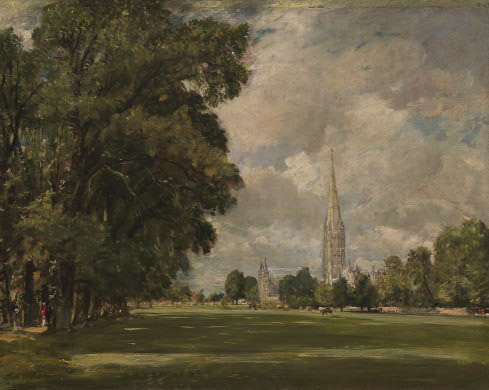
Salisbury Cathedral from Lower Marsh Close, John Constable, 1820, Andrew W. Mellon Collection, National Gallery of Art, Washington, D.C.

Dutch elm disease on a golden elm

Beetle feeding galleries on wych elm trunk

A Wood Warbler in Inversnaid, Loch Lomond, Scotland
The Nigerian sanctuary saving trafficked and injured wildlife
November 4, 2022
‘There are animals in our textbooks that don’t exist here anymore.’
In 2012 Chinedu Mogbo opened a wildlife sanctuary in eastern Lagos. Now after a decade, Green Fingers Day saw hundreds of young people come together for seminars and celebrations to meet and learn about some of the 54 resident species.
‘Wildlife education is the problem we have here in Nigeria. It’s as if the issues are almost non-existent.’ Chinedu says over a Zoom call with limited bandwidth. ‘There is a great disconnect between what is written in books and the reality on the ground. There are animals in our textbooks that don’t exist here anymore.’
The Green Fingers Conservation Initiative (GFC) hosts rescued species such as pangolins, African grey parrots, white-throated guenons, bateleur eagles, turtles and vultures.
Chinedu and his team of growing volunteers lack capacity and often have to conduct their own research to understand species’ requirements regarding feeding and care etc. Limited resources are the sanctuary’s main drawback as they receive no government funding and previously relied on small donations and Chinedu’s second job as a teacher.
However, they have started raising funds and awareness with campaigns ‘Race for Wildlife’ and ‘Play for Pangolins’. Pangolins are believed to be the world’s most trafficked species of which Chinedu has housed a number – at first for a few weeks but now up to 10 months as staff have been trained in conducting medical interventions and caring for babies.
There are various wildlife networks across the country such as Friends of Wildlife Nigeria organised by the British Consulate that meet to discuss opportunities and share knowledge.
This crucially provides a pool of vets that the GFC relies upon. But zoos are privately or government-owned and ‘are for business with conservation not being what they do.’
Despite challenging circumstances in an isolated setting, this year the GFC was awarded for service to the Environment and Mankind by The Art of Living Foundation presented by former Nigerian president Olusegun Obasanjo. ‘It was mindblowing to receive the award from him.’
Many of the species arriving at the GFC located on the southern coast do so from inland Nigeria where ethnic and religious disputes are rampant. ‘ISIS are still present, and huge numbers of poachers have conflicts with rangers in national parks. There’s a lot of kidnapping in the north especially.’
The conflict displaces many animals through habitat destruction and though the GFC offers sanctuary, certain species are not endemic to coastal climates. ‘We always have to find a way to get them back there but it’s almost impossible because of the kind of threats they face…imagine taking an animal to be released and being kidnapped on the road.’
Due to the presence of bandits and the breakdown in rangers’ capacity to monitor national parks, species reintroductions risk essentially putting animals back into the hands of the criminal-groups organisations like the GFC save them from.
Speaking on the effects of the war in Ukraine Chinedu says that the Nigerian economy and therefore street prices are extremely vulnerable to fluctuations in global currencies. ‘We are almost a non-productive state where everything is imported.’ For the GFC this means supplies for animals such as food and milk.
But despite the plethora of obstacles, Chinedu is optimistic with plans to continue training staff, expanding capacity and building more training programmes for youngsters.
‘One strength we have here in Nigeria is utilizing the force of young people.’
More information can be found at:
https://www.instagram.com/greenfingerswi/?hl=en
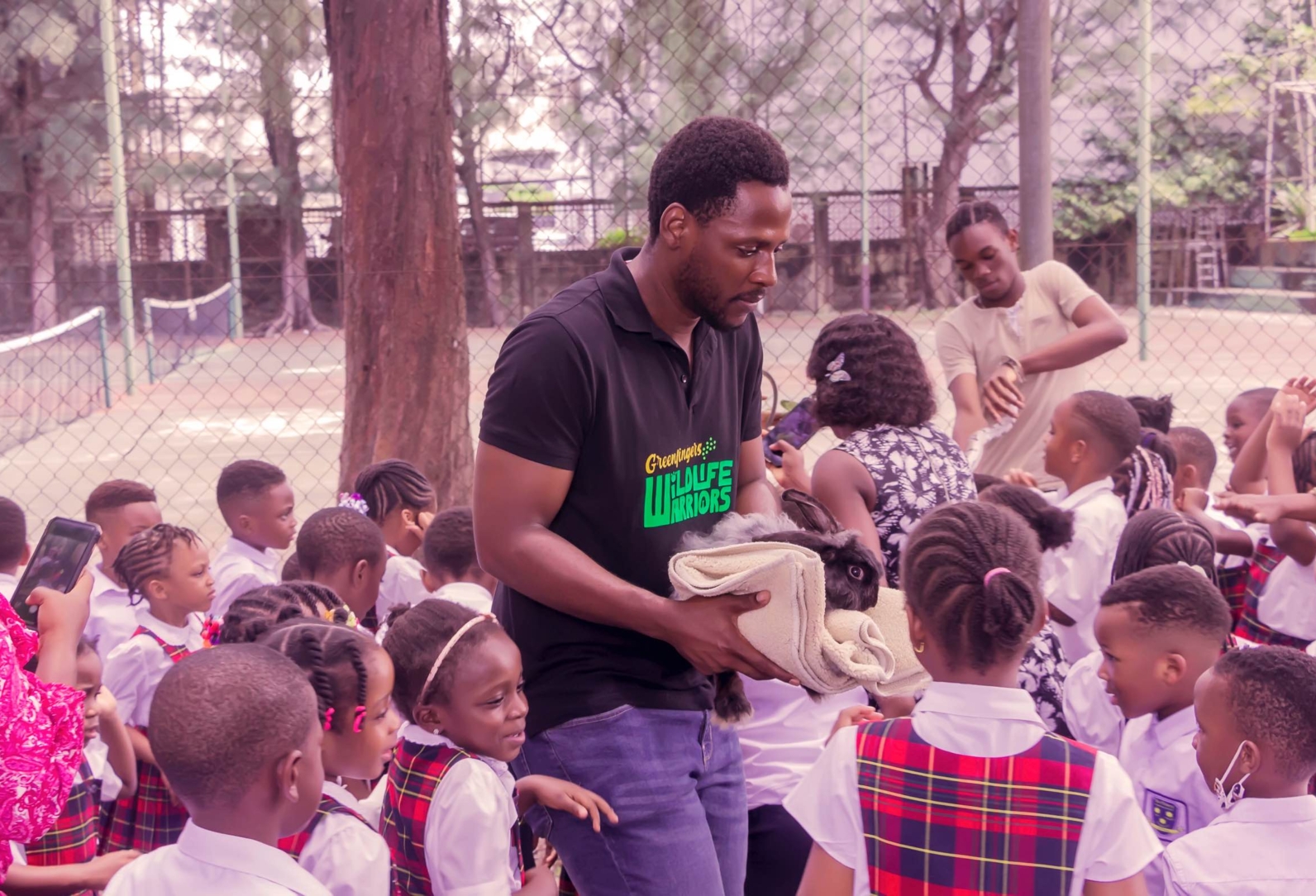
Chinedu Mogbo. Lekki, Lagos, Nigeria
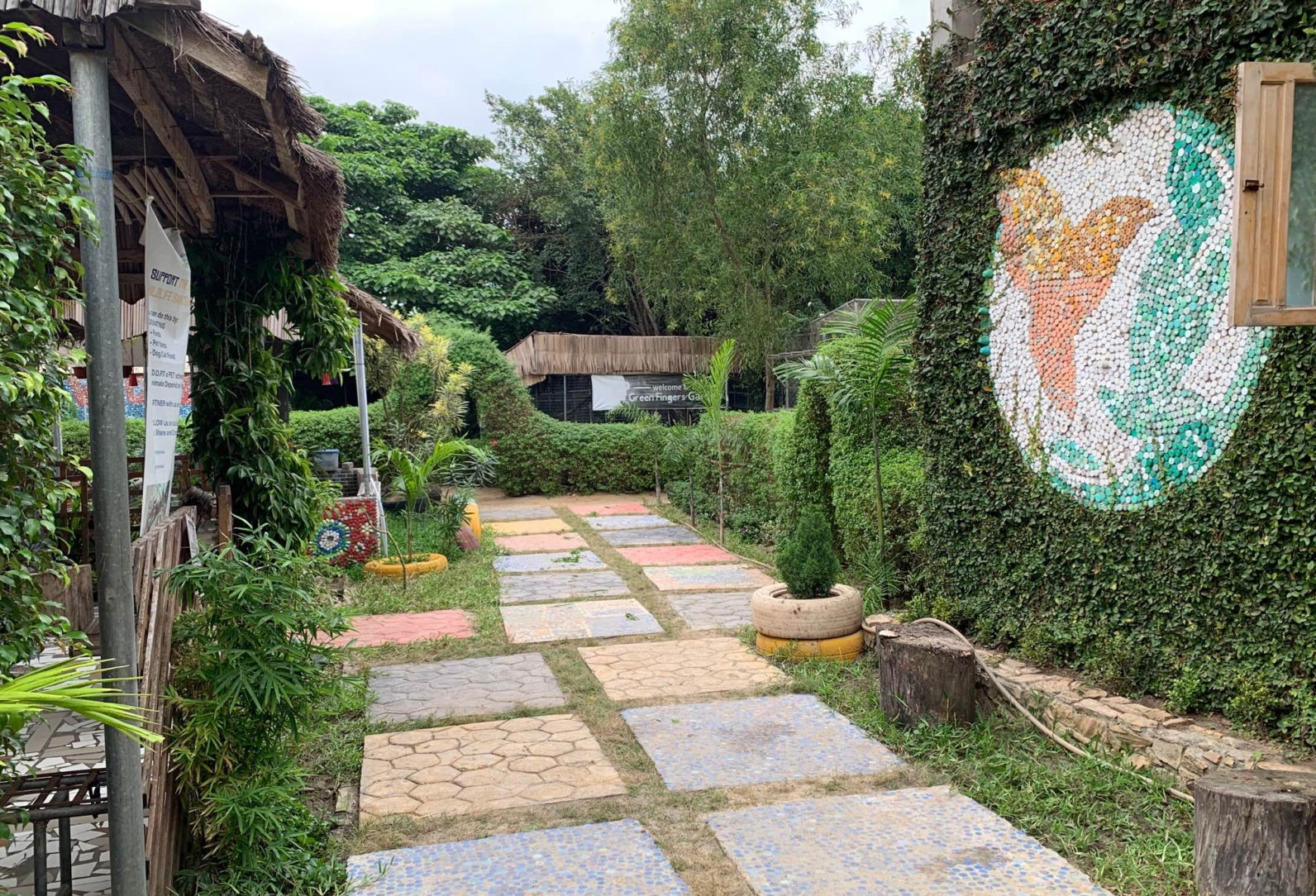
Green Fingers Sanctuary. Lekki, Lagos, Nigeria.
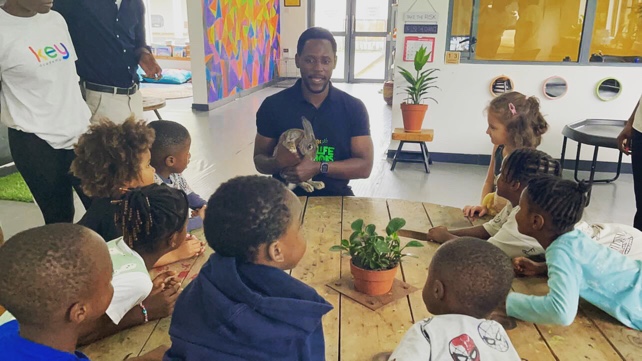
Chinedu teaching students.
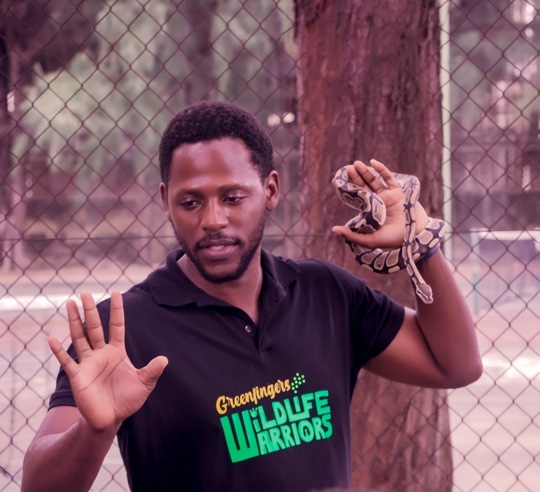
Chinedu with his new friend.
Hope for Malawi: Sustainable Fisheries and the Growth of Freshwater Aquaculture
October 11, 2022
Sub-Saharan African aquaculture projects are bolstering semi-subsistence sustainable food economies for poor rural consumers and markets. Targeted supply chain interventions, such as sourcing fingerlings (baby fish) and expanding hatcheries have created more jobs for nations with high food insecurity, and are vulnerable to extreme weather events.
Land-locked Malawi is beset by economic challenges having no ports or access to sea trade routes. ‘It doesn’t have great reserves of minerals compared to its neighbours. Mozambique has one of the largest natural gas reserves, Zambia has huge reserves of copper.’ Says David Bargh, development specialist for the German Government (GIZ) funded Aquaculture Value Chain Development project. ‘It relies on tobacco, coffee, tea, pigeon peas, cowpeas, none of which are of significantly high quality to demand a price premium.’
Bargh‘s consultancy group has trained 4,500 smallholder farmers with pond areas from 200m² to 5ha and being farmer-led, the methods used are traditional techniques which avoid damaging ecosystems to produce healthy fish batches.
Locals were forced to import feed but now five native producers cover sourcing needs increasing overall productivity by over 100%. The project was launched in 2019 and now 37 hatcheries annually produce 1.5/ 2 million tilapia fingerlings for breeding to help support the industry.
Though Malawi has seen steady economic growth in recent years historical factors have left the nation with deep-rooted obstacles. ‘The country has moved backwards since one-party rule after it gained independence from Britain in 1966 and gained democracy in 1994.’ Says Bargh. ‘The first president, Hastings Banda, gave himself the presidency for life. He created a lot of stability, healthcare, education, and infrastructure, and people’s basic needs were met. Since then Malawi has moved towards “My Turn” politics, as in “My Turn Now”. From corruption to corruption.’
Colonialism brought terrible consequences to native populations in many Sub-Saharan countries, however, some have benefited from the legacy of more advanced structures and systems where Malawi has not.
Though having generally positive business relations with its neighbours owing in part to a widespread diaspora, Malawi has challenging regulatory and legal frameworks for trading goods making transfers expensive. This has led authorities to search for other sources of prosperity.
Lake Malawi is a huge resource and oil companies have been prospecting for reserves. However, there are great fears that this could not only damage the nation’s greatest natural resource but cause water to drain out through subterranean cracks bringing fatal consequences for wildlife and the country. National debates are still ongoing.
Aquaculture is being increasingly viewed as a more reliable industry for developing nations due to its ability to be integrated into the challenges of local populations as long as targeted interventions are maintained. Projects continue to spread across southern Africa with 10 similar varied-sized schemes from $100,000 to $10/15 million being implemented.
When asked how international crises such as the Ukraine conflict or the economic fallout from the covid pandemic have affected society, Bargh says prices have increased dramatically but Malawians are blaming domestic forces rather than being open to the wider picture. This insular mindset is preventing organisations from looking for cooperative solutions with neighbours and the outside world.
Bargh mentions that 15-20% of pond area was lost due to flooding and mud burials brought on by the annual cyclone season. ‘However, I feel positive about the future of aquaculture owing to a lot of space for innovation… Where I currently work on smaller integrated systems locals can now buy less meat, they can save money, send their kids to school, university, there is a lot of potential.’
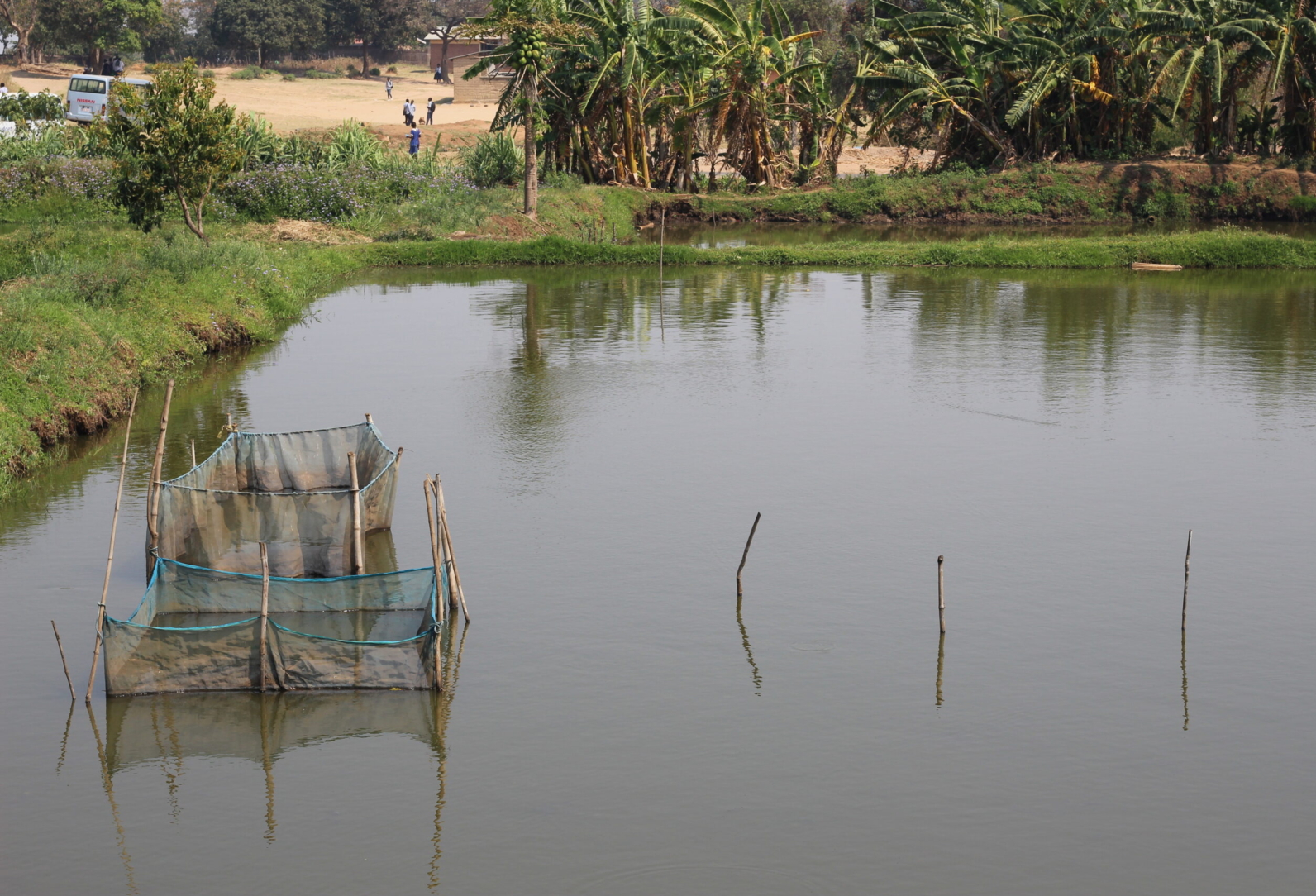
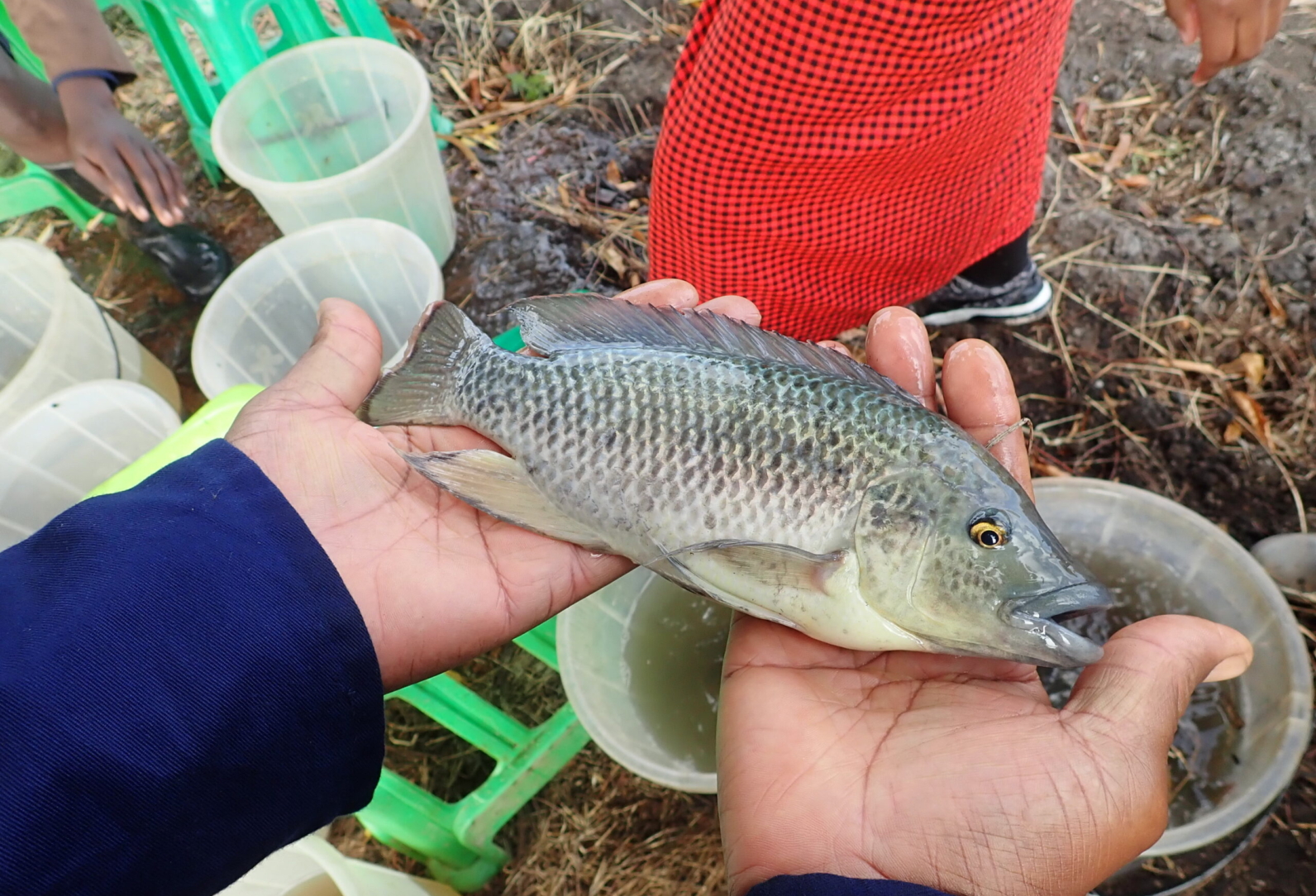
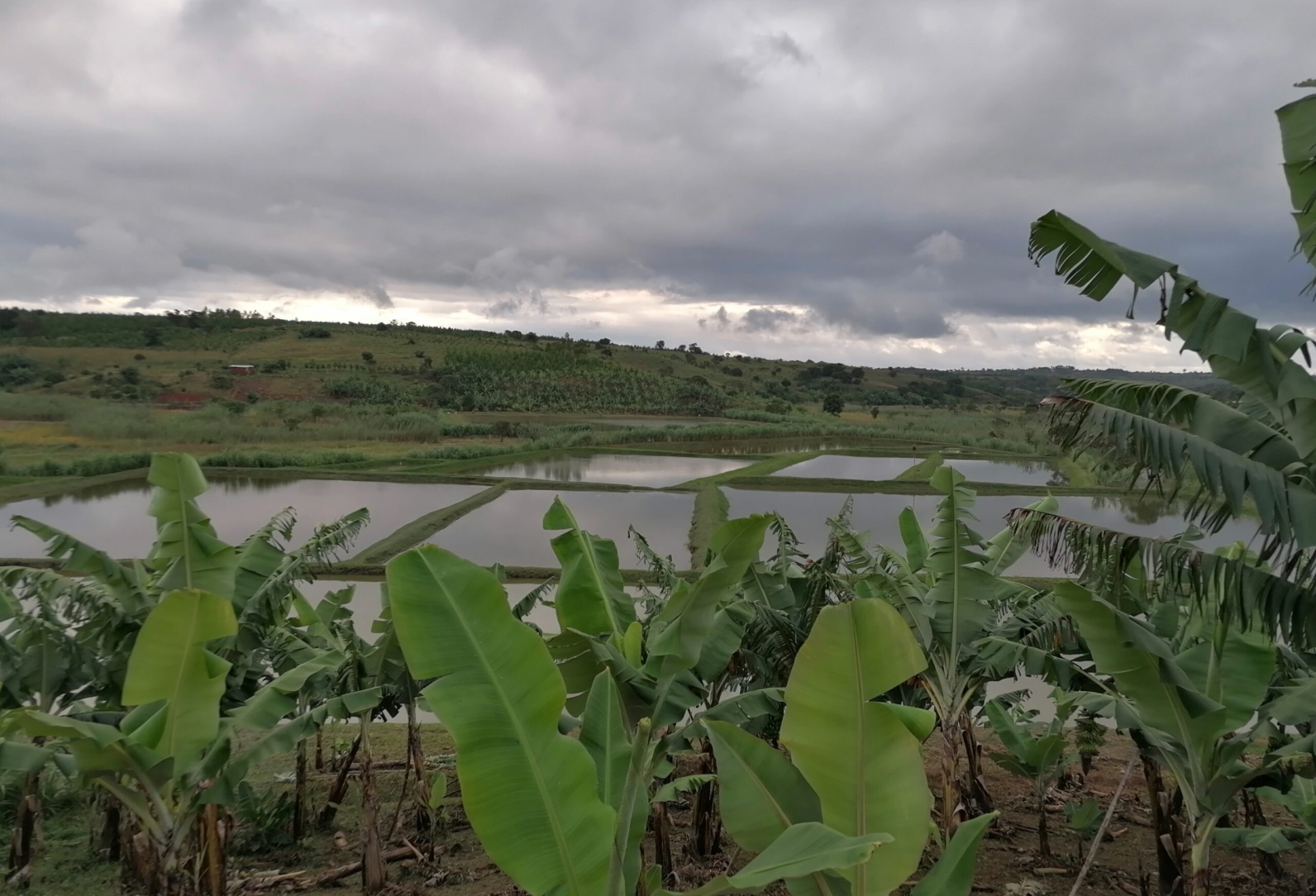
Small Mammal Reintroductions: Hazel Dormice
September 29, 2022
UK native hazel dormice numbers have halved over the last two decades mainly owing to the decline in hedgerow and woodland habitats, as well as the wider influences of increment climate change.
As K-Strategists, dormice have slower breeding cycles with one annual litter but can live up to five or six years in the wild. This differs from R-Strategists such as water voles which breed every three weeks though only live for a couple of years. This has made dormice more vulnerable to habitat changes especially given their low population density of one breeding pair/20ha.
“They are a sensitive species that need warm, dry summers and constantly cold winters because they hibernate” said Hazel Ryan, Senior Conservation Officer at the Wildwood Trust. “Summers are getting wetter which is not good for dormice because their fur is not particularly waterproof. This means they can lose heat rapidly.”
Warmer winters can cause dormice to emerge from hibernation before the natural arrival of spring food such as nuts and berries. Their primitive digestive systems and reliance on diverse diets mean they are ‘indicator species’ and are evidence of healthy surrounding habitats. They are also believed to play a role in pollination.
Alongside the People’s Trust for Endangered Species (PTES) which secures sites for release, Wildwood Trust has been running a captive breeding programme since 1993 which has reintroduced over 1,000 individuals into the countryside.
Sites are generally located in areas of particularly low dormice populations such as across the north of the UK.
Breeding individuals are sourced from captive populations, often rescued, injured, caught by pets or often found orphaned by members of the public in hedgerows.
“We try to keep the conditions as near as to the wild as possible” said Ryan. “We use 6x6ft enclosures outdoors with logs for insects and camouflage with nest boxes similar to bird boxes but with holes in the back. They are then fed on seed mixes and fruit, [for example] blackberries, plums, and mealworms.”
Being outdoors the temperature is consistent with natural dormice surroundings, though indoor facilities are used in the case of medical emergencies.
New individuals are quarantined for thirty days before being brought to enclosures following screens for disease.
They are paired in spring to match their natural breeding cycles and checked for litters throughout summer by staff or licenced volunteers.
“Genetic diversity is important, there is a national stud book to record bloodlines and pair up individuals. We need to source new bloodlines every one to two years to make the captive population more diverse” said Ryan.
Once breeding has begun the family, along with the father who teaches survival basics, are moved to open soft release sites which are closely monitored and supplied with food for the first 10 days.
It takes around 18 days for dormice eyes to open which is slow compared to other small mammals. They are slow to mature and can stay with their parents for two/three months. During this time they learn to navigate their environments, find food and avoid predation.
Natural dormice nests are woven and distinctive. In the centre, they place shredded tree bark, particularly honeysuckle, covered in layers of leaves. Wherever possible they stay off the ground and like to nest in tree hollows or hedgerows. Only during hibernation do they build nests on the warmer more humid soil which protects against frost.
Across the UK licenced volunteers check on local populations and all released individuals are microchipped for monitoring. “Chipless animals are good news as we know they have been born at that site” said Ryan.
Adaptions from single family releases in previous years to more recent ‘cluster’ releases with many families released in groups, have shown improved results in overall dormice populations and genetic diversity.
“These are followed up with reinforcement releases of up to 40 individuals to further boost genetic bloodlines” said Ryan.

Hazel dormouse in hand Photo: Terry Longley

Weighing hand reared dormouse Photo: Hazel Ryan

Dormouse eating blackberriesPhoto Hugh Clark © Wildwood Trust
How the UK’s Landmark Bison Release Ecological Impacts are Being Monitored
September 20, 2022
The bison release this July into Kent’s Blean Wood is being monitored by robust collars, chlorophyll detecting drones and a UK first in new Wi-Fi technology.
‘Think of it as an Excel spreadsheet with a map attached.’ Said Robbie Still, Digital Transformation Officer at Kent Wildlife Trust (KWT), explaining the Geographical Information Systems (GIS).
‘The data that feeds back is location and time, we can see how close [the bison] are to each other. It monitors XYZ coordinates so we can recognise behaviour patterns.’ Bison are known to ‘ring-bark’ non-native trees causing them to die off. They dust-bathe and create new corridors through thick, tangled undergrowth. All should contribute to a mosaic of new ecosystems.
Only a ten-minute drive from Canterbury centre, Blean Wood is surprisingly off the beaten track. The dense forest canopy and near-constant mud obstruct radiowaves blocking telephone signals and access to Wi-Fi.
To address these challenges KWT partnered with SmartParks, a Netherlands-based company that specialises in remote sensing technology used in remote African game reserves. The group worked with bison on a separate Dutch sand dune project. The rough and tumble of bison life led them to develop specialised tough collars.
In the unlikely event of breakouts, staff must track the bison every 5/20 minutes. However, this requires a 4G database or radio receivers to ping coordinates, both of which are not viable in Blean. The KWT team implemented ‘Long Range Low Power Wi-Fi’ or LoRaWAN in a UK first. Three stations across Blean send small packets of data over several miles in a closed network. This technique delivers simple information through rough and remote terrain at a minimal cost.
‘We are taking samples in areas the bison are and are not. In Blean, we’ve got longhorn cattle in another area as a proxy. Then another area with no grazing at all as a control. We’ll also be taking drone samples and comparing how they change.’ Said Still. ‘We can overlay that with GPS tracking in bison collars to see where they are being most effective.’
Drones with multispectral cameras, which detect specific wavelengths across the electromagnetic spectrum, can now detect phenomena such as chlorophyll content in leaves and levels of ground moisture. In Blean, these will be used to monitor how bison impact flora and subsequently small mammals, birds and invertebrates.
‘We collect data using the Zenmuse XS5 [camera]. It’s like where you see things online showing how much the Amazon has shrunk. NDVI is a metric of infrared bands that detects greenness in plants outside our visible light spectrum.’ Said Lawrence Ball, GIS and Data Officer for KWT.

Conducting Drone Remote Sensing. Blean Wood© Lawrence Ball
